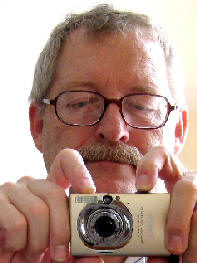|
|
|
Asia - Oct/Nov 2009
Click
here to see the trip continuing from Oct 28th
|
* * * October 1/2 -
SFO to Hong Kong Today I have started a long adventure
to Asia. I'm traveling with Tom O'Reilly. Our friend Ron Moy will
join us in Bangkok, shortly. Before we return home on November 20th,
we will have gone to Thailand, Myanmar, Cambodia, Laos and Vietnam.
Our flight was at 1:35PM on Cathay Pacific. While I'm away, my
cousin Roger and his friend Nick are staying at my house. Roger and
Nick drove me to the airport where Tom O. was waiting. The plane
took off on time for the 13:30 hour flight.
I was seated in the upper deck, in a little narrow cubicle. All
of the controls are on the left side: lights, LCD screen, electrical
plug, seat adjustment, etc. One button made the seat go flat. The
head rest was a pillow and a comforter was provided.
I could not find my sleeping pills (I think I left them at home!)
so I watched movies until I fell asleep. I saw: Angels and Demons,
Night at the Museum - Battle of the Smithsonian, Taking of Pelham
123, Hutong Days, Iron Man, Terminator Salvation, Fast and Furious.
I slept through most of the last one.
We landed about 7PM and passed through immigration and customs
quickly. TomO got some HK dollars from the ATM and we bought tickets
for the Airport Express train to Kowloon Station. We found out there
was a free shuttle bus that took us to the metro station near our
hotel. Unfortunately it was the wrong station and we ended up
walking a mile to the correct station.
In Kowloon, we are staying at the CityView Hotel right next to
the Yau Ma Tei metro station. Very convenient location.


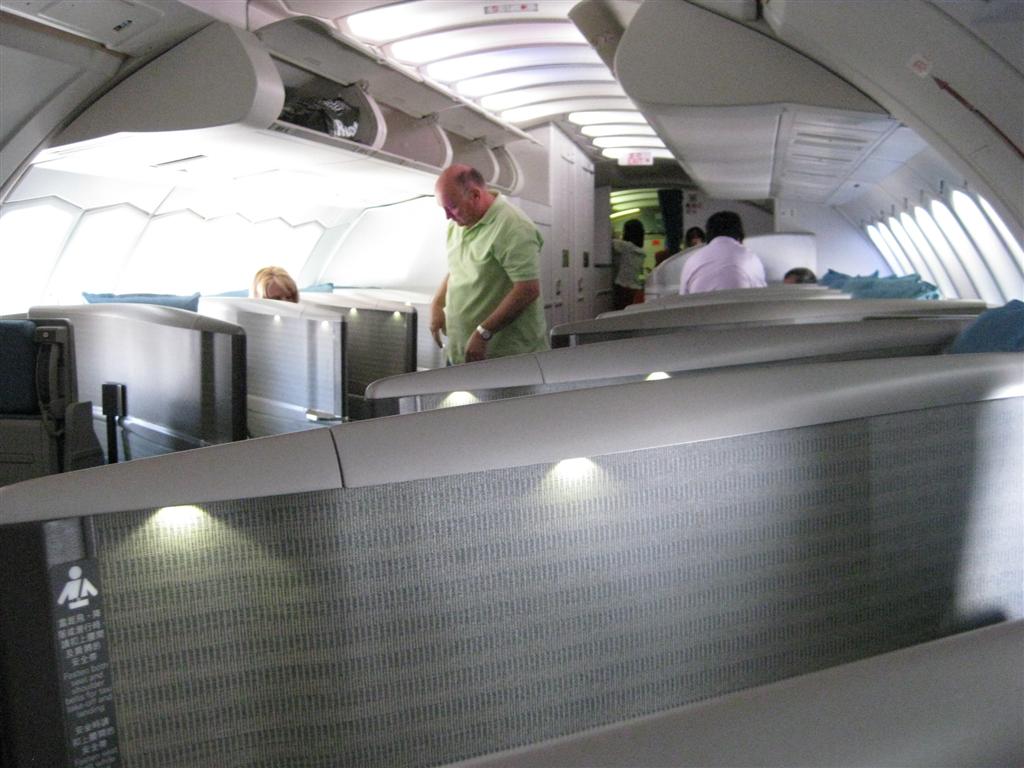
After breakfast at the hotel we set out to explore our
neighborhood. We are in the densest area of Kowloon and about 3
blocks from the Ladies Market. We were too early and a lot of shops
are not open. One alley was lined with open-air stalls and we will
go back later on when they open. And one street had vendors of fresh
vegetables and fruit
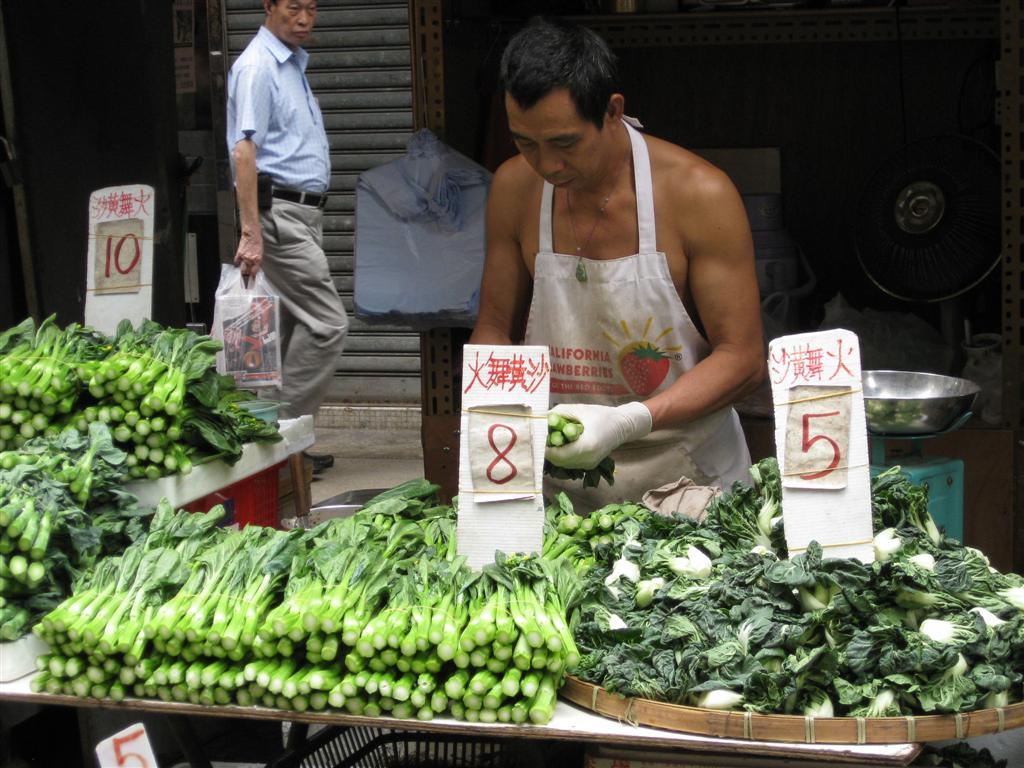
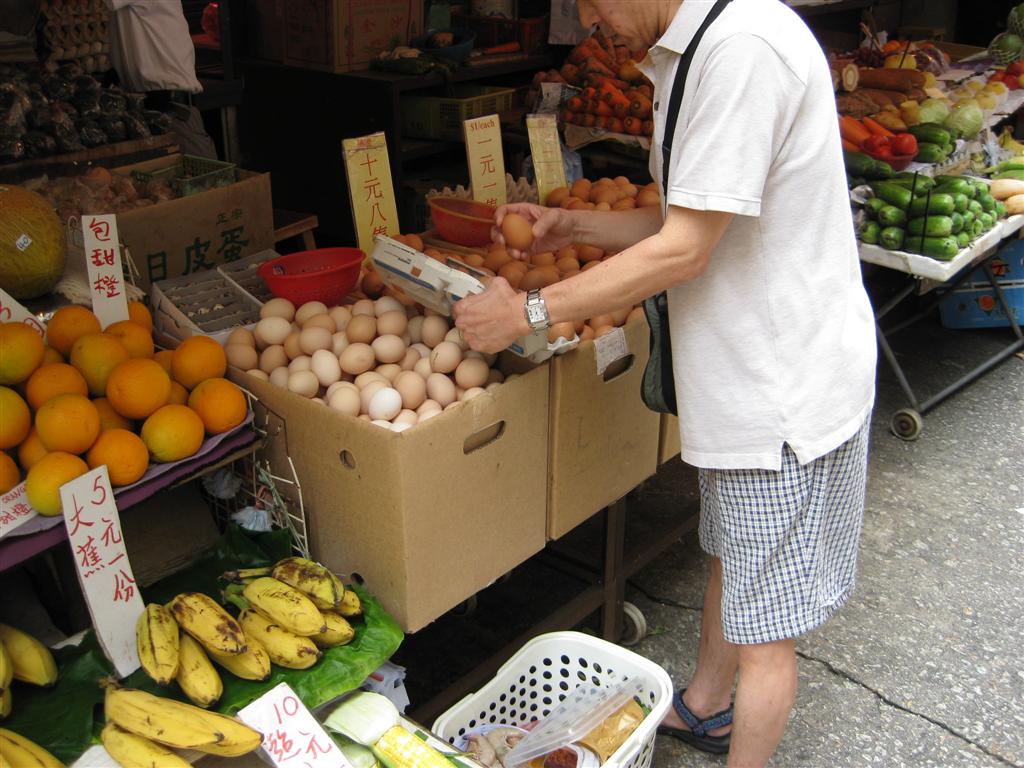
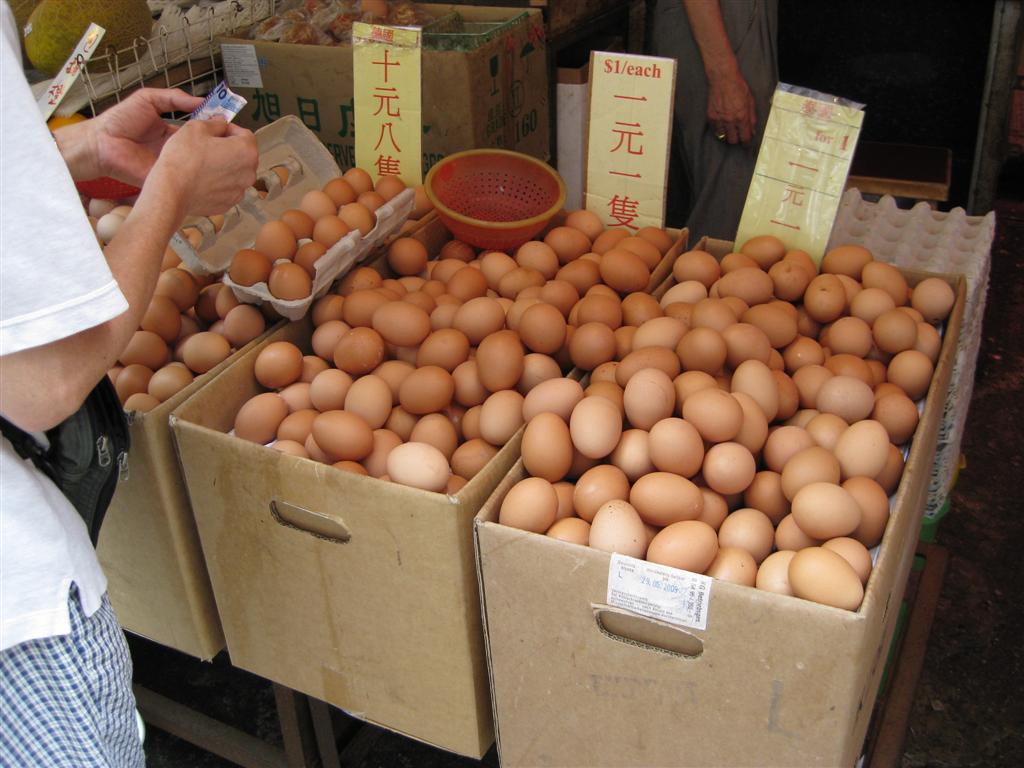
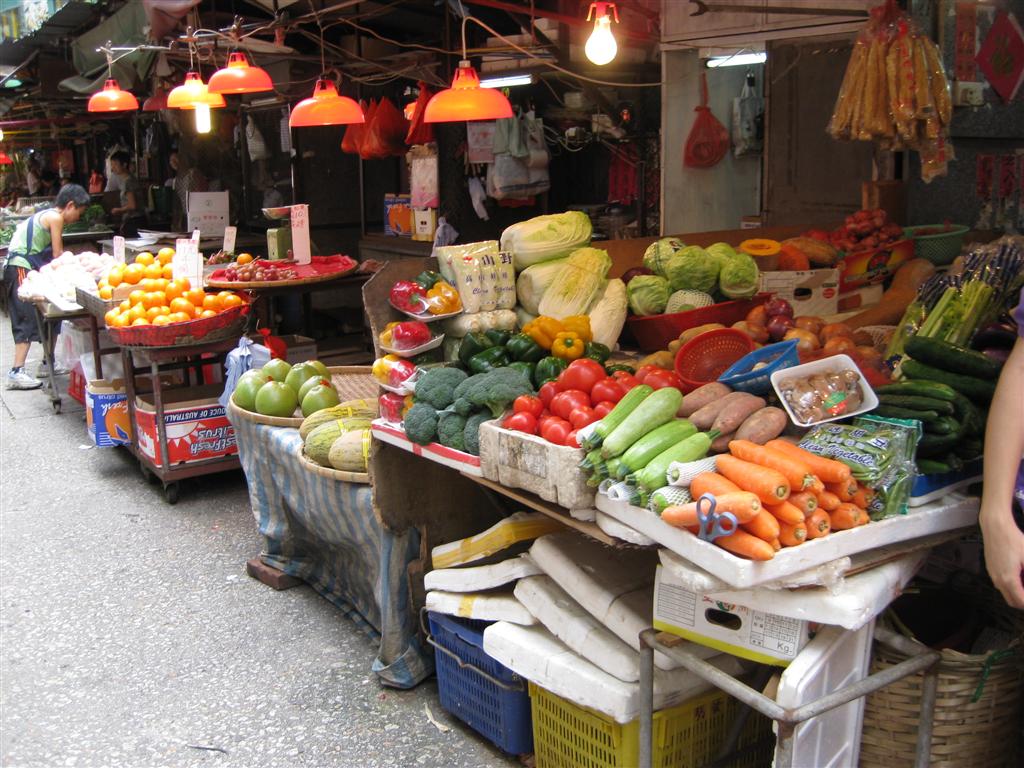 |
|
Sunday October 4
Ngong Ping On Sunday, we decided to take the cable car to Lantau Island.
This is the largest island in Hong Kong and is home to the new Hong
Kong International Airport (on filled land), the Disneyland Resort
and the tourist attraction Ngong Ping Village.
To get there we took 2 metro lines to Tung Chung, a city opposite
the airport where there are a number of highrise apartment
buildings. It was also the terminal for the cable car which takes
you over land and sea to the village. We chose the "Crystal
Cabin". You pay a little more to ride in a cable car with a glass
bottom. And you wait in shorter lines!
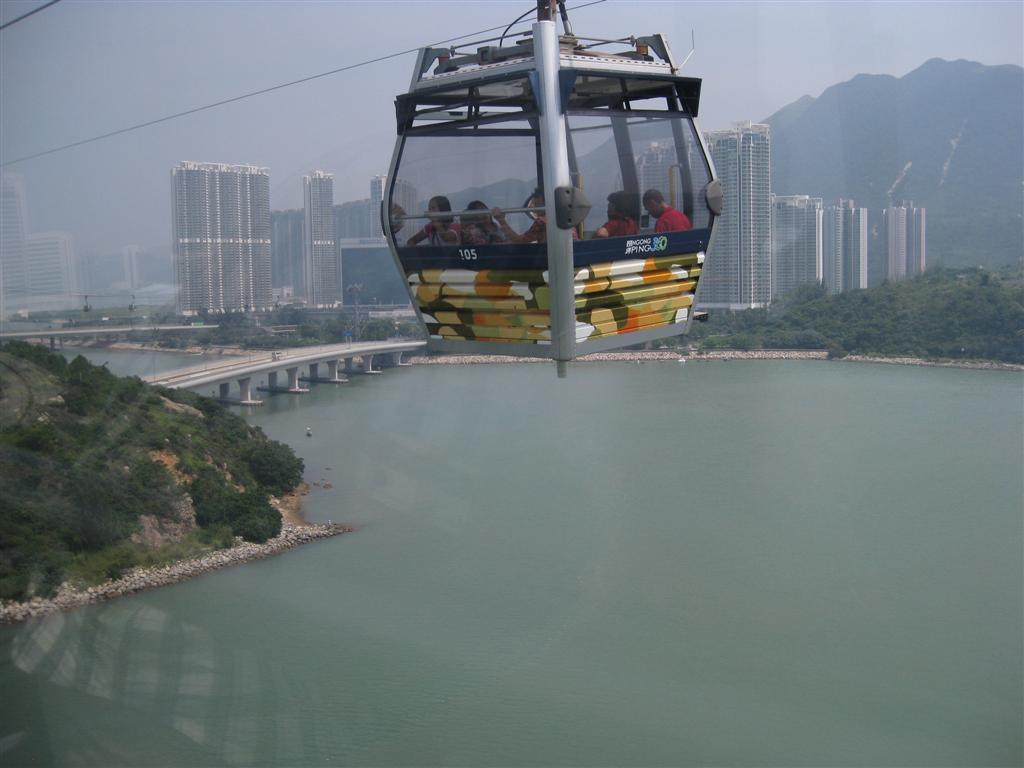
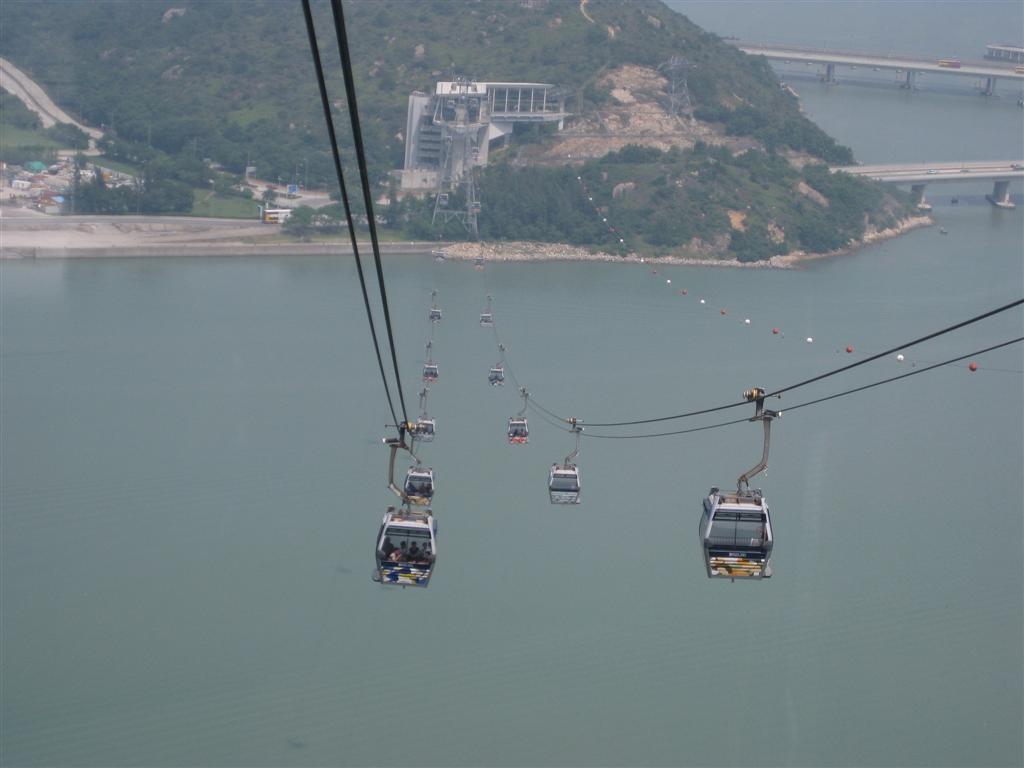
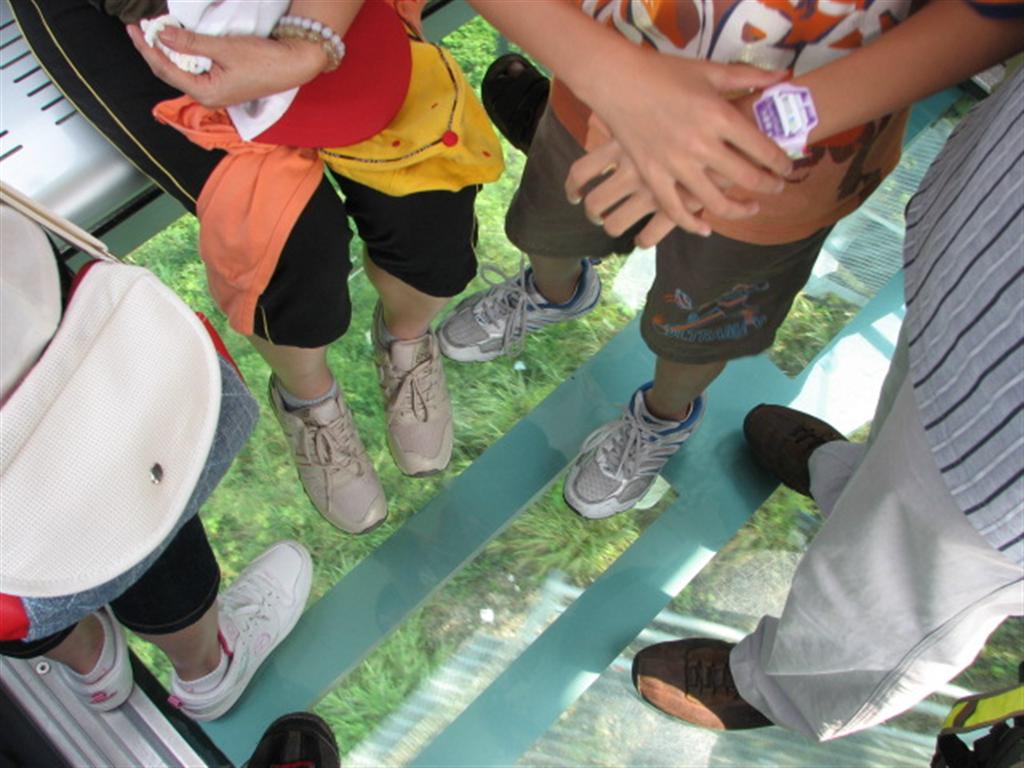
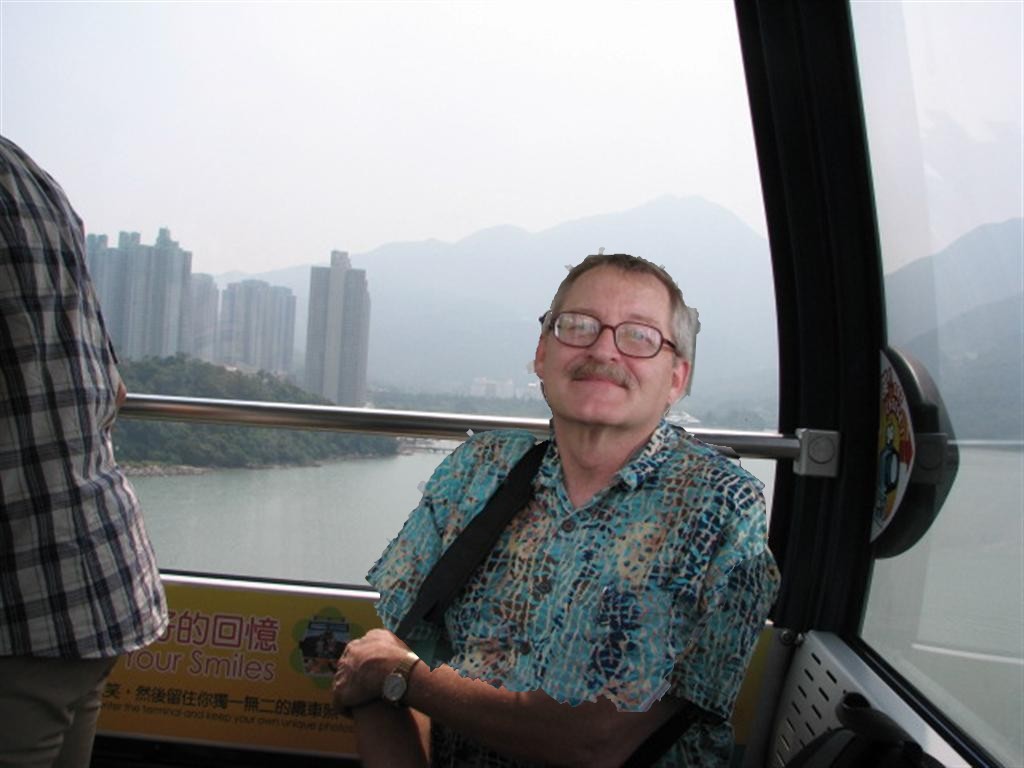

The 5.7 km ride takes you to a this village of tourist shops. We
walk through it to get to the huge Tian Tan Buddha Statue. It was
built in 1993; the base is modelled after the Heavenly Temple in
Beijing. We walked up the hundreds of step to the top (ugh).
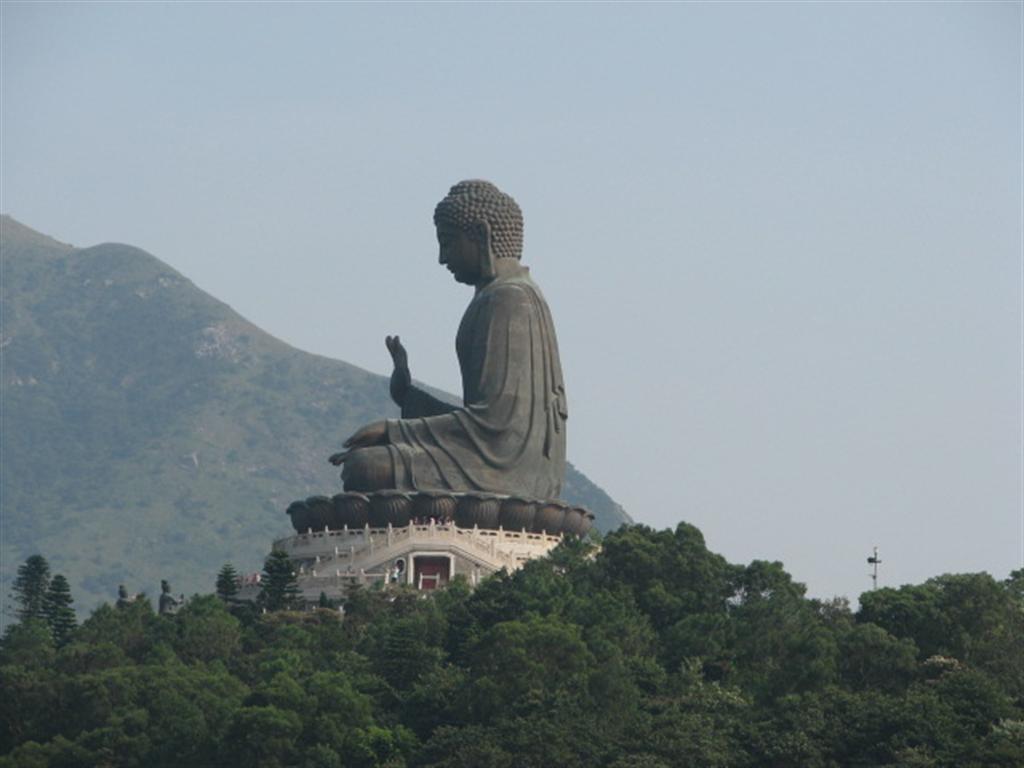
Afterwards we walked over to the Po Lin Monastery. We decided to
have the vegetarian lunch there. The meal began with the worst soup
I've ever eaten. The subsequent dishes were better, but we couldn't
get over the soup which looked like dirty dish water with squares of
squash with inedible rind. There were other inedible bits and
pieces!!!
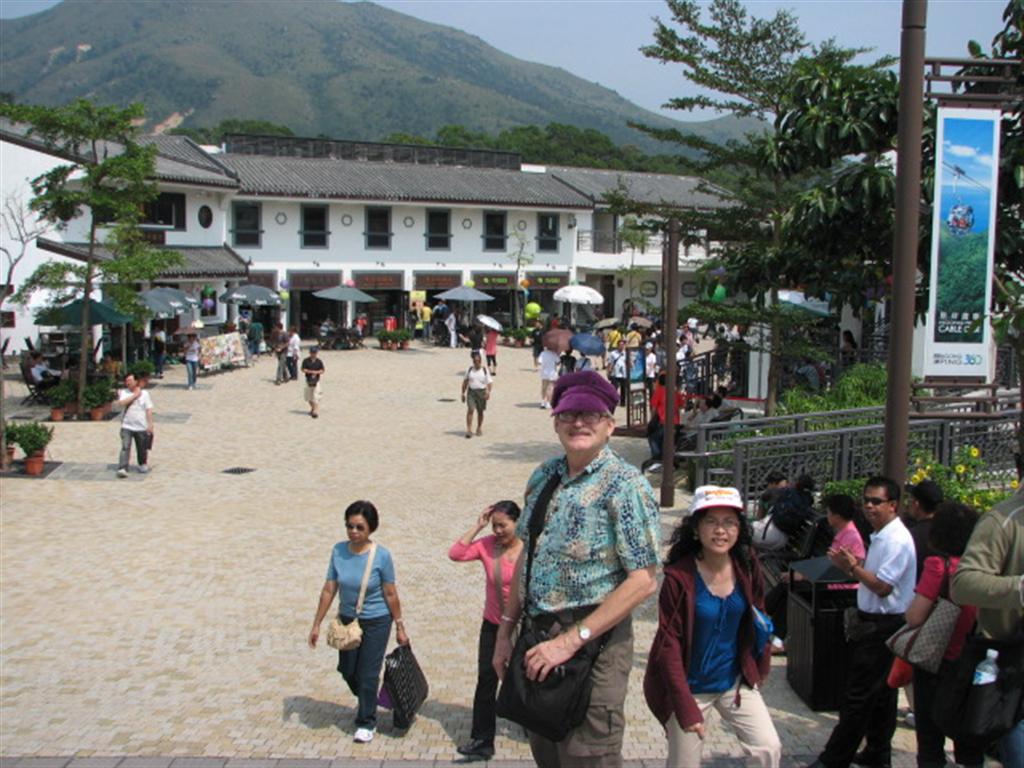
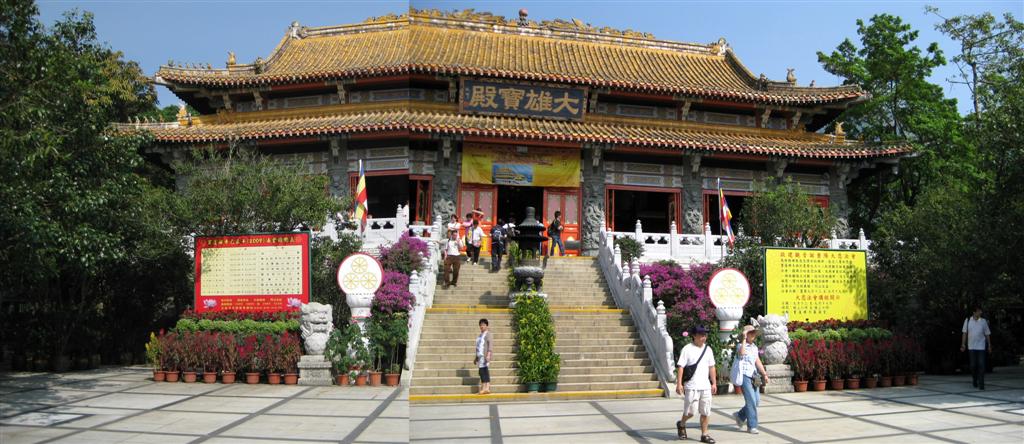 |
| Monday October
5 Aberdeen Our Monday excursion was to Aberdeen, a one time
pirate's den, located on the "other side" of Hong Kong Island. We
found out from our hotel that there was a bus that would take us
from nearby Nathan Road all the way through an underwater tunnel and
across HK Island. While we were trying to read the signs at the bus
stop, an elderly man stopped and told us how the bus works (how to
pay the fares, etc.) This man was from England but had work his
whole live here. He said he came to Asia for the 3 W's: Wife, Work
and Weather. When we got on the bus, we paid the "concessionaire
price" (for retired people!) which is 1/2 the regular fare.
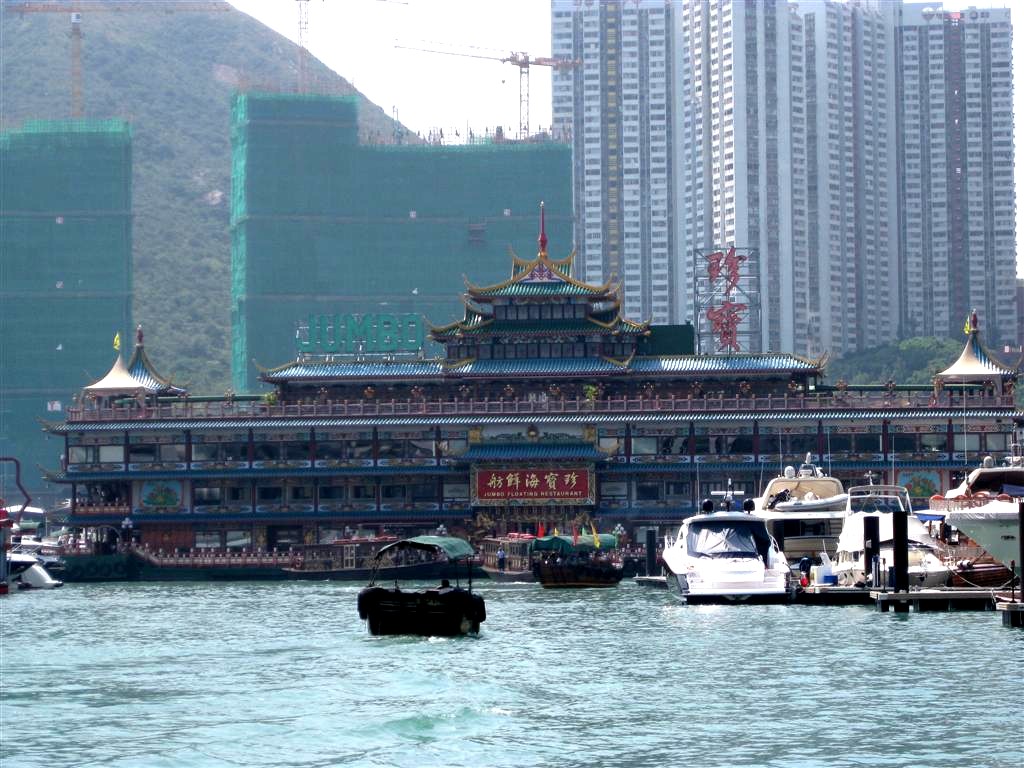

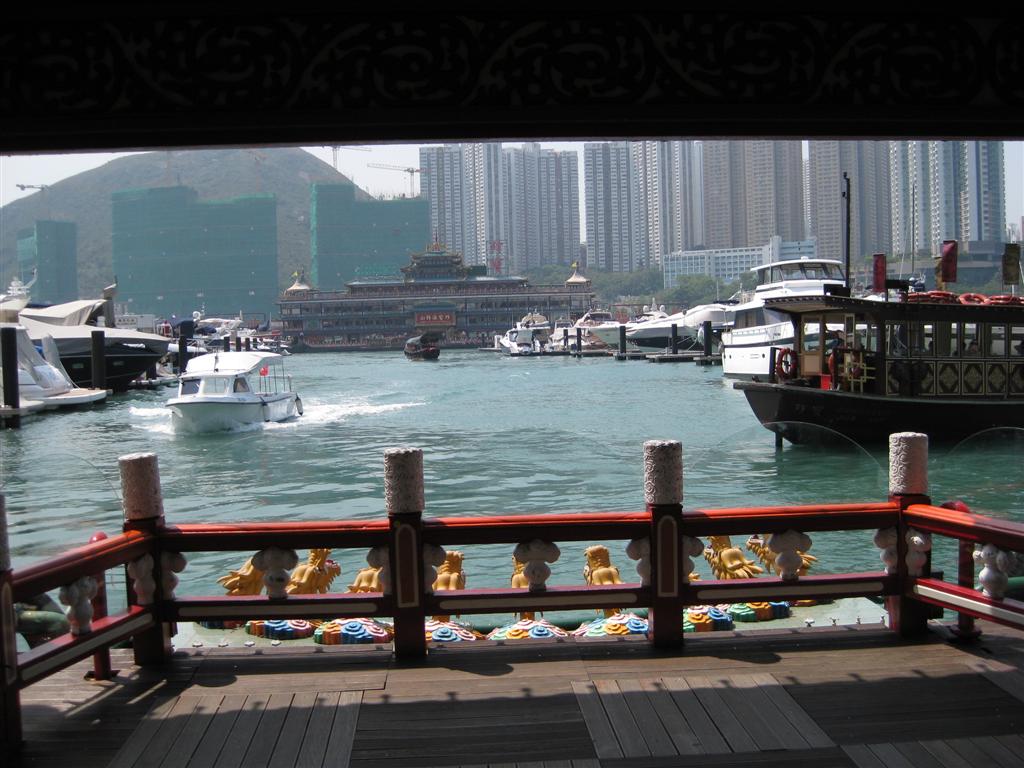
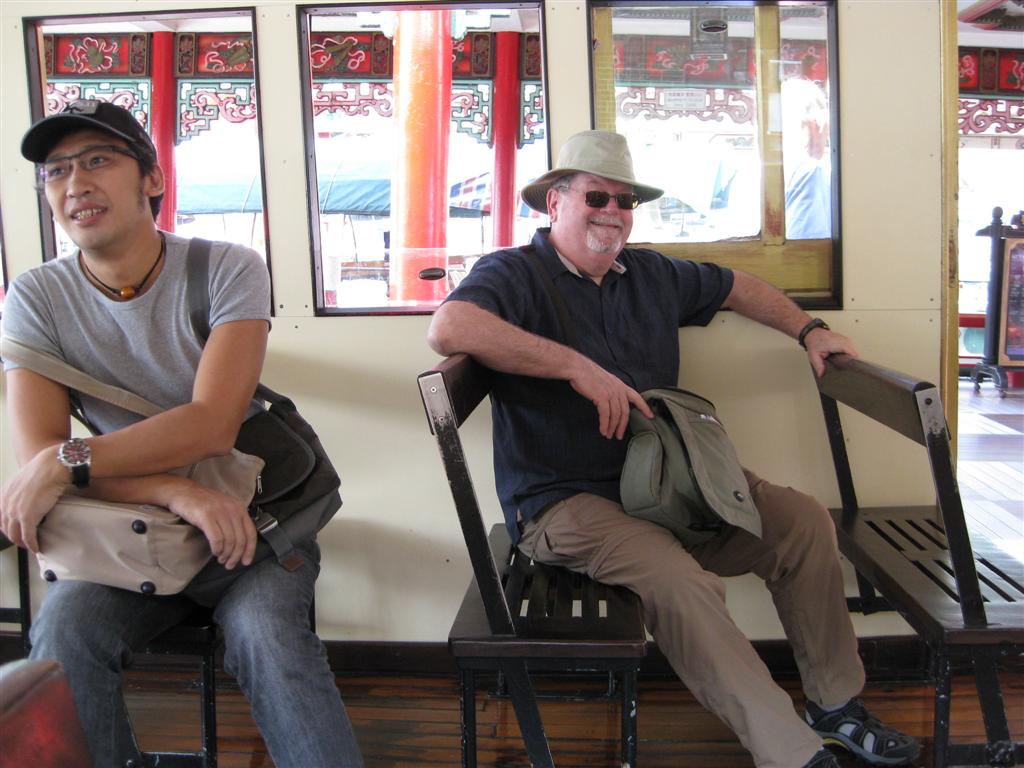
Aberdeen is kind of tawdry (IMHO) in spite of a beautiful harbor
and lots of high rise apartment buildings. We didn't realize that
there was a pier near the bus terminus where we could have gotten a
free shuttle to one of the floating restaurants. Instead we walked
for a mile or 2 through an industrial area before we stumbled upon
another pier that takes you to the same restaurant where he had
lunch. We ordered friend rice with vegetables, spring rolls and rice
rolls filled with vegetables.
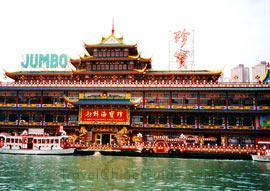
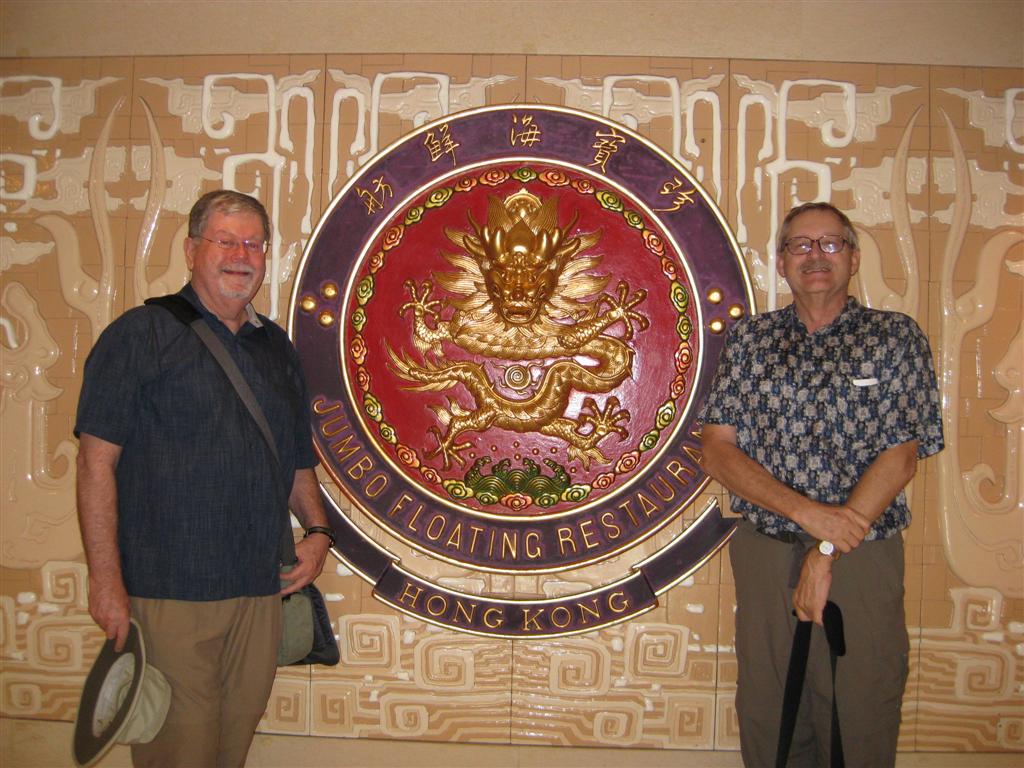
The restaurant prices we've seen are more like what we'd see at
home. I think we could eat really cheaply if we went into a little
mom and pop restaurants.
|
| Tuesday October
6 Tai O Fishing Village
 Map of Lantau Island
Map of Lantau Island
Today we went back to Lantau Island, via Central Metro Station on
Hong Kong Island. From the MTR we walked to the port terminals and
boarded a ferry that was going to the town of Mui Wo on Lantau.
There is a lot of construction at the waterfront near the ferry
terminals. We were told this is for a public buildings and a
waterfront promenade.
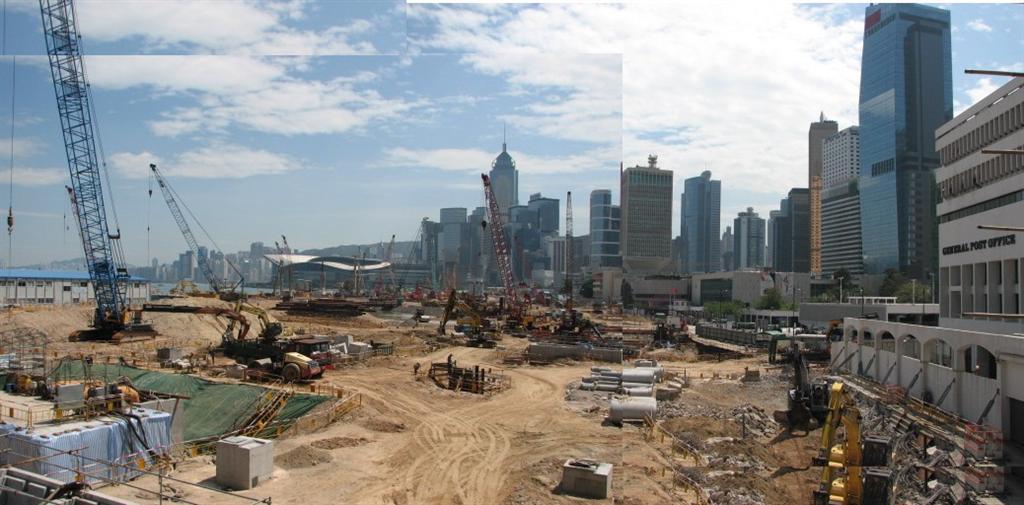
From Mui Wo, we took an hour bus ride, making many stops, on a
winding road through largely undeveloped hills and dales. The
vegetation was lush and included taro and bananas plants.
The fishing village of Tai O seems quite authentic although there
were a fair number of tourist there. When we got off of the bus we
walked through the narrow streets of the town, across a foot bridge
Onspanning a creek that separates the town. The market sold lots of
dried fish parts.
Once past the shopping street, we walked along the water and saw
the fishing huts on stilts. They are mostly 2 story, boxy looking
structures. They almost look like they were made out of containers.
They were painted a metallic color ... to reflect the light?
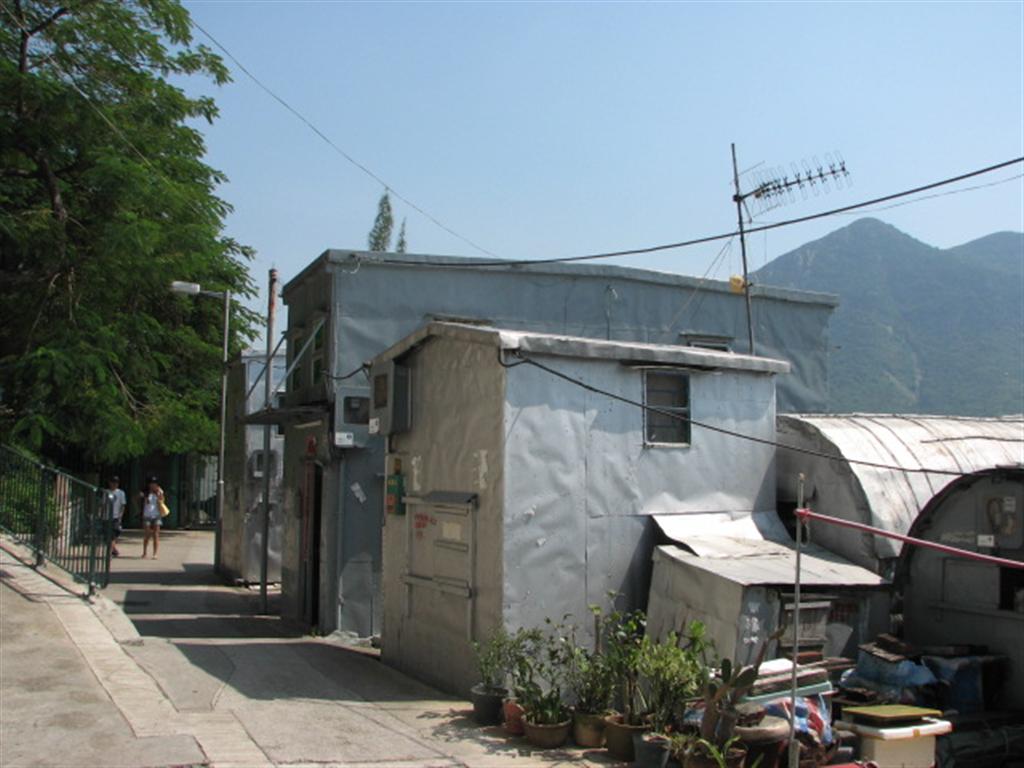
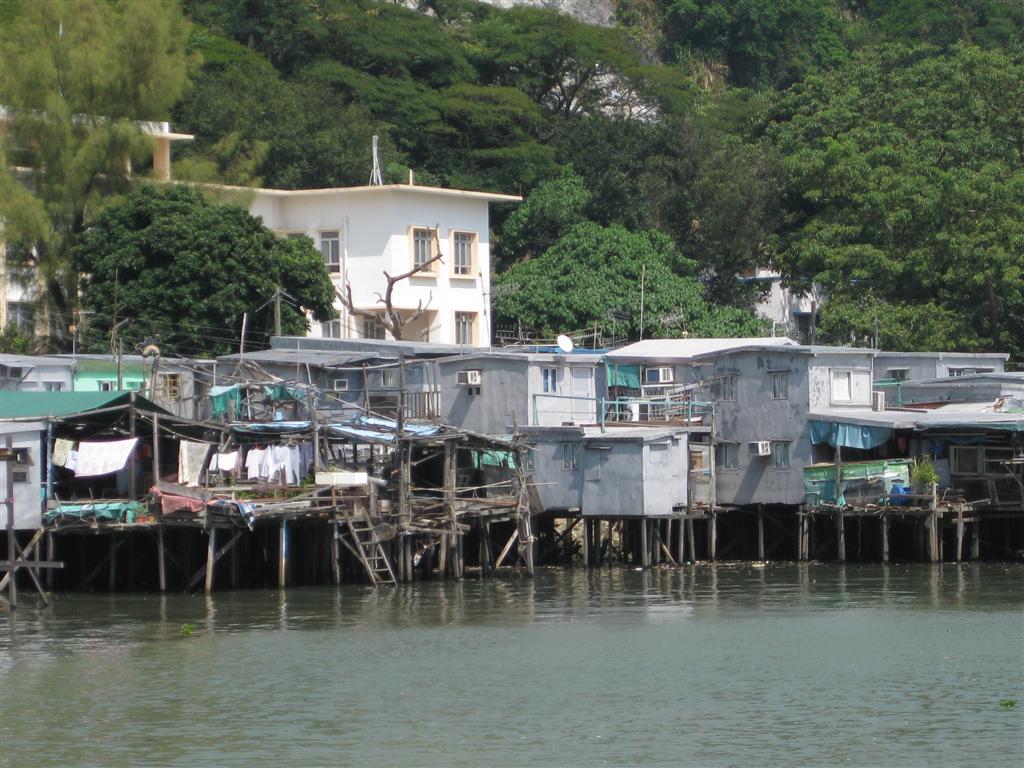
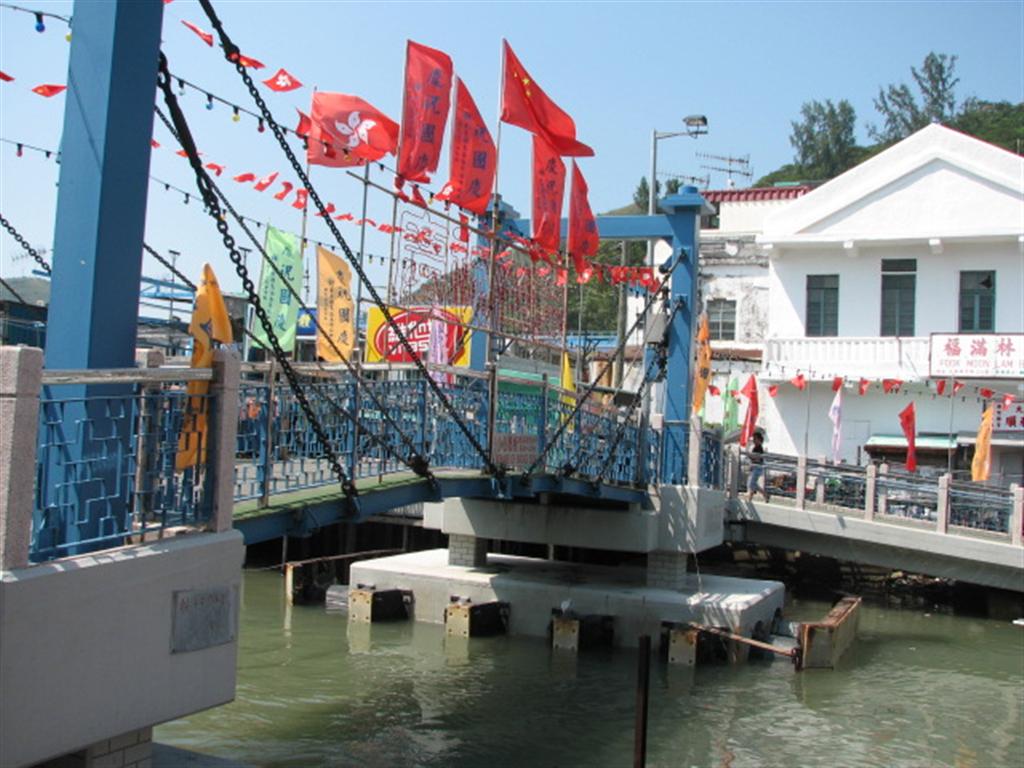
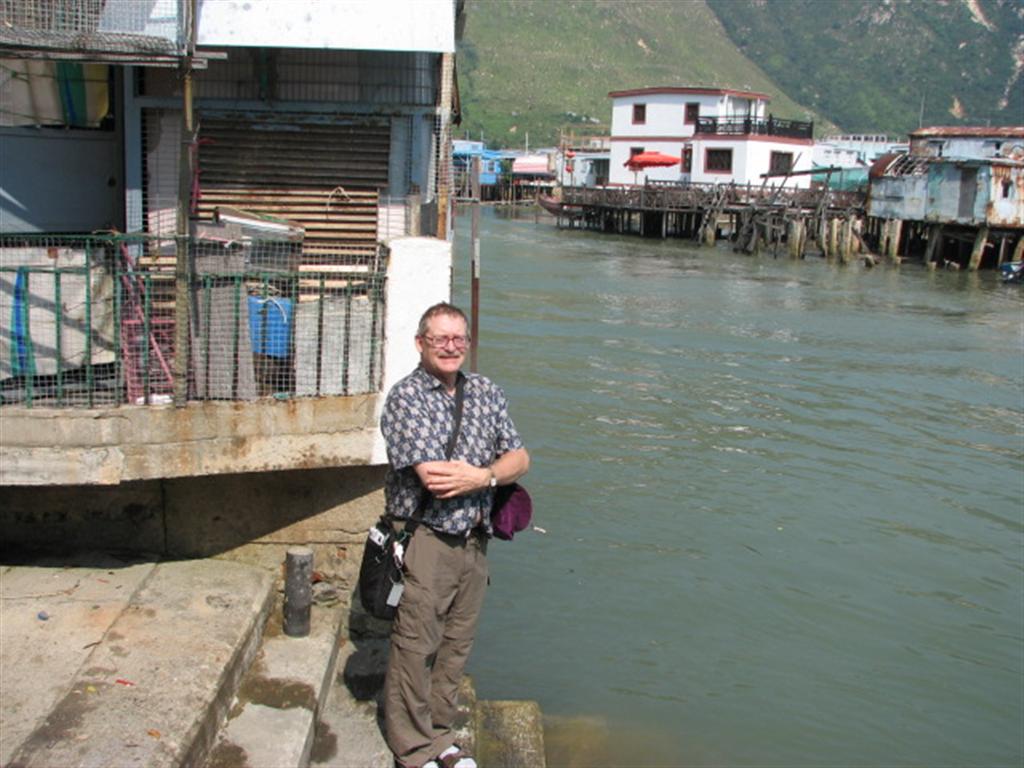
Although the village may be authentic, it is dying out. A fire in
2000 destroyed many homes and squatters have moved in. The young
people move away.
On our last night in Hong Kong, our Hong Kong friend Robert came
by and took us to a Cantonese restaurant near the Kowloon
waterfront. We were served some exotic dishes which included pickled
duck eggs, pigeon, tofu and bamboo fungus, jelly fish and barbecued
pork.
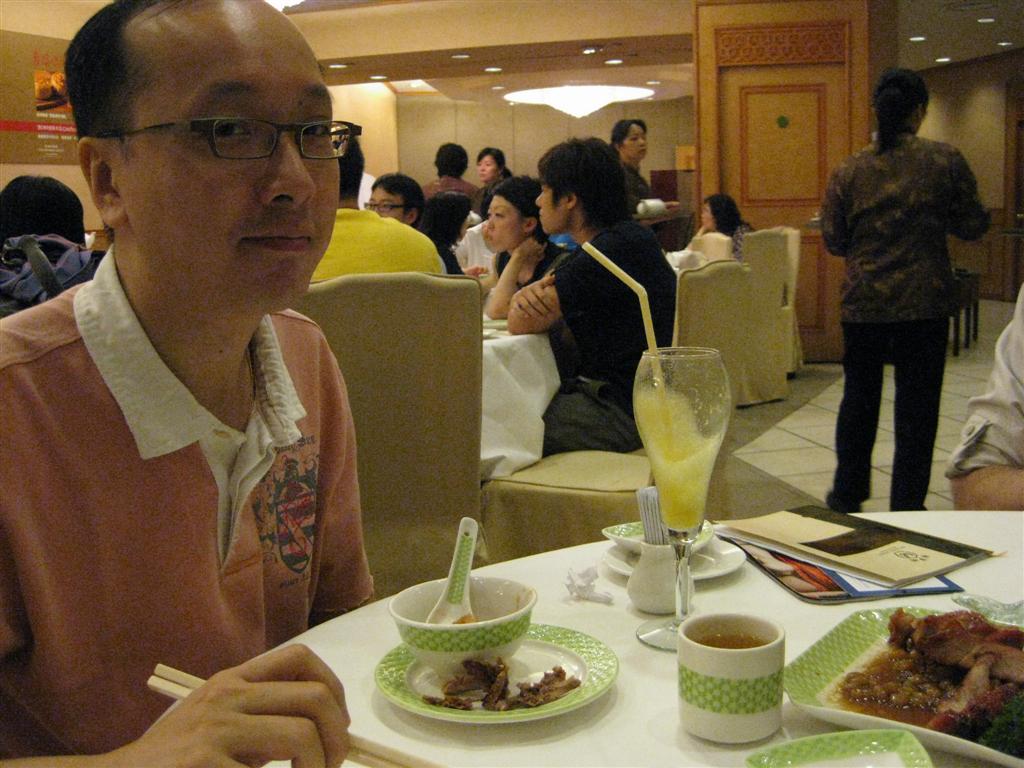
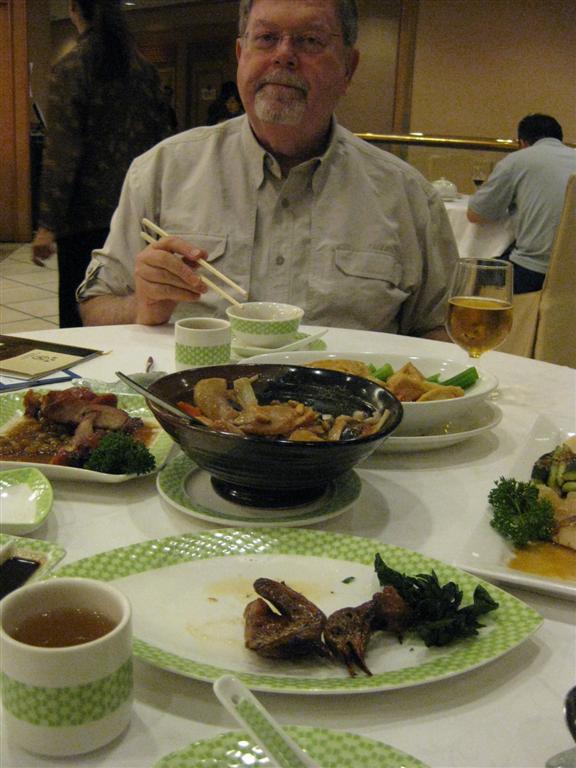
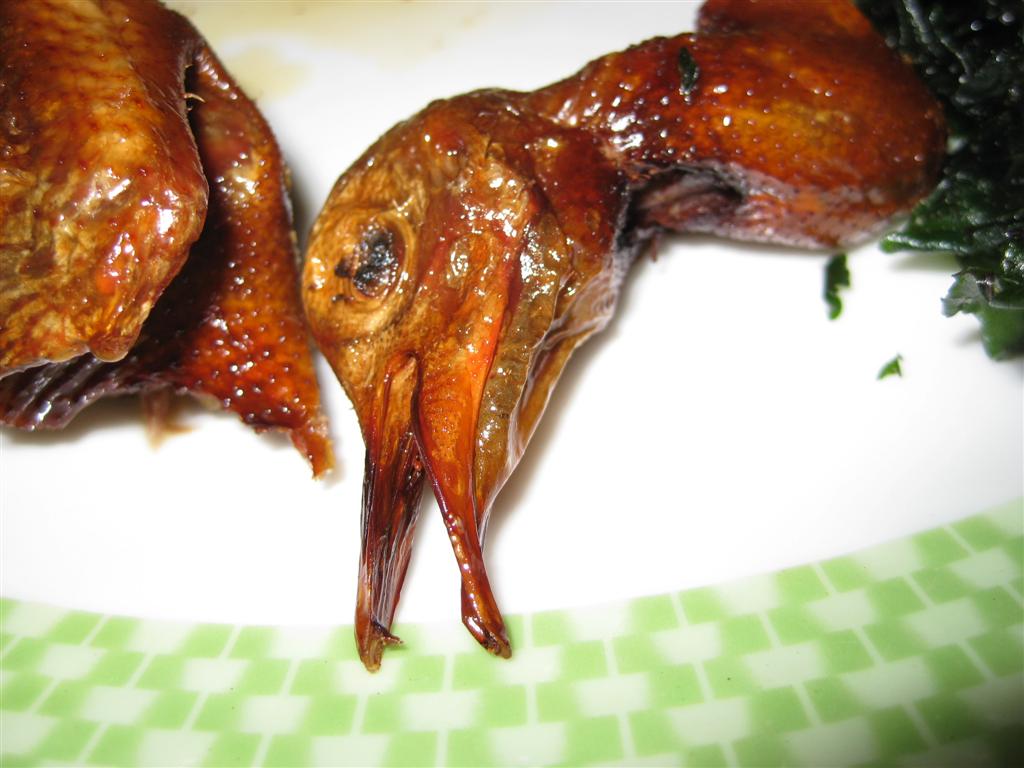
|
| October 7-8-9,
2009 Bangkok
On Wednesday we flew from Hong Kong to Bangkok. We caught a free
Airport Express Train shuttle from our hotel to Kowloon Station. And
the neat thing was being able to check into our Cathay Pacific
flight there, getting our boarding passes and checking out bags.
The flight was on time and arrived in BKK ahead of schedule. The
airport in immense. There was no one in line at immigration and our
bags came shortly. We used our ATM cards to withdraw Thai Bahts. The
current rate is about 31 baht to the dollar. We took a limousine to
our hotel at the cost of about $US35 for both of us.
We really like our hotel (Centre Point Silom ("Executive Serviced
Apartments"). The rooms are large and we have a kitchen with a
washer/dryer. Very handy for travelers. We are located at the
Taxsin Bridge and the Central Pier on the Chao Phraya River. We are
next to the Shangri-la and Peninsula Hotels.
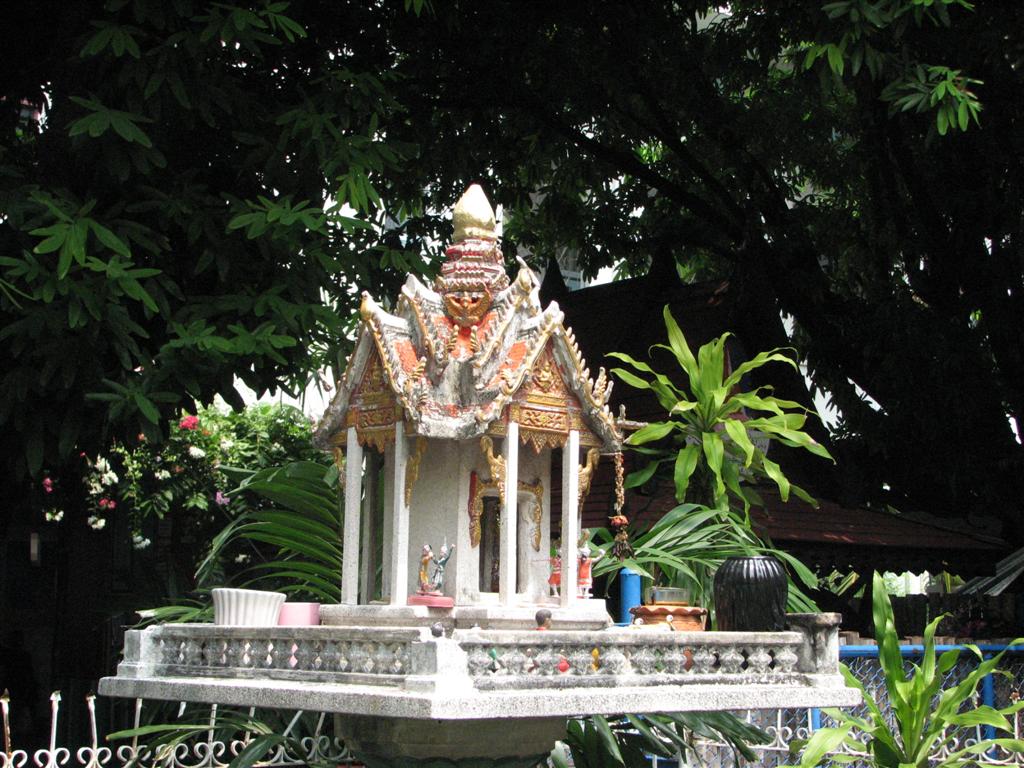
On our first full day here, we took a water bus up to the Palace
area. We are deferring serious touring until Ron gets here in
another week. The cost of this boat ride was 18 baht ($0.50)
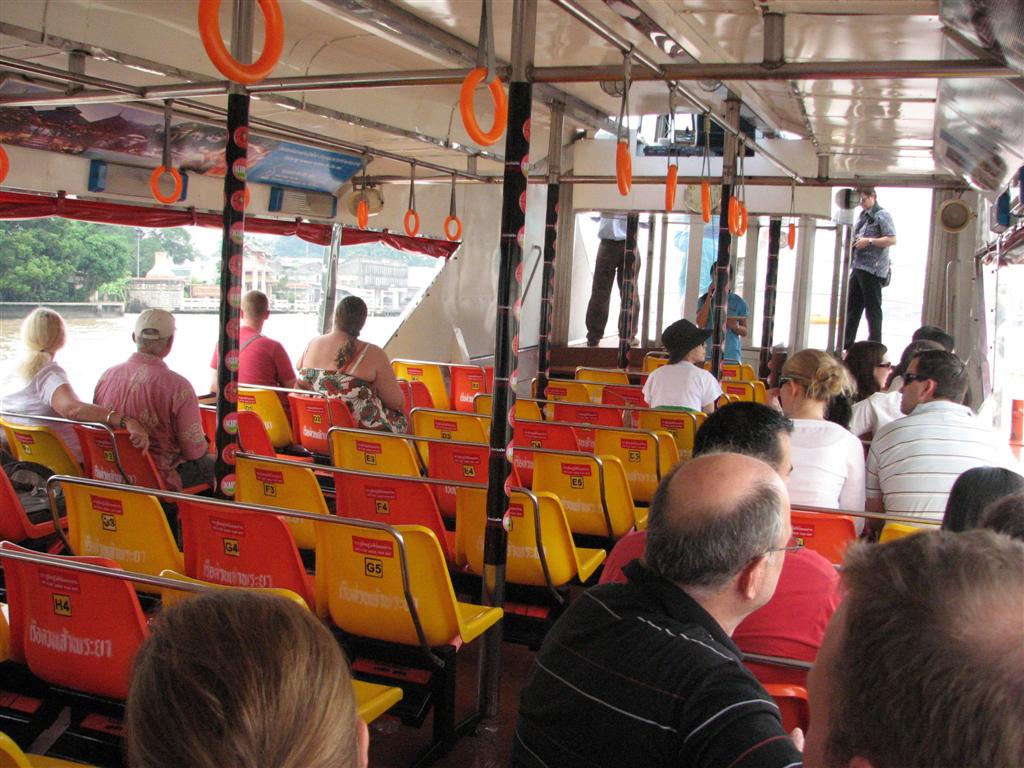
Near the pier where we left the water bus was the Rama Viii
Bridge. It is an asymmetrical cable-stayed bridge which I
think will be similar to the suspension part of the Bay Bridge ???
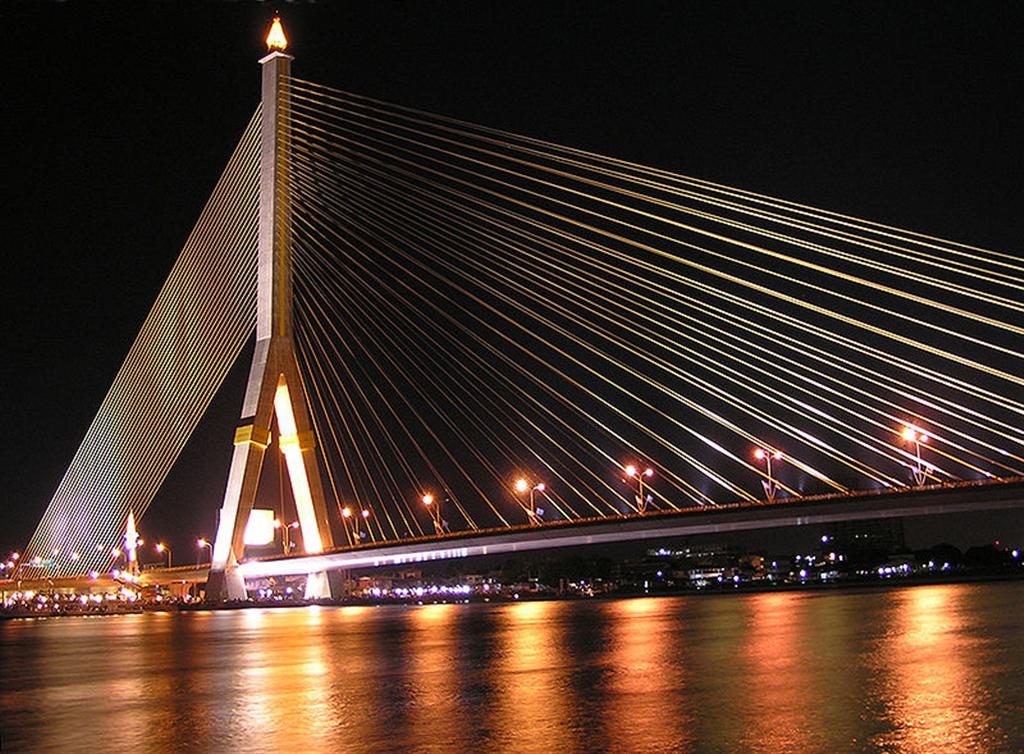
We first went into a temple complex called Wat Mahathat. We saw a
huge courtyard. Along the covered walls were gold Buddha after gold
Buddha. There are memorials to the departed at the base.
When we made out way out, we ran into an economics student at the
adjacent university. He was extremely helpful. He told us that the
government subsidized some Tuk Tuks (open "motorcycle" taxis). You
can tell them apart by their white license plates. They charge a
very low rate. On the map he marked 3 places we should see. About
that time, a Tuk Tuk driver (white license plates) came over and our
student friend negotiated a rate of 50 baht (about $1.60). We
squeezed in the back and were on our way.
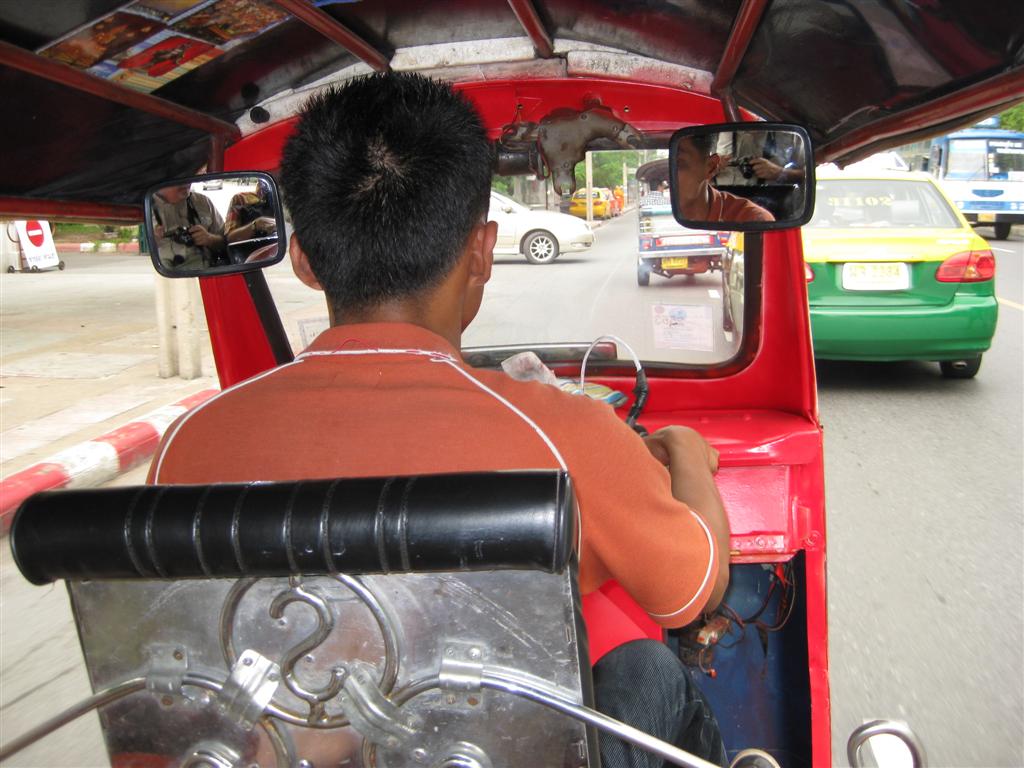
We saw the several temples, a teak museum, government buildings,
etc. A highlight was a point on the river where you feed the fish
(for good fortune).
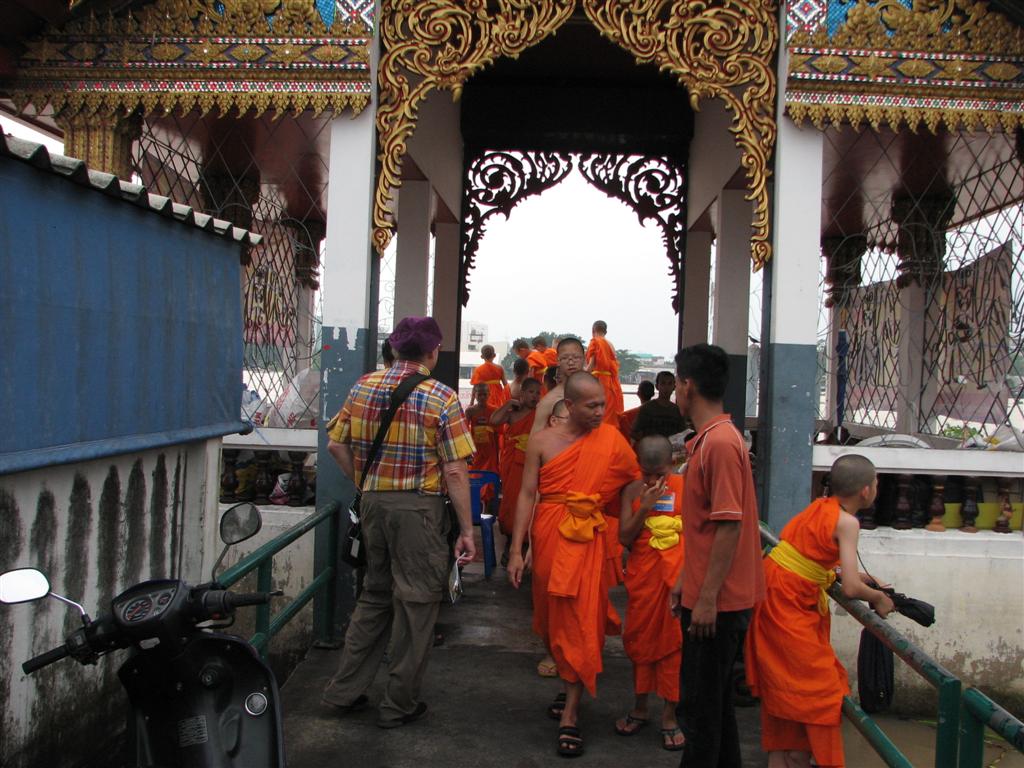
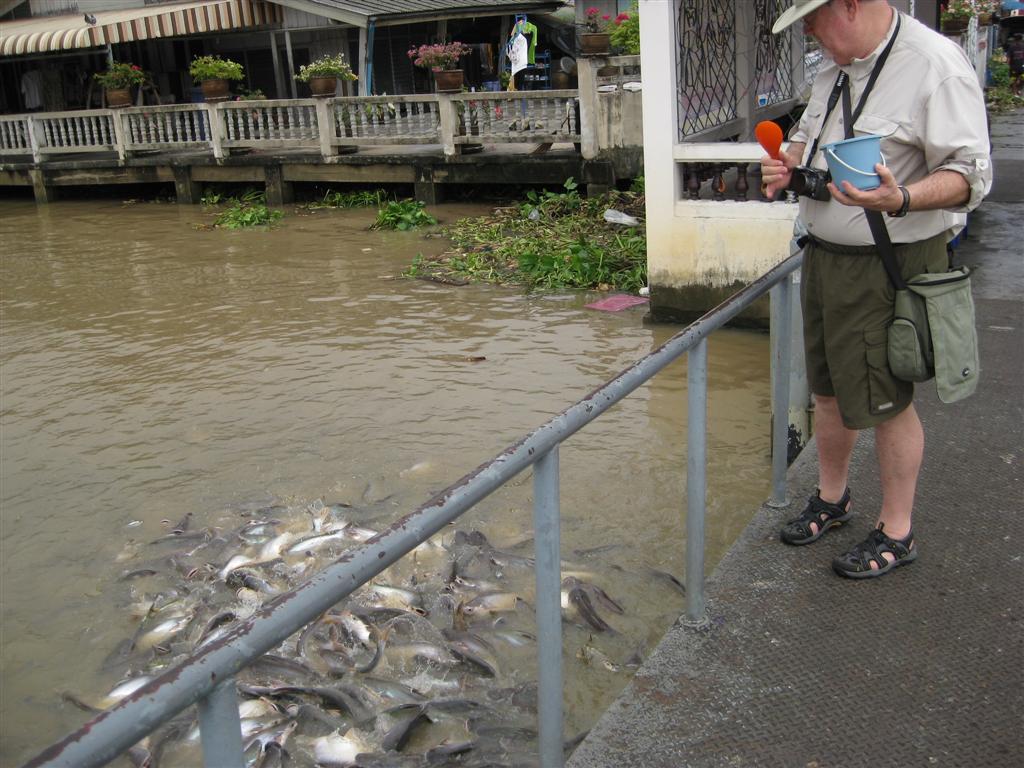
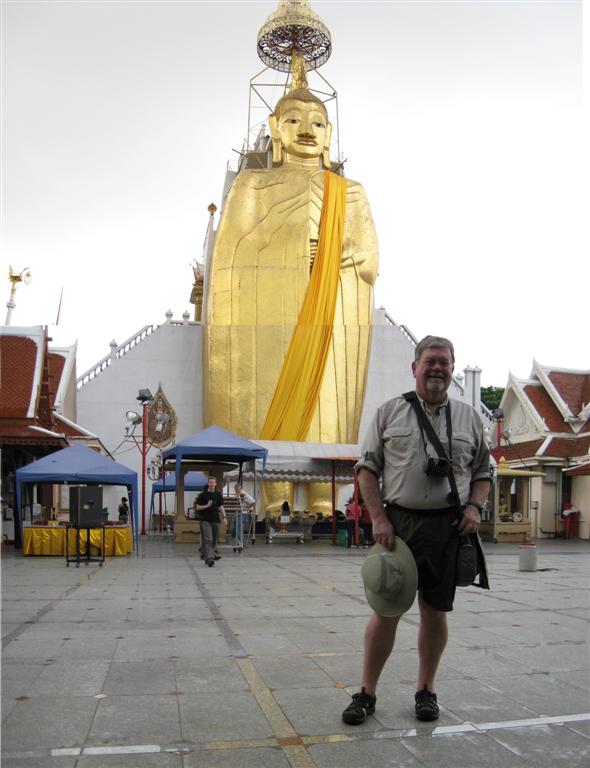
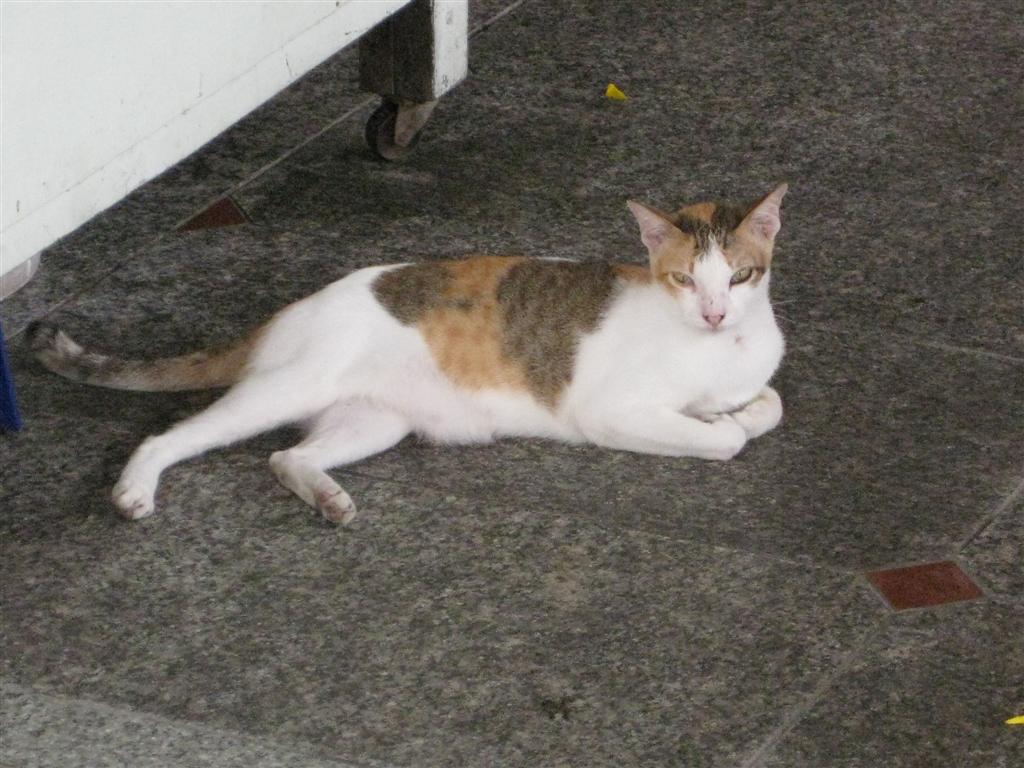
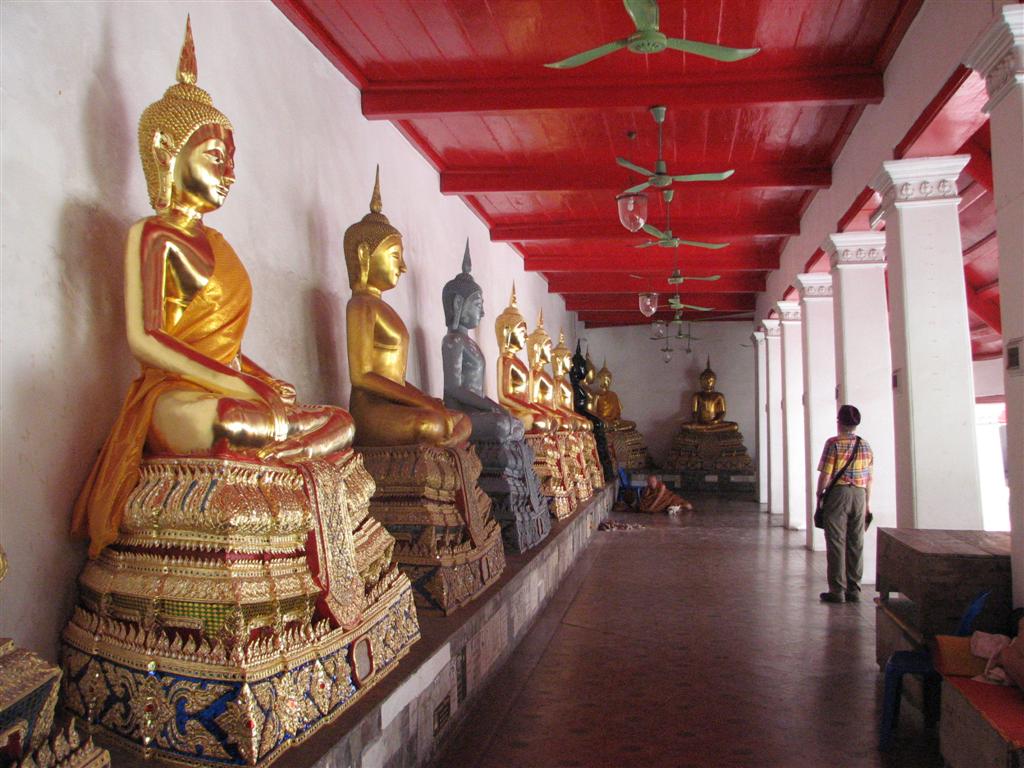
For dinner we walked to the nearby State Tower and ate at the Lebua Hotel's Cafe Mozu. The menu was Indian, Middle East, Italian
and Thai and our meals cost $100.
|
| October 11,
2009 Yangon, Myanmar (Rangoon, Burma) Today we left
Bangkok for Yangon, Myanmar. We decided to take a metered taxi. It's
a 40 minute ride and cost less than $15 for both of us. We flew on
Bangkok Airways to Yangoon. At the Bangkok Airport, we ran into 2
guys on their way to Cambodia. They had found a guide on the
Internet. We want a guide for Angkor Wat and will call them for a
recommendation!
The Yangon Airport is quite new. At passport control, we had some
special steps because we'd applied several weeks ago for "VOA - Visa
On Arrival". By then, our guide is Ko Ko Aye Kyaw and goes by his
last name Kyaw which sounds like "Joe" He found us and he handled
the paperwork. He asked us for change for a $US100 and Tom gave him
5 $US20. He came back two times to get "better" bills ... no marks,
tears or sharp folds. The military government thinks the bills have
to be pristine in order to be good.
We were dropped off at our Hotel (Traders) where we found our
room on the19th Floor. I immediately tried to access my email and
got the message "Access Denied". I didn't have enough time in our
hotel to work on this problem very much. Later on, I found I could
read my Earthlink e-mail using the PocketPC version of Yahoo Mail.
Our guide's name sounds like "Joe" so that is what we call him.
We really liked him. He is professional, intelligent and
knowledgeable. This is his contact information:
Ko Ko Aye Kyaw (English)
Yangoon, Myanmar, Tel 09-5084912
E-mail:
KoKoAyeKyaw@tomdaniels.com
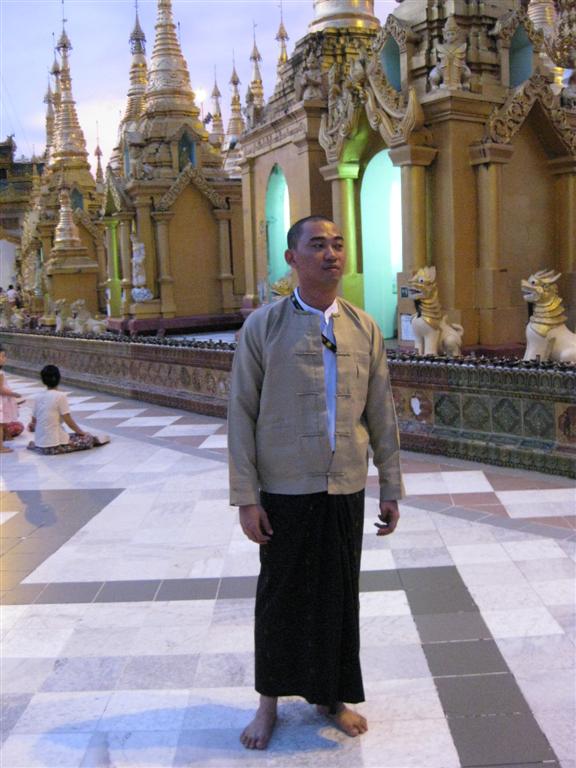
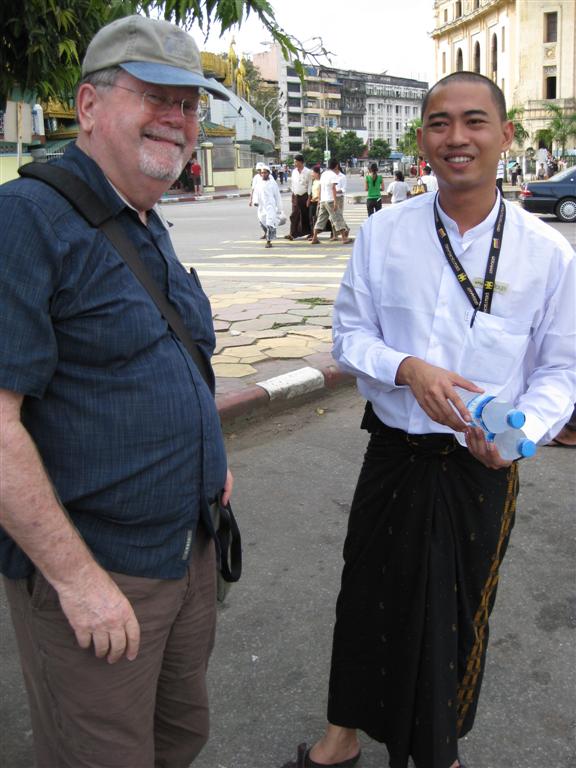
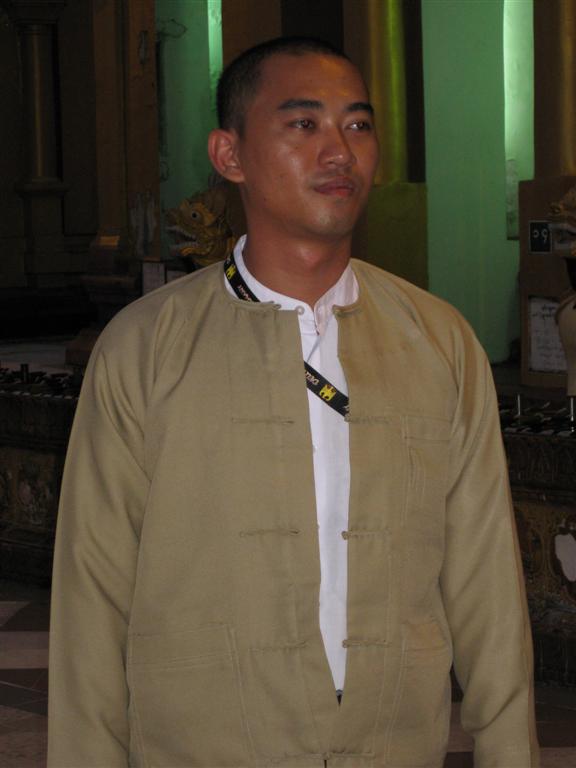
He took us on a tour of downtown and the old "European-looking"
buildings a result of the British colonization. Many are now vacant
because the government has moved the capital from Yangon to
Naypyitaw, a new city to the north. It was Sunday, so there was not
a lot of activity. At one point we watched a women preparing cold
water by pouring water over a big hunk of ice.
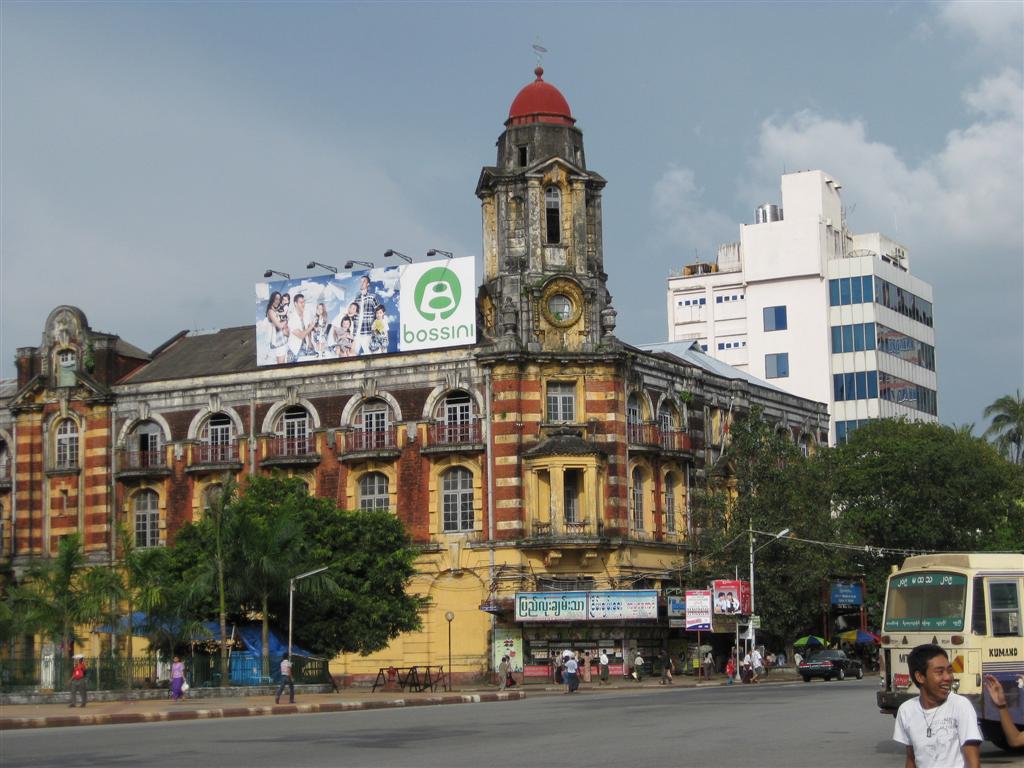
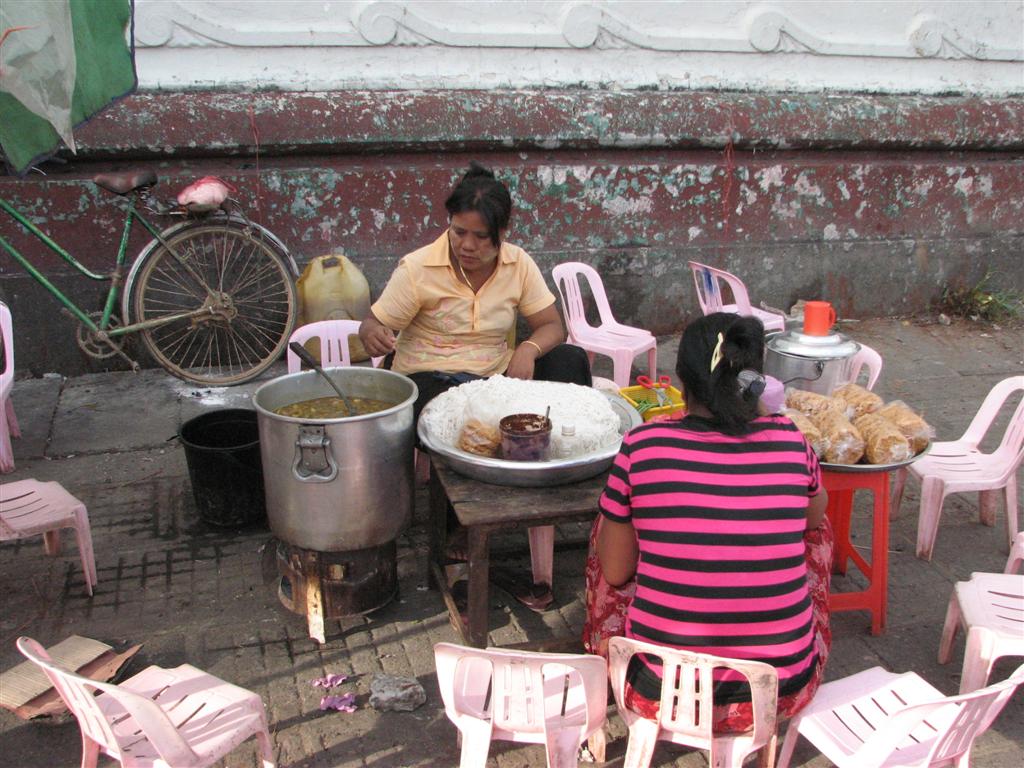
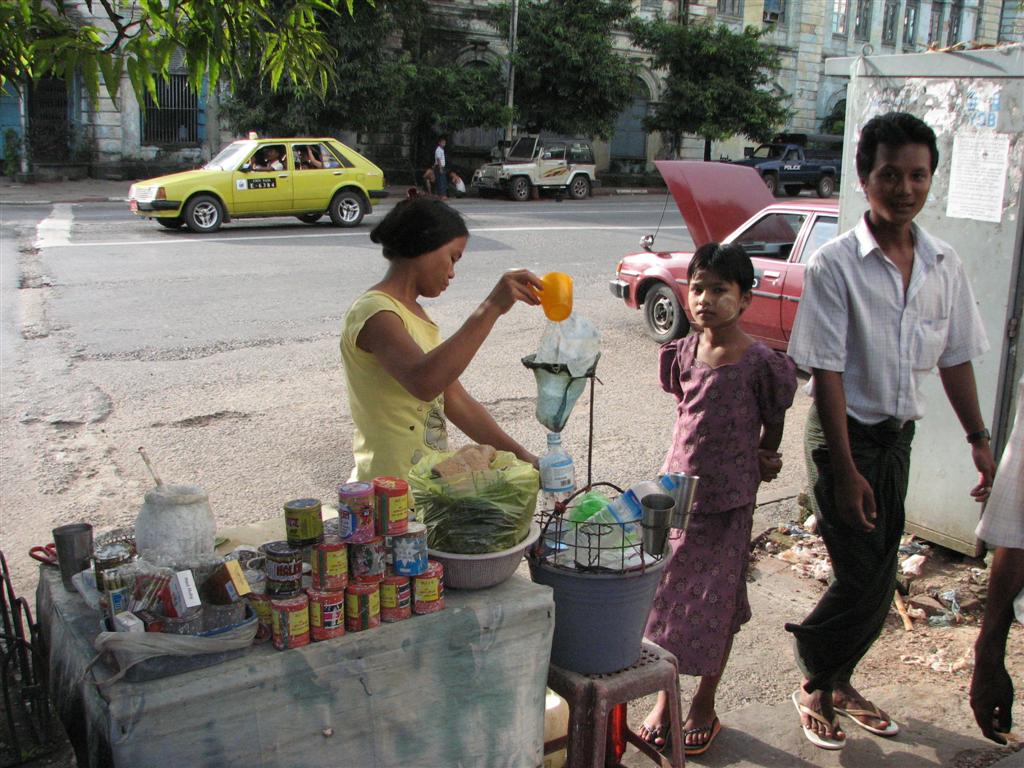
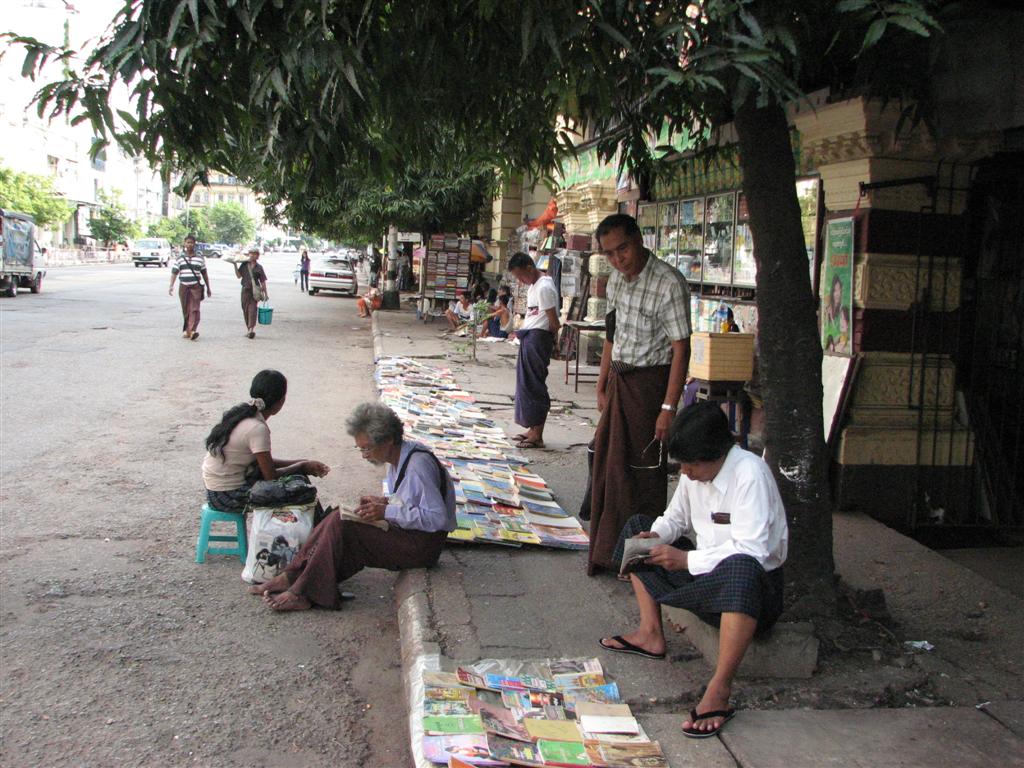
Two rivers converge in Yangon: the Yangon River and the Bago
River. We drove to the riverside and watched small ferry boats load
up with about a dozen people then head off across the river (maybe 1
mile across).
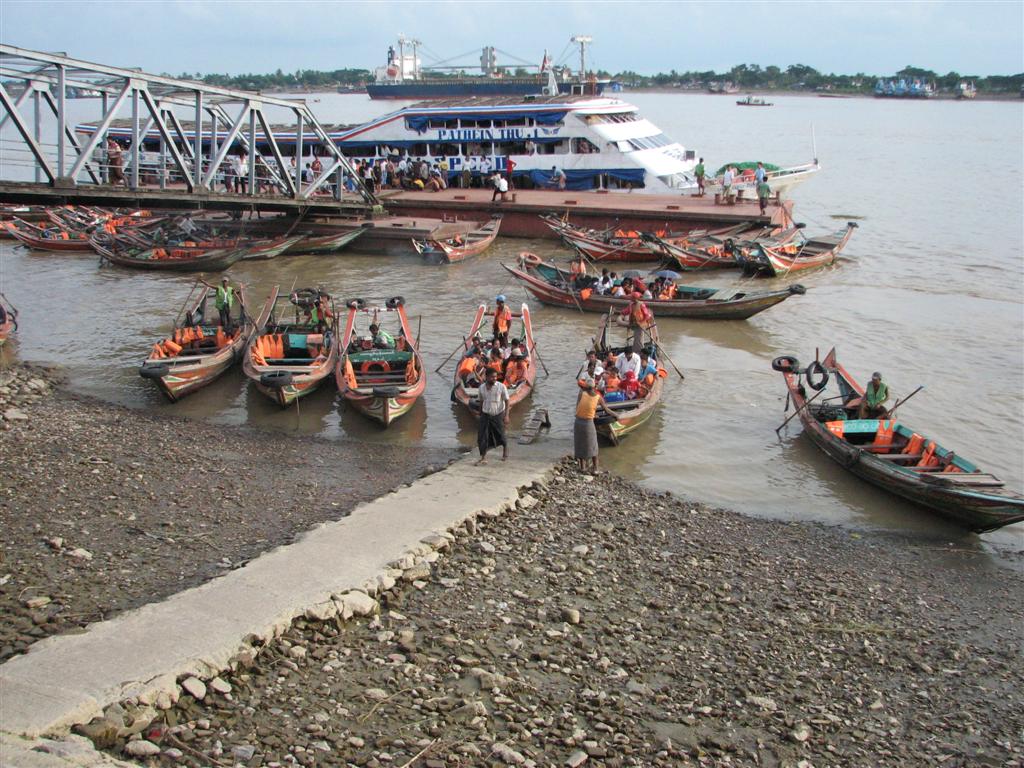
We observed sunset at the Shwedagon Pagoda, a huge Buddhist
complex, prominent in the city skyline. The Shwedagon Pagoda is also
known as the Golden Pagoda. It is dominated by the 325 foot tall
gilded stupa. (A stupa is a solid, obelisk-like structure with a
sacred relic inside.) The stupa is surrounded by many, many temples.
It is the most sacred Buddhist pagoda for the Myanmar people with
relics of the past four Buddhas enshrined within.
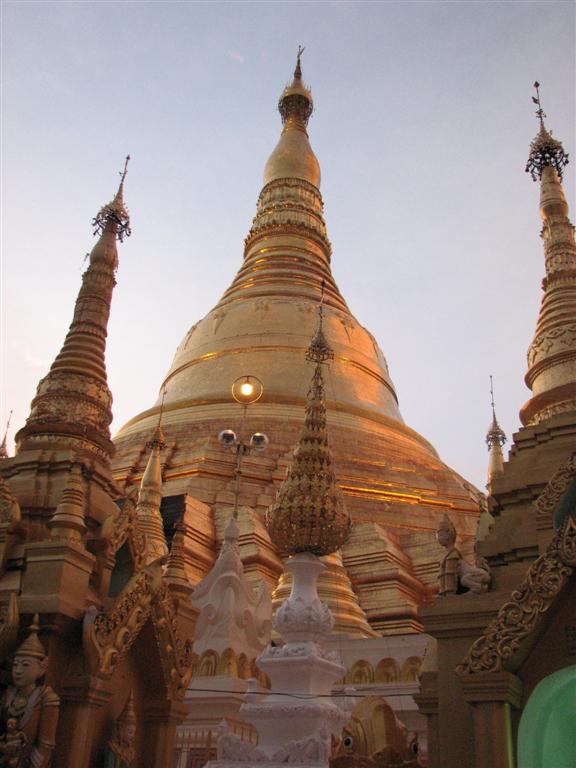
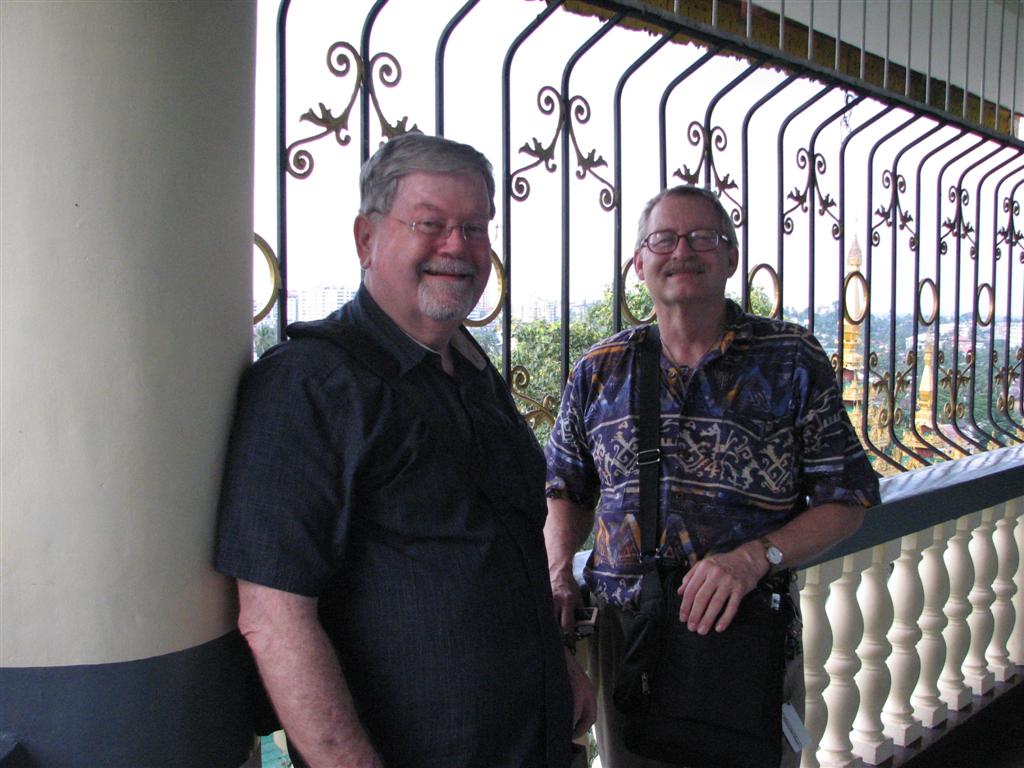
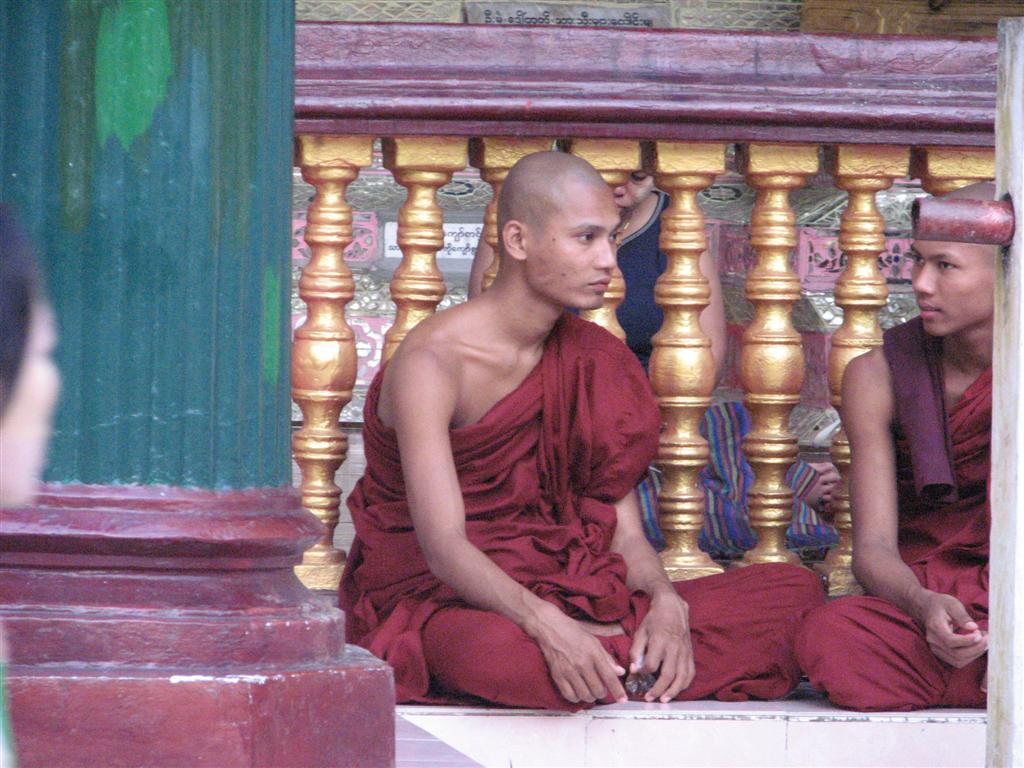
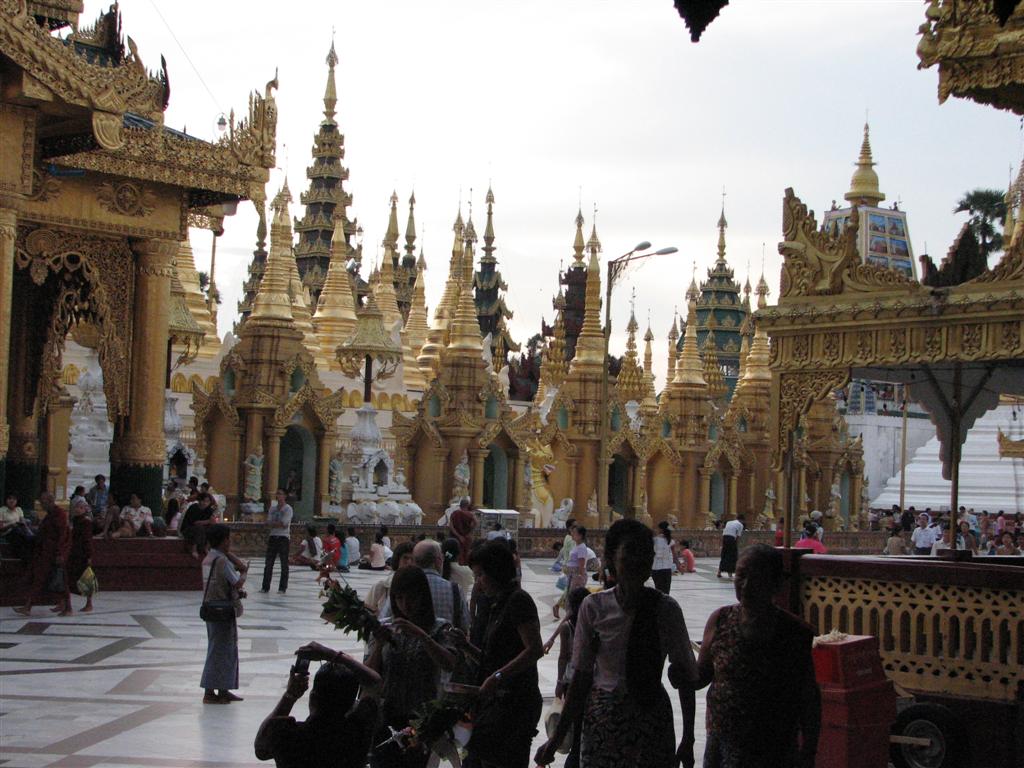
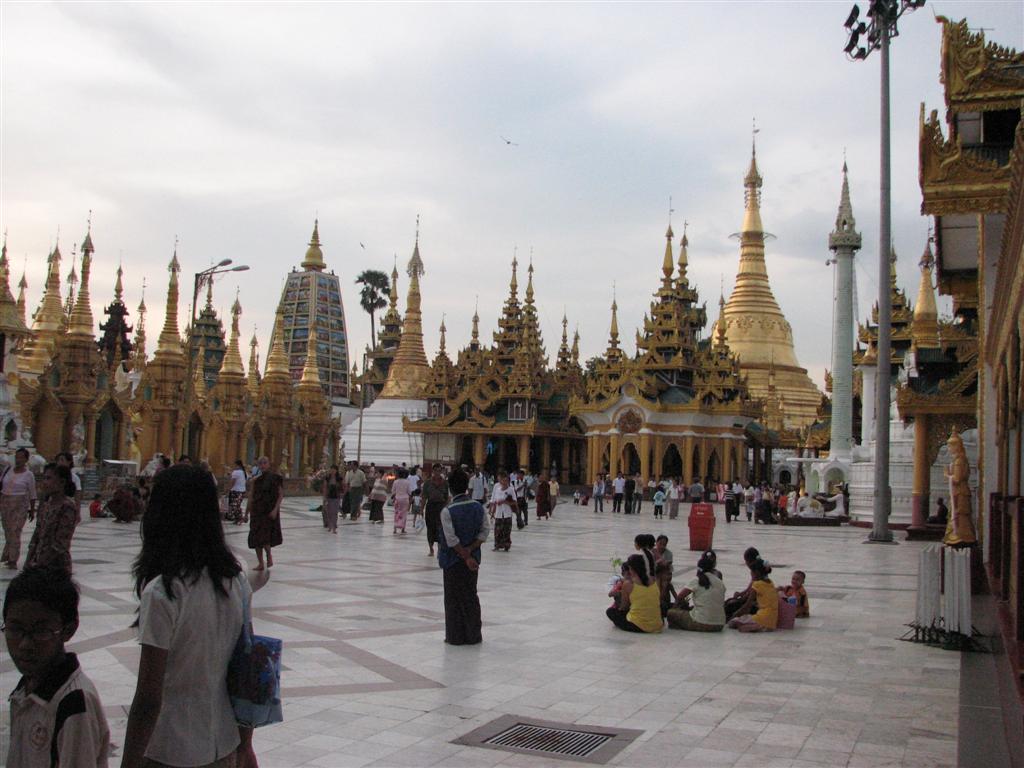
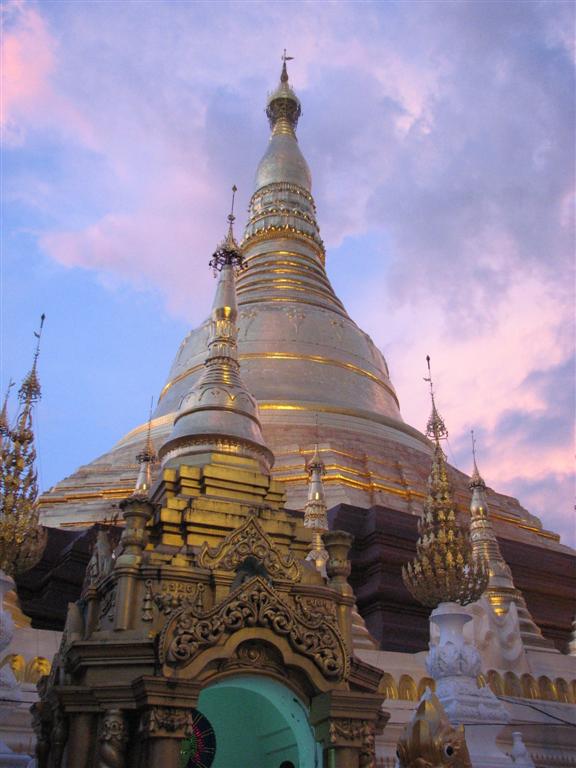
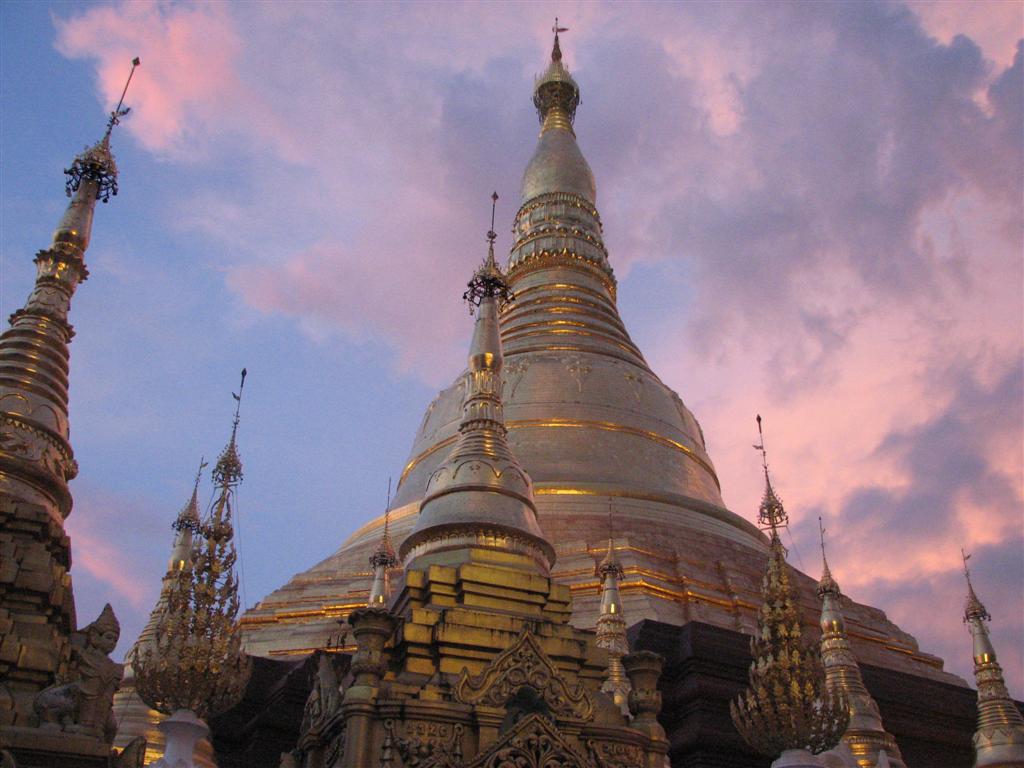
|
| October 11,
2009 Bagan, Myanmar We left so early for this segment,
that the hotel had to send a box breakfast along with us.
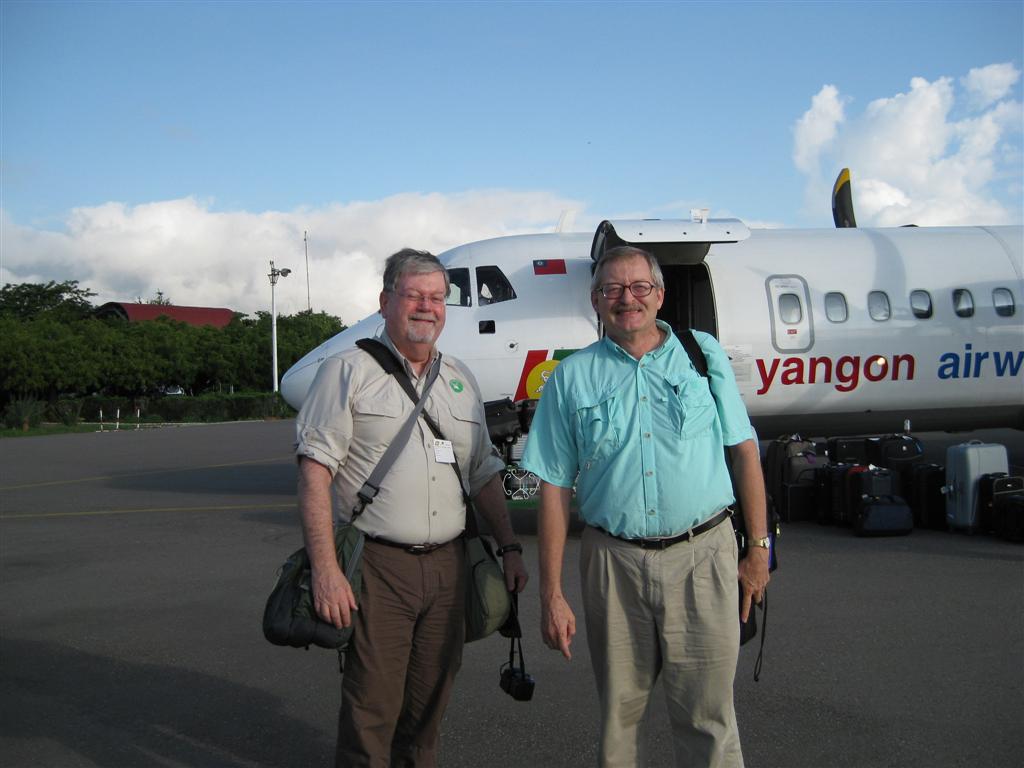
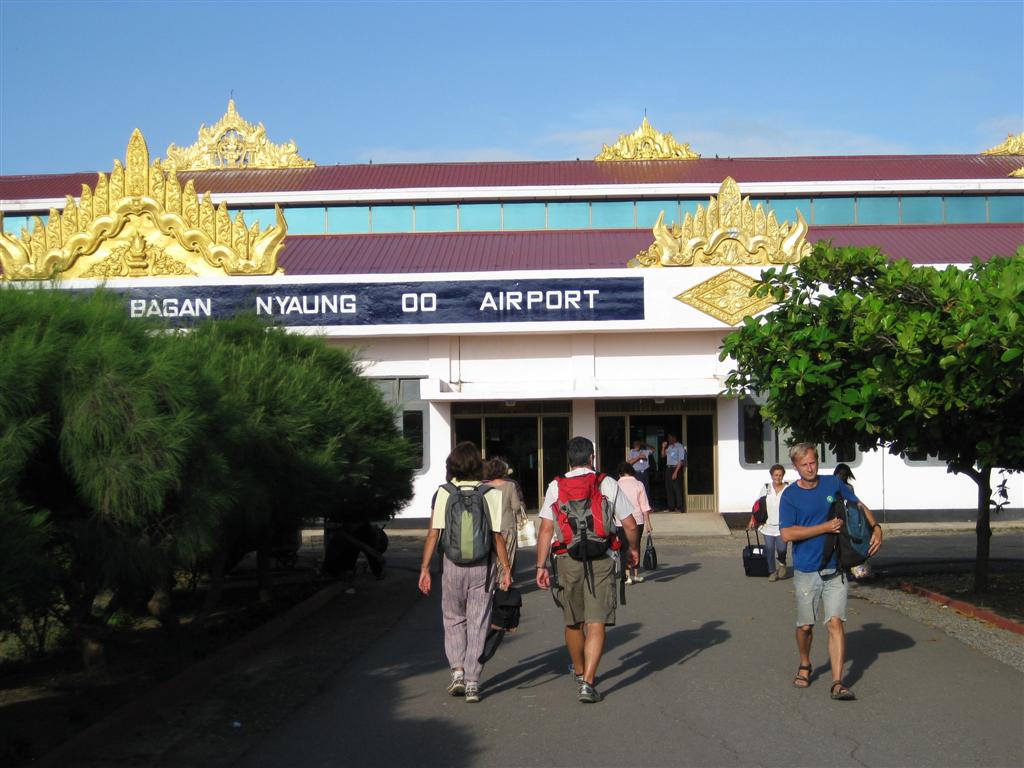
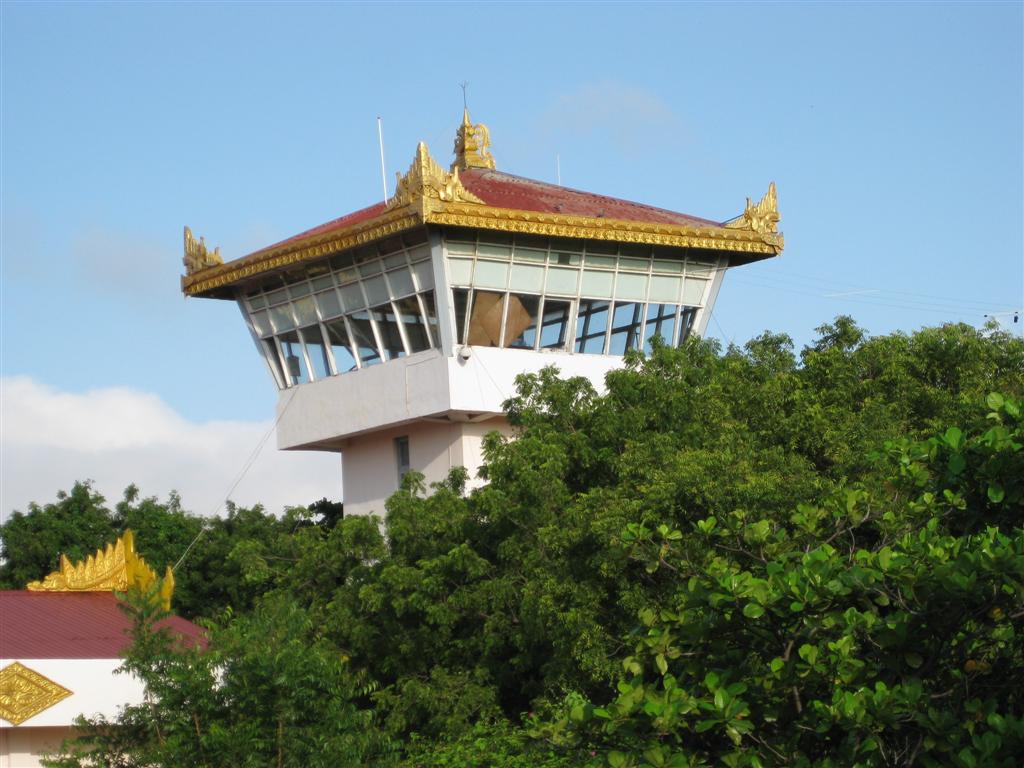
We flew on Yangon Airways, on a 70 seat ATR 72-210, turbo prop.
There are 3 domestic airlines in Myanmar. The tickets for each leg
were hand written (just like in the olden days.) Whereas the
international airport is new and gleaming, our terminal is old and
shabby. When it's time to board the flight, a man walked through our
waiting room with sign board. ox
When we arrived in Bagan, a "Nurses" stuck electronic
thermometers into each persons ear! They are checking for H1N1 flu
virus.
Bagan is located about one and 20 minutes north of Yangon on a
flat, semi-desert plain. The population is about 60,000 and it is
known for the 6,000 pagodas (religious structures) that dot the
landscape. We toured most of them, it felt like. The ones here tend
to be older (eleventh twelfth centuries) compared to the other
cities we visited.
We didn't see a real city ... lots of
narrow roads, often unpaved, with horse carts and few cars. Although
the area was dry, everything is bright green. Our Hotel was the
Tharabar Gate. The lobby was a large open structure with beams and
wood. The restaurant was open-air where tables were set along the
big swimming pool.
The Ayeyarwaddy River runs through Bagan and is the longest river
in Myanmar, running 1,200 miles north and south. The cars in this
country tend to be old models old, mostly Japanese. The duty on new
cars is so high, they buy used ones.
We visited a lacquer work shop and sales room. I really liked
this. I didn't realize what lacquer is and how it is used. It is sap
from a tree, harvested in a similar way that latex (rubber) is.
There isn't much processing other than filtering. Lacquer can be
applied to most anything ... woven bamboo, woven horse hair, coiled
bamboo, etc. The process takes 3 months, most of the time spent
drying between layers. Sometimes the lacquer is scraped, sanded and
polished. Intricate Designs are carved second and third colors are
applied.
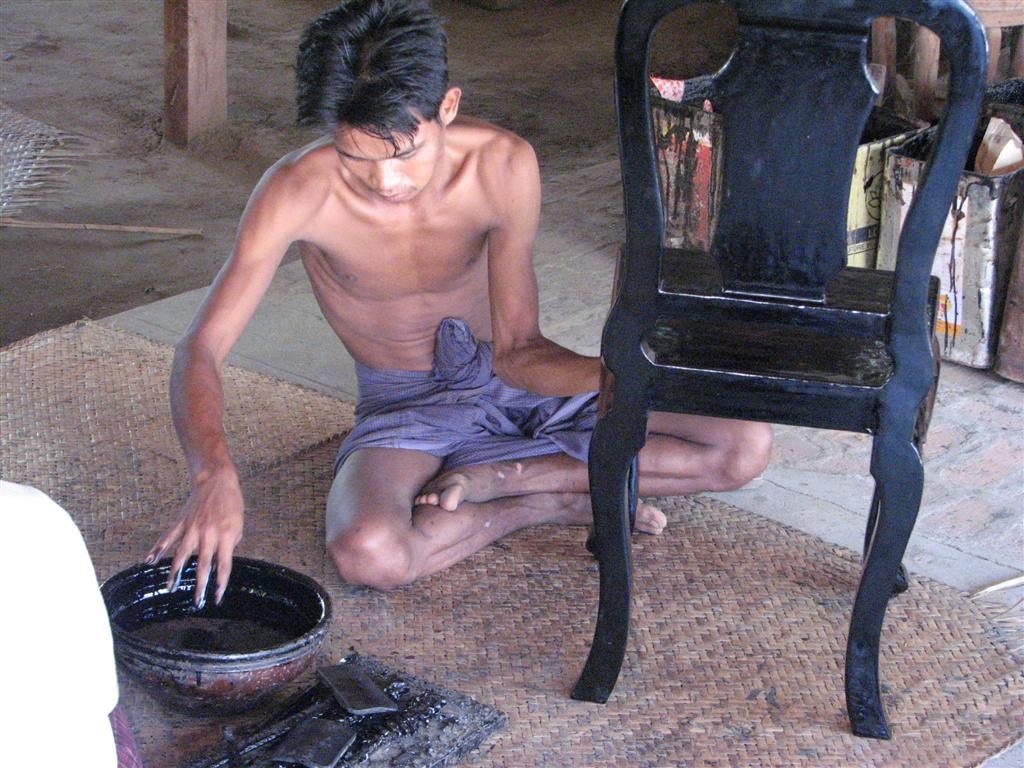

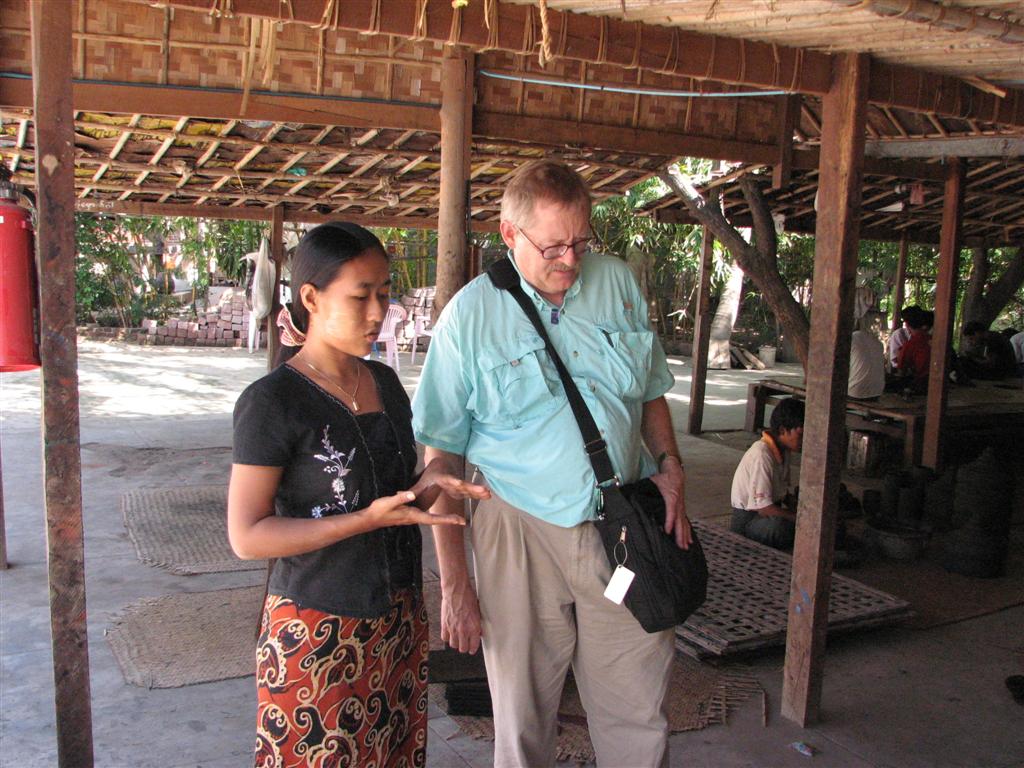
The bowls made out of woven horse hair and fine bamboo are
flexible when lacquered.
We bought some lacquer ware at good prices (compared to those
we've see in the past). Later on we the hawkers we waving lacquer
boxes at us and saying "$1.00, $1.00" (we paid $6.00).
The pagoda in this region are quite old. Inside you can
find murals, painted in the 11th to 13th centuries. Over the
years, the murals were covered by white wash. Now many are
waiting to be carefully restored when the funds and expertise become
available.
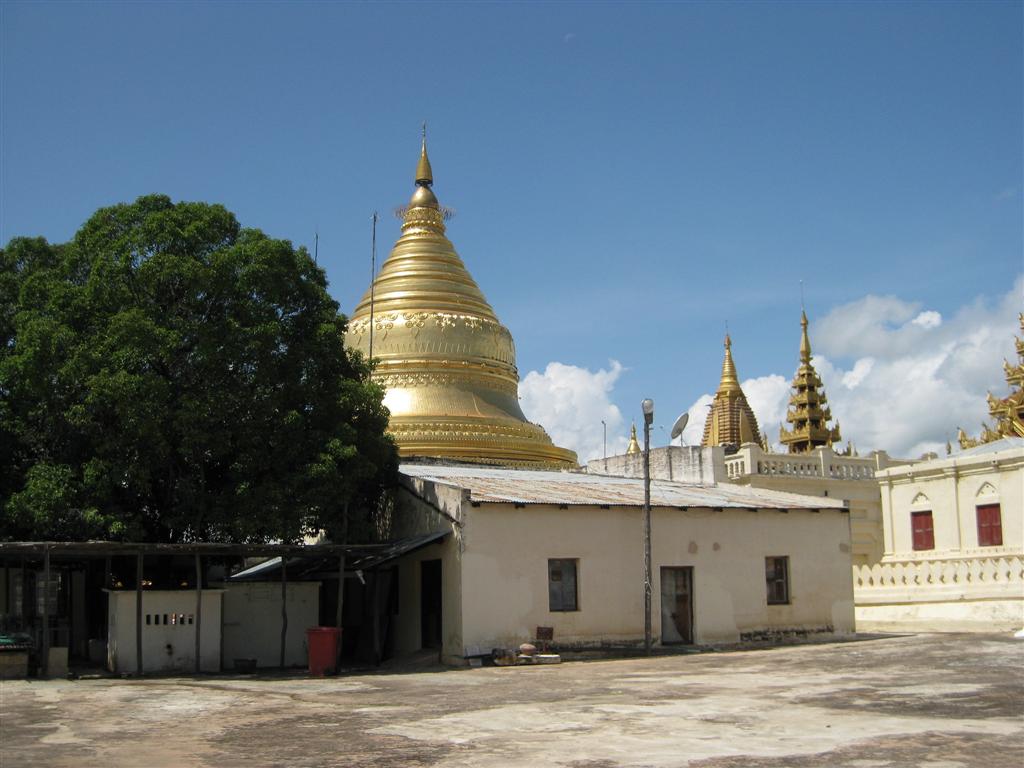
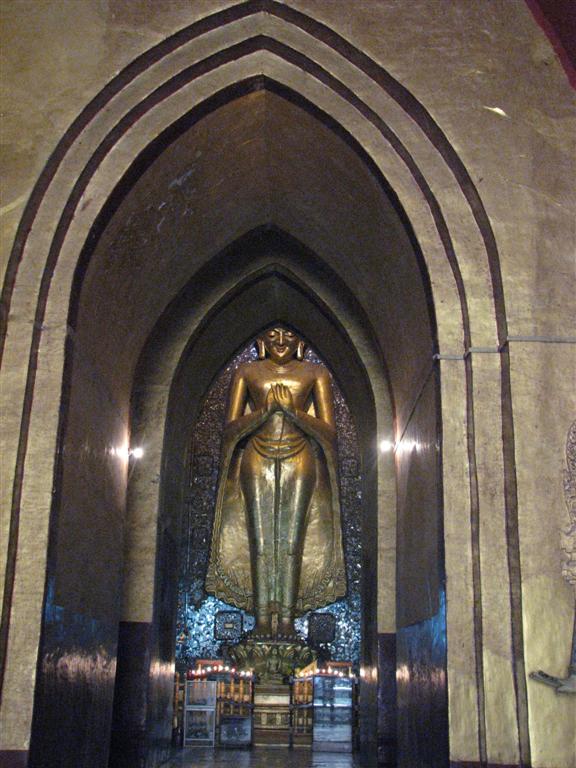
We ended up at a "Sunset Temple", climbing several stories high
on narrow, steep steps, joining lots of Europeans to watch the
beautiful colored skies over the Ayeyarwaddy River.
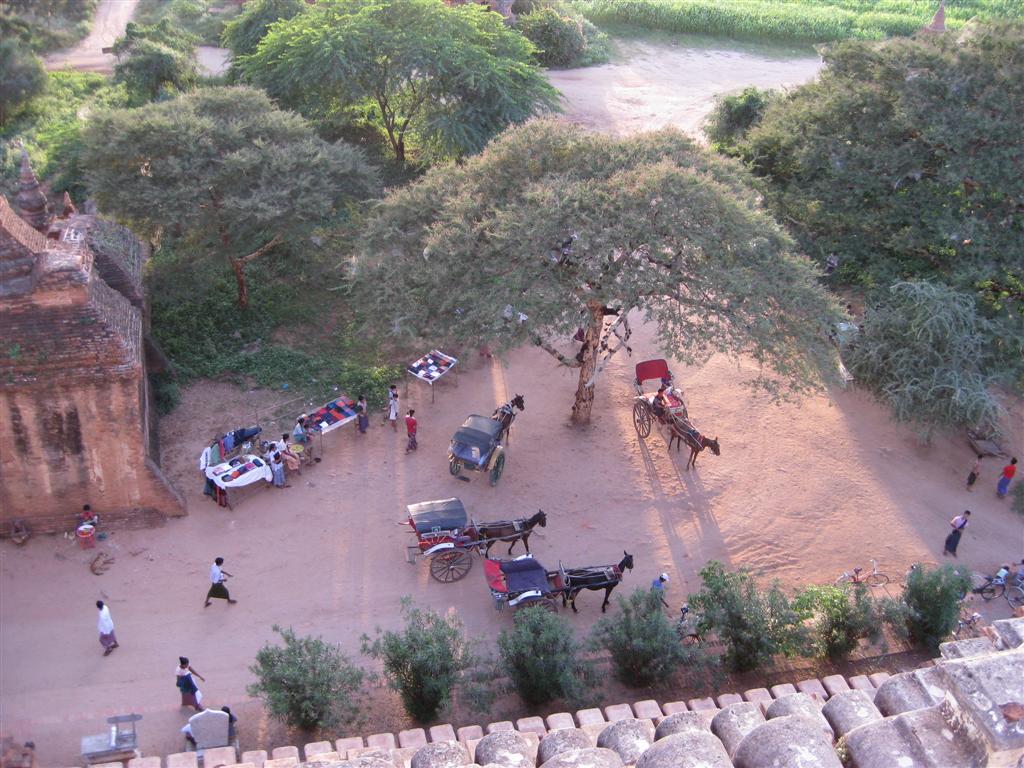
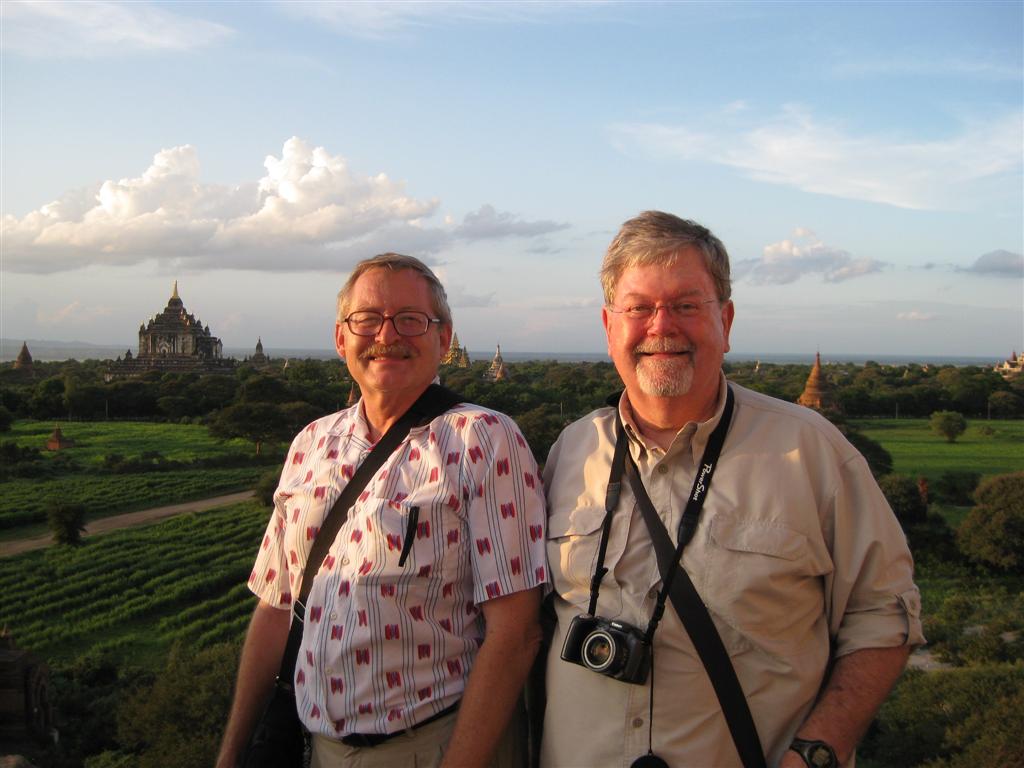
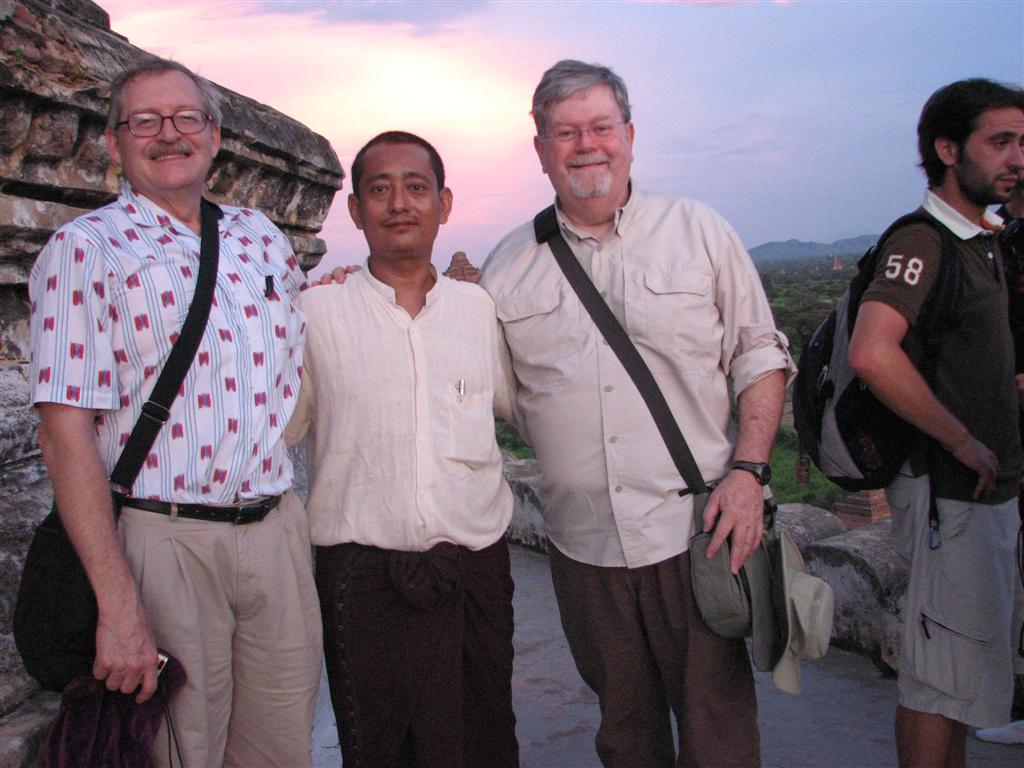
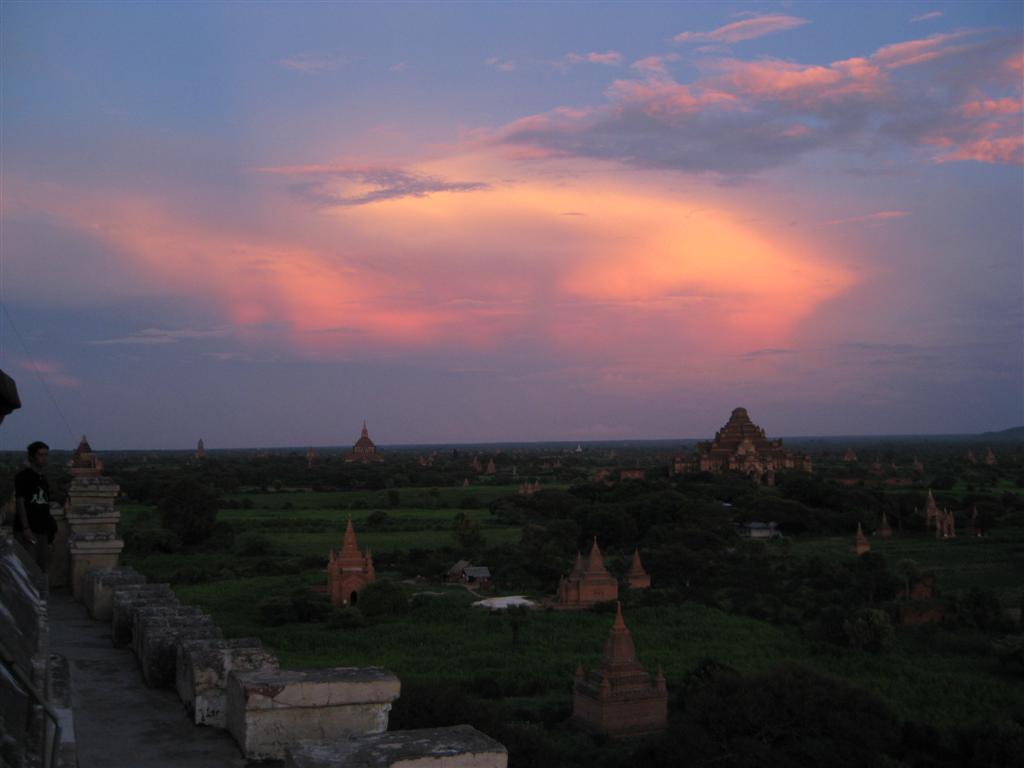
Our guide in Bagan was very knowledgeable regarding the history
of the area and the Buddhist theology. We would recommend him
for your English speaking guide. His name ias Kyaw Swe.
He can be reached at tel. 95-61 60632 and E-mail him at
KyawSwe@tomdaniels.com.
The set-price Asian dinner at our hotel was $18. |
| October 12,
2009 Mandalay, Myanmar: After breakfasting under the
trees at the Tharabar Gate Hotel in Bagan, we were taken to the
airport. We paid our bill in US dollars. If we were to pay in Kyat,
they would add another 20%.
A 30 minute flight took us to the Mandalay Airport. From there we
had a long drive into to the city. We stopped at Amarapura, the
location of the Myanmar King, shortly before the invasion and
colonization by the British in the late 1880's. At that time,
the Royal Palace was moved to Mandalay.
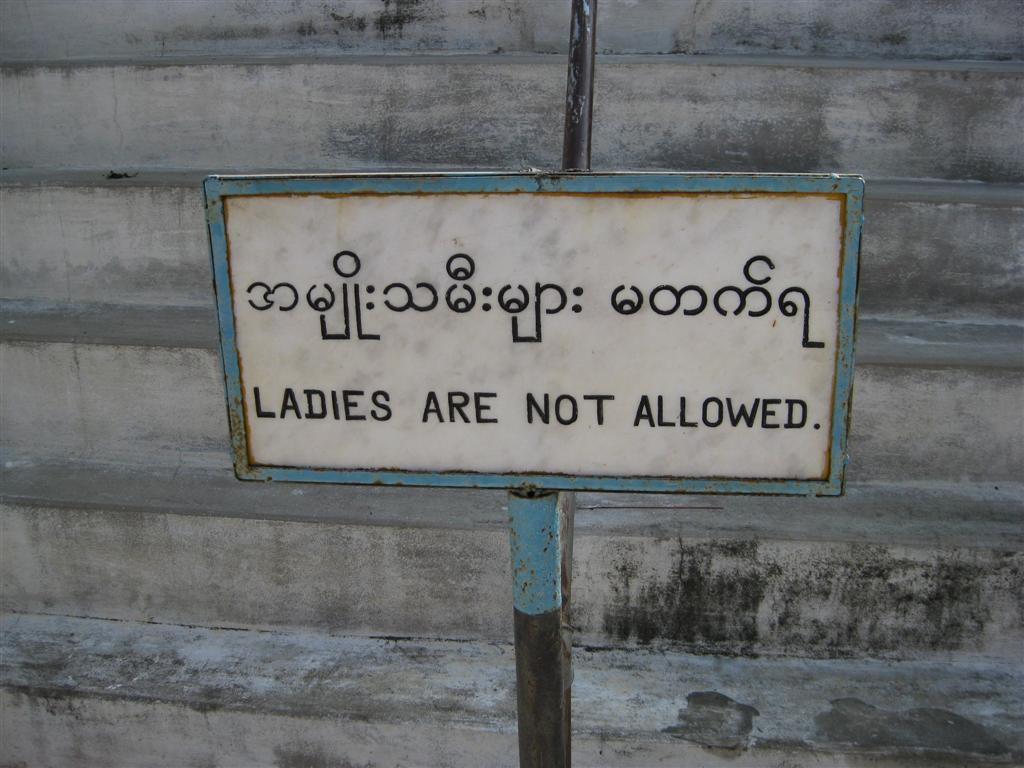 Sign at a Amarapura pagoda
Sign at a Amarapura pagoda
The long drive in from Mandalay Airport took us to the Sedona
Hotel where we are staying. There was a sign over door welcoming a
distinguished Army General from India, and his wife. There was heavy
security at the hotel and around the city. The Royal Palace (on our
itinerary) was closed and some streets were closed as well as the
escalators to Mandalay Hill!
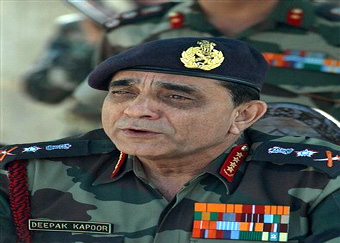 Gen Deepak Kapoor
Gen Deepak Kapoor
We went and visited a monastery where we observed the ritual of
the monk's lunch procession. When the gong is sounded, many young
Buddhist men lined up with their eating bowls and enter dining
halls. Tourists stand along the walkway, a gauntlet of cameras. This
is at 10AM and is their last meal of the day. They must not eat
anymore after 12 noon.
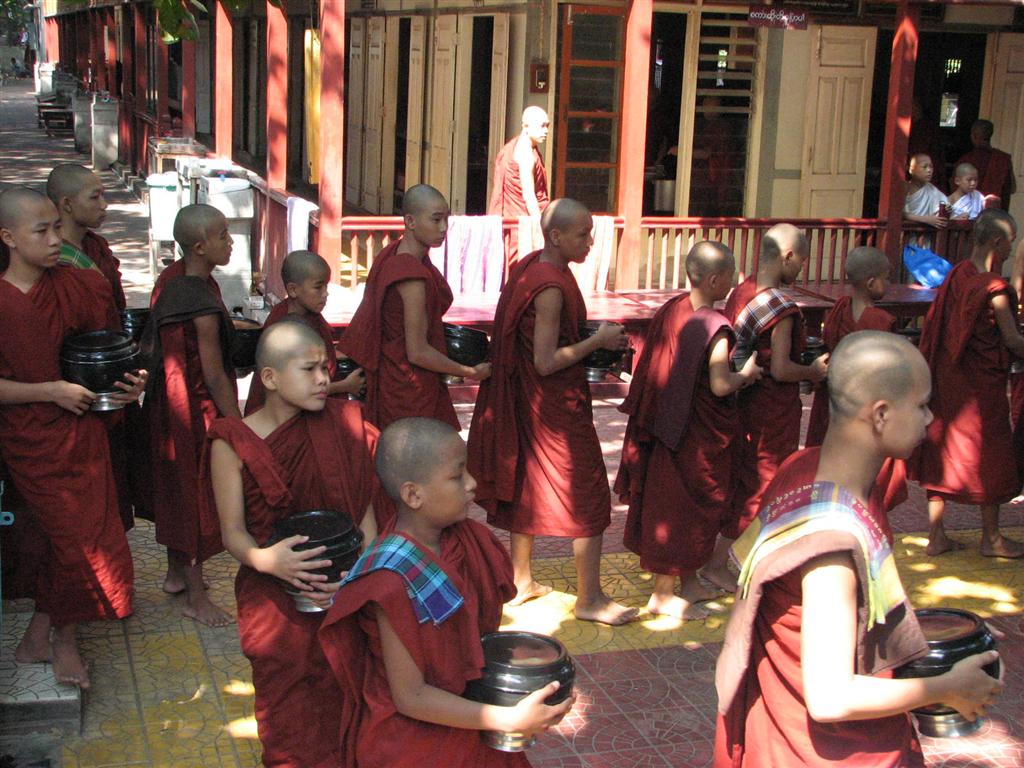
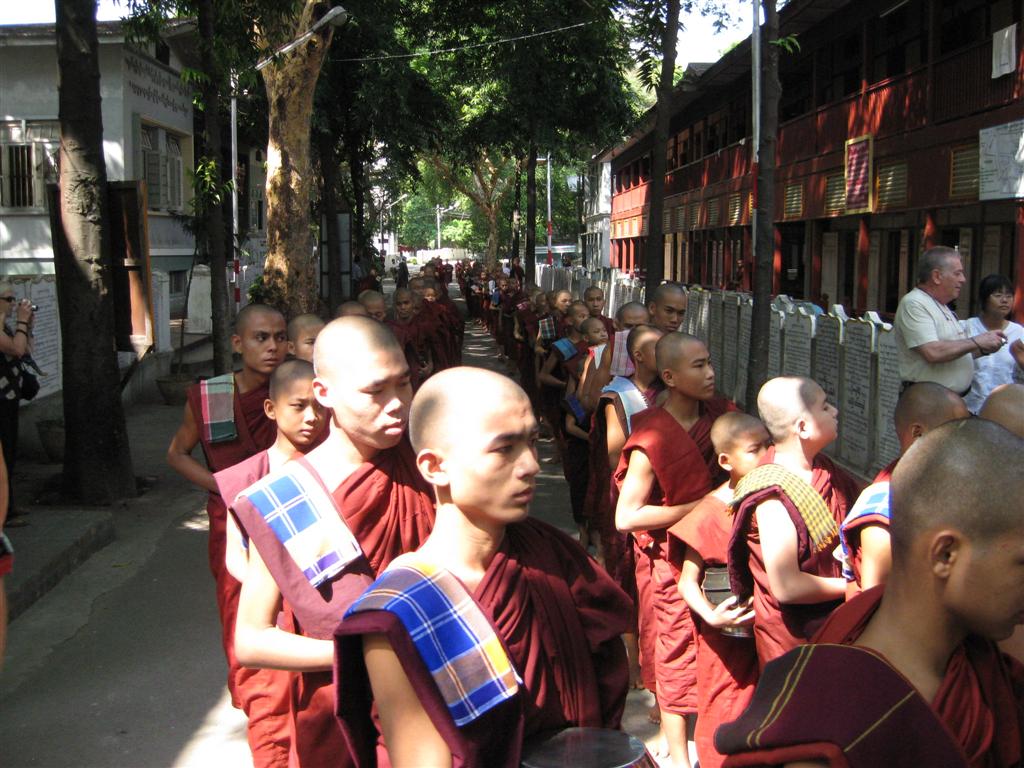
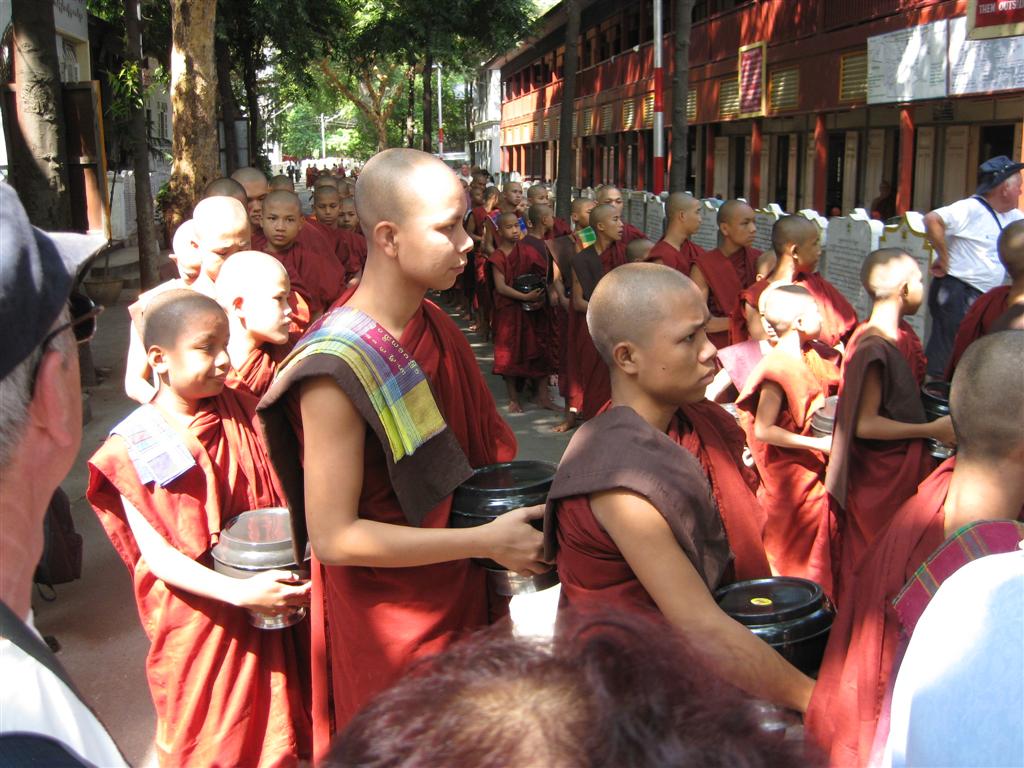
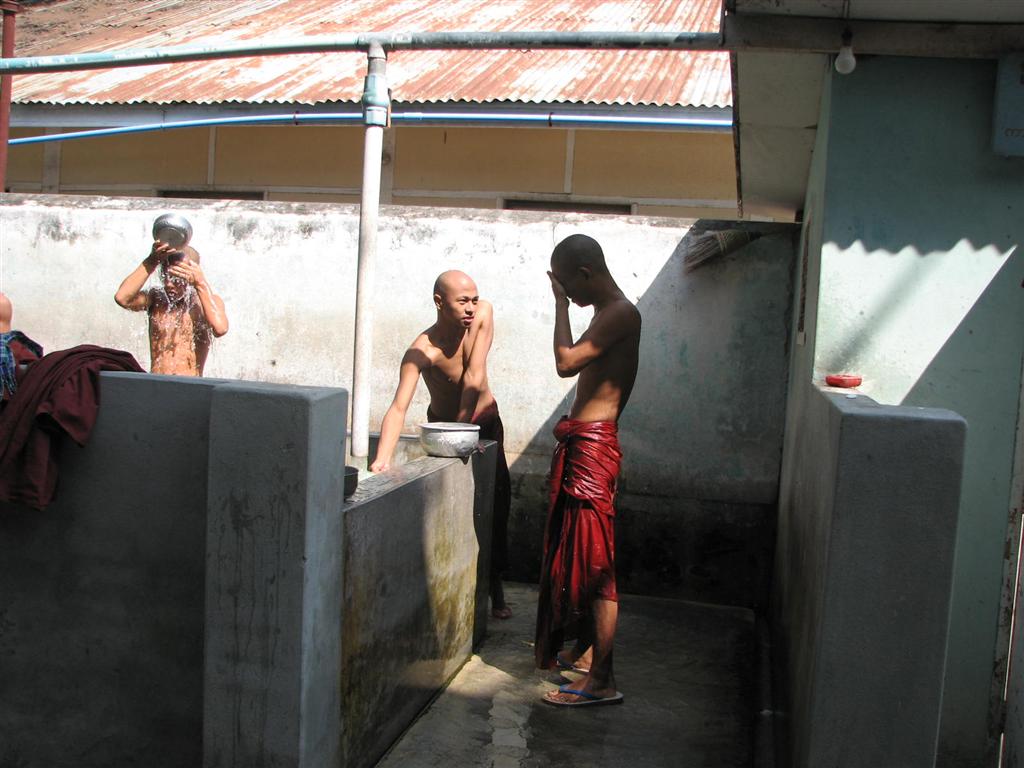
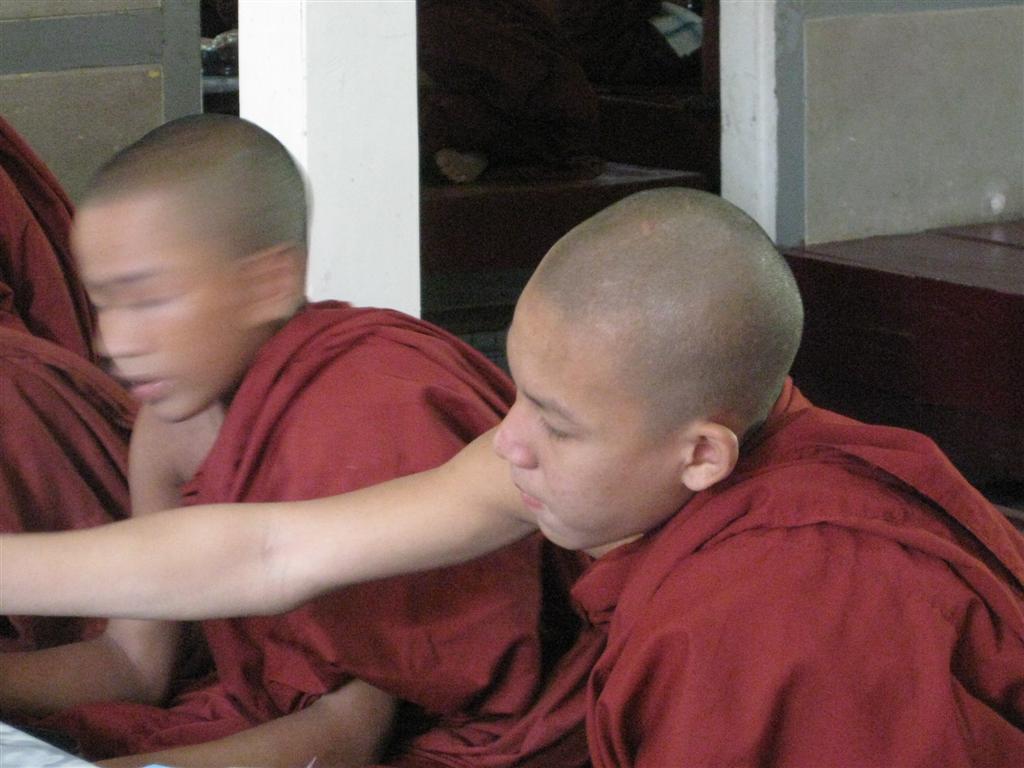
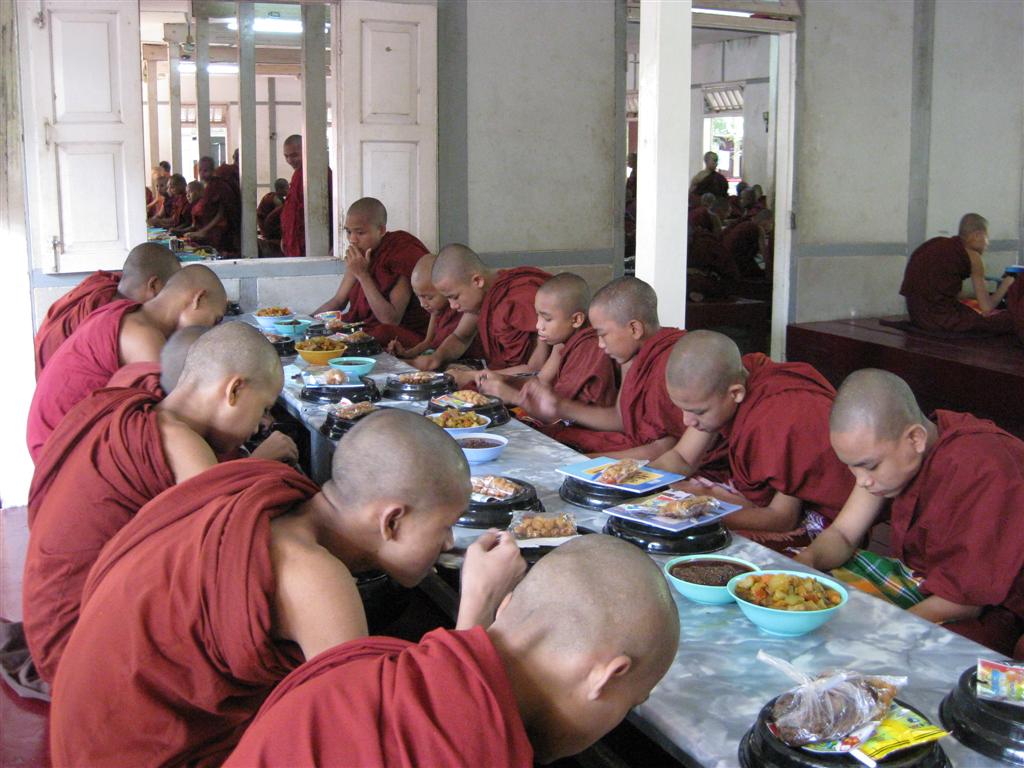
At nearby Lake Taungtaman, we walked across a 1.5 km Teak Bridge
bridge and saw boatmen (like gondoliers) and a duck farm.
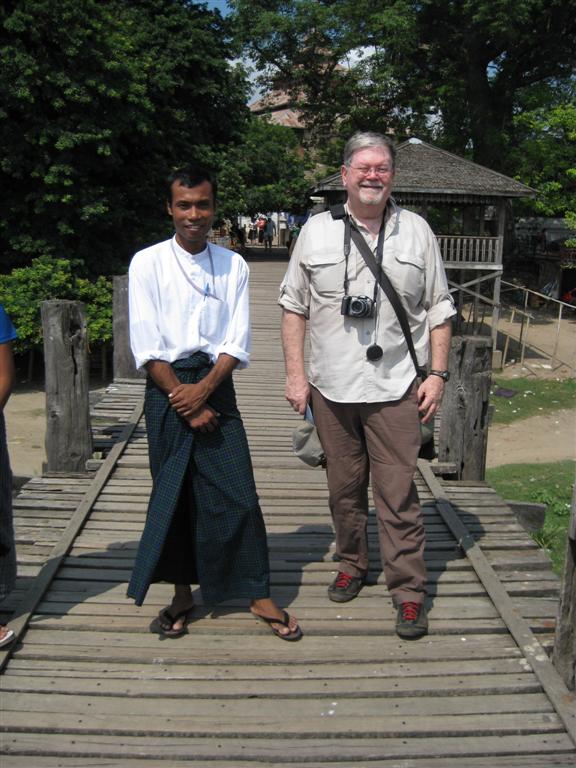
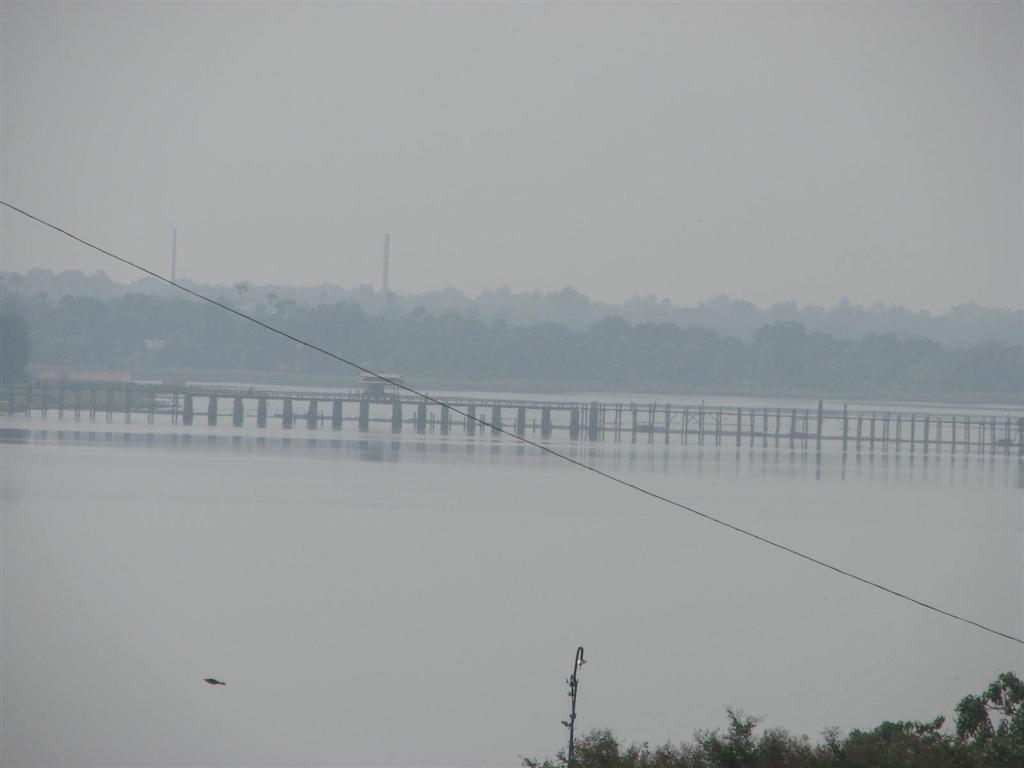
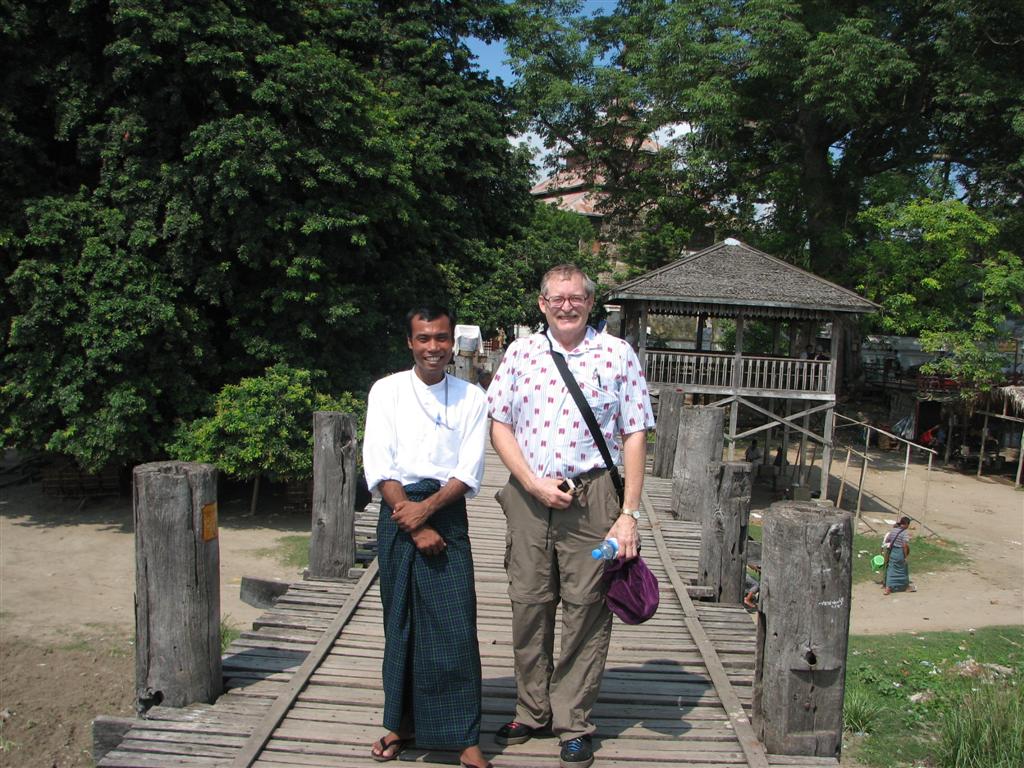 With guide on teak bridge
With guide on teak bridge
We asked about buying men's Longyi's, a long skirt like garment,
so we were taken to the weaving shop and saw where the material was
actually woven. They come in several sizes and we bought several of
the largest ones, as all of the men here are very thin!
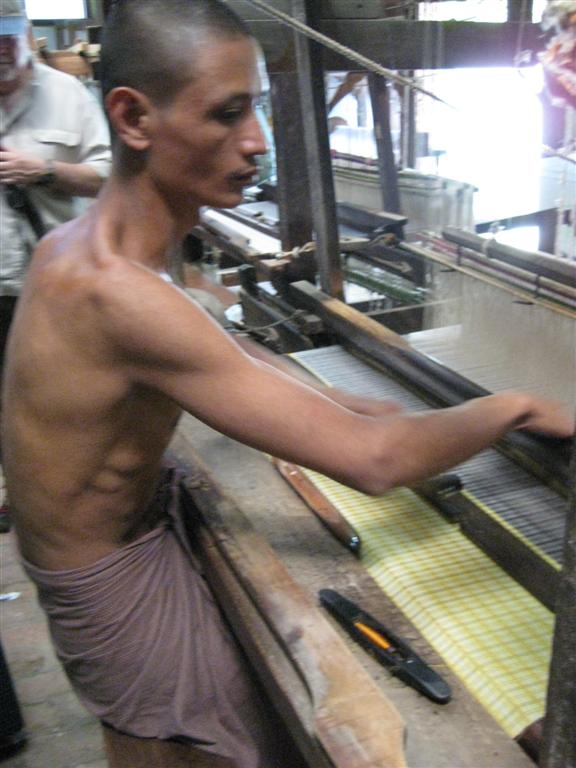 Weaving cotton fabric
Weaving cotton fabric
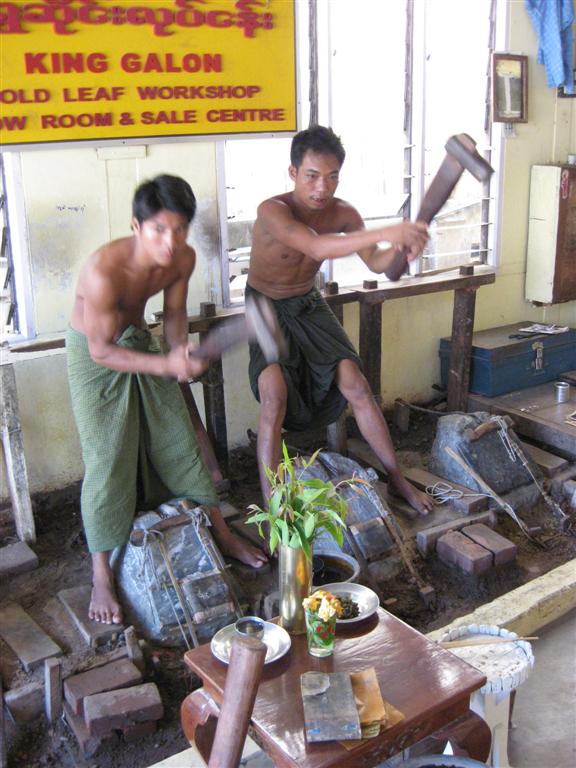
Smashing gold to make gold leaf
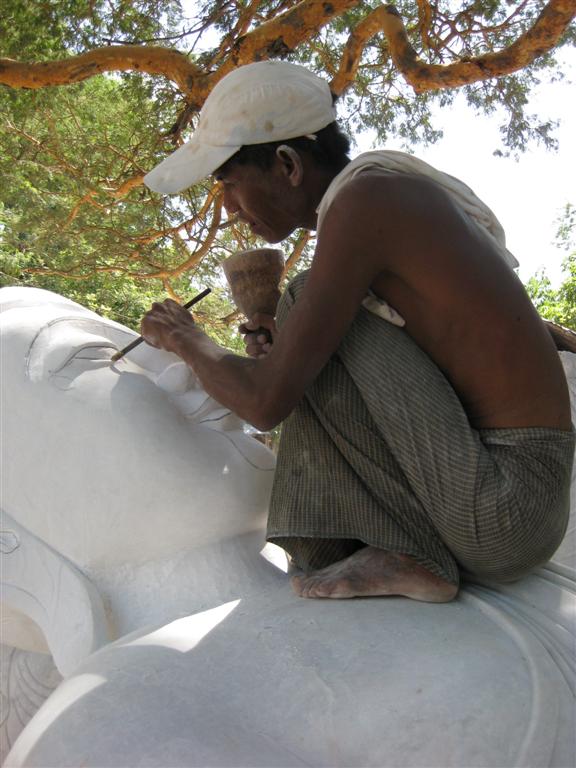 Carving marble
Carving marble
The Royal Palace was closed (the Indian VIPs), so our guide took
us to a Tea shop. We sat around a table on little low chairs. There
were 4 of including the guide and driver. We had 1 coffee, 2 teas, 1
"7Up" soda and a tea pot for the 4 of us. The cost was 90 US cents.
Coca Cola and coffee usually cost around $2.50.
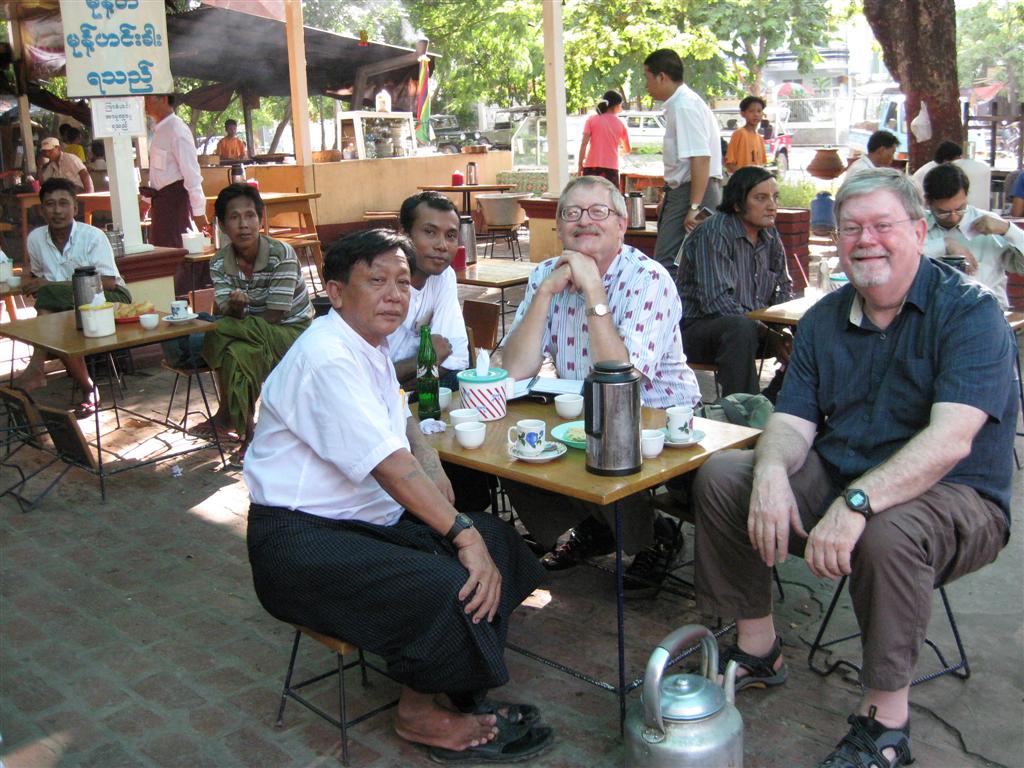 at a tea shop with guide and driver
at a tea shop with guide and driver
We saw the beautiful carvings on the Teak Pagoda before going on
to the Kuthodaw Pagode known as the world's largest book. There are
729 marble slabs, inscribed with Buddhist doctrine. The tour ended
with a view of the sun setting on from Mandalay Hill.
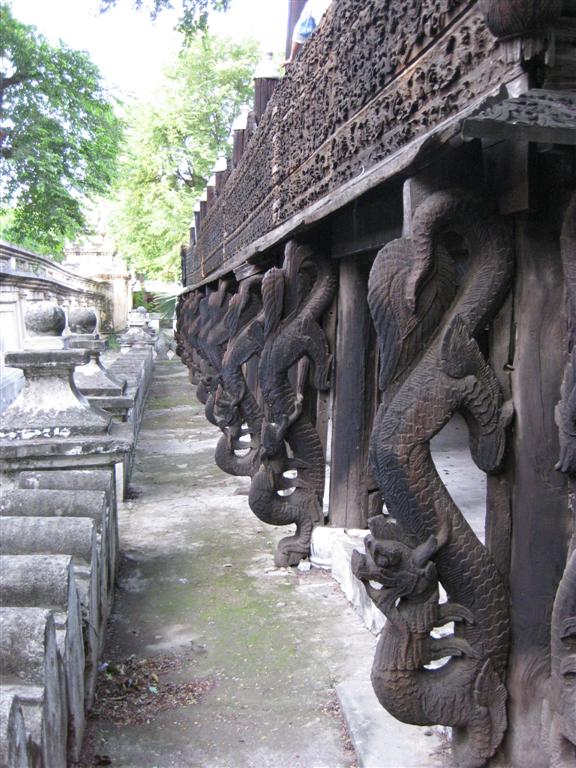
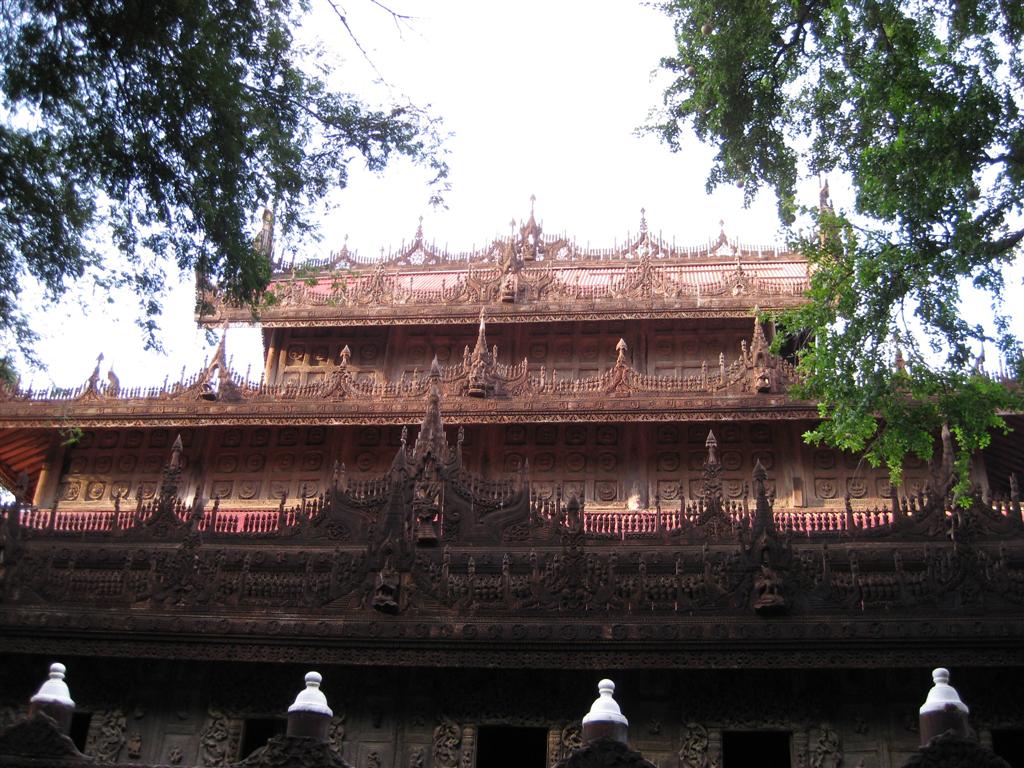 Teak Pagoda
Teak Pagoda


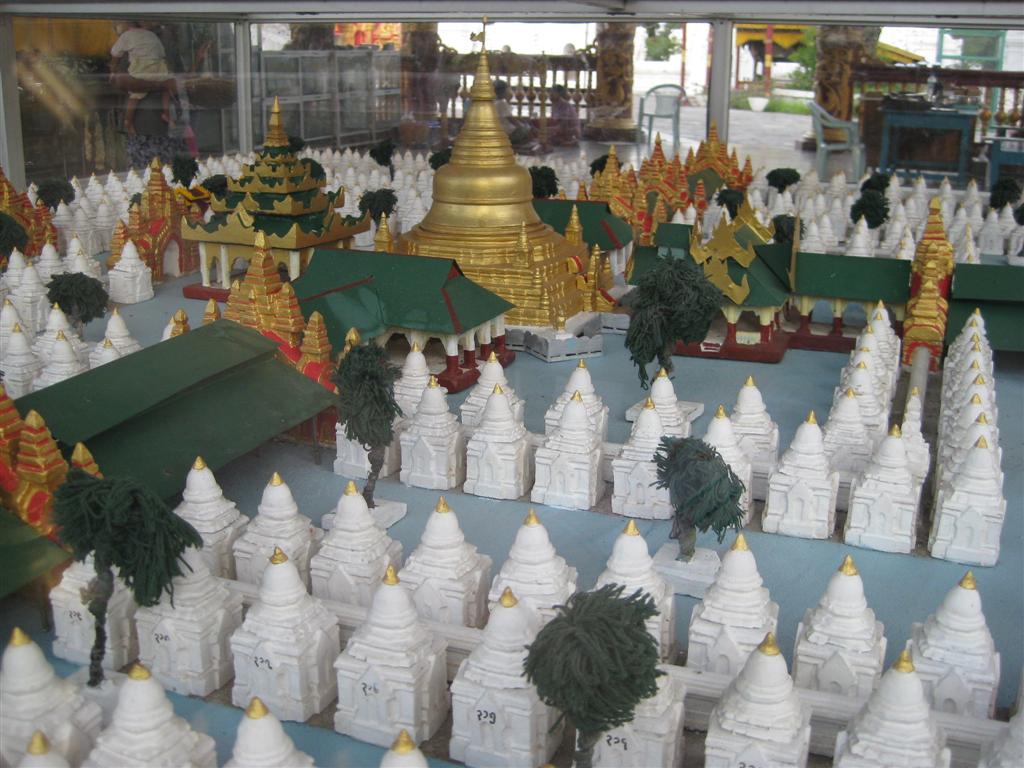 Largest Book
Largest Book
Our guide joined us for dinner at local Yunan (Hunan) Chinese
restaurant. Very good. It was close to our hotel so we could walk
there past the many police and army security people.
Our guide in Mandaly's name sounds to us like "Al Al", and it is
spelled "Aung Aung". He was friendly, had a great sense of
humor and really knew his subject area ... history and geography and
religion of the Myanmar. His name is Aung Ko Myat and
hisE-Mail is
AungKoMyat@tomdaniels.com We highly recommend this English
speaking guide.
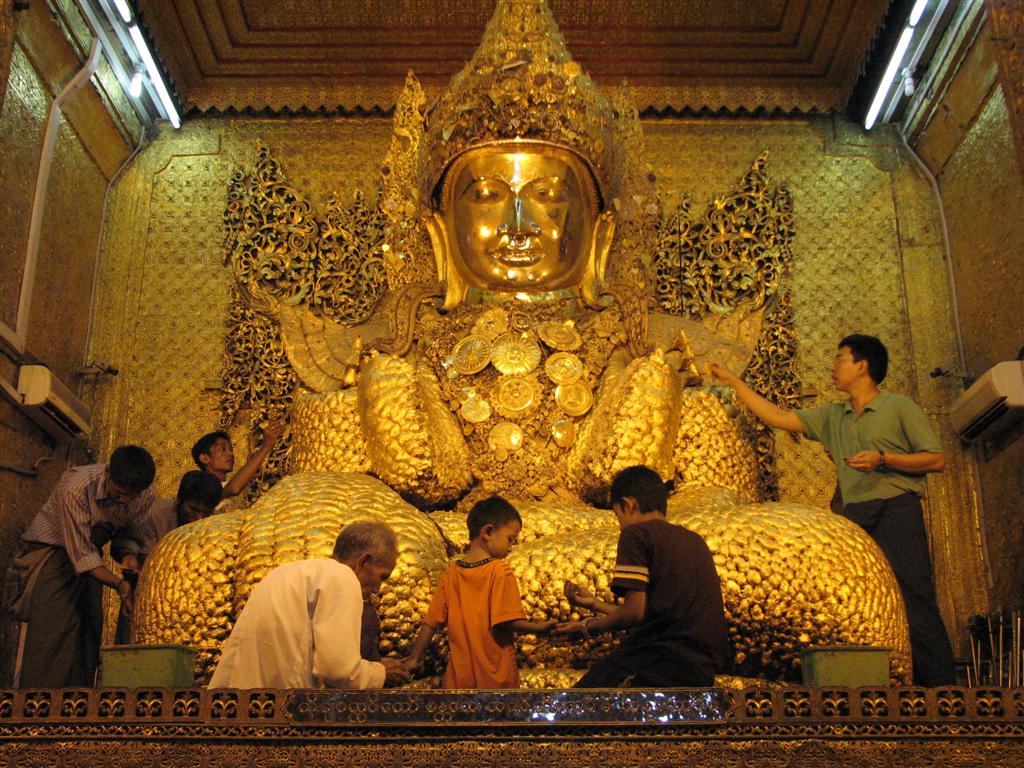
Applying gold leaf to Buddha
|
| October 14,
2009 Lake Inle, Myanmar Our 30 minute flight was 30
minutes early (in taking off and landing!) and we were met by Ei Ei
("Ee Ee"). Her name is Nang Aue Nyein Ei and her E-mail is
NangAyeNyeinEi@tomdaniels.com Ei Ei was very upbeat and
friendly. Her English was very good and she knew the area very
well. She show us so many different things. We highly
recommend her when you need an English speaking guide in Myanmar.
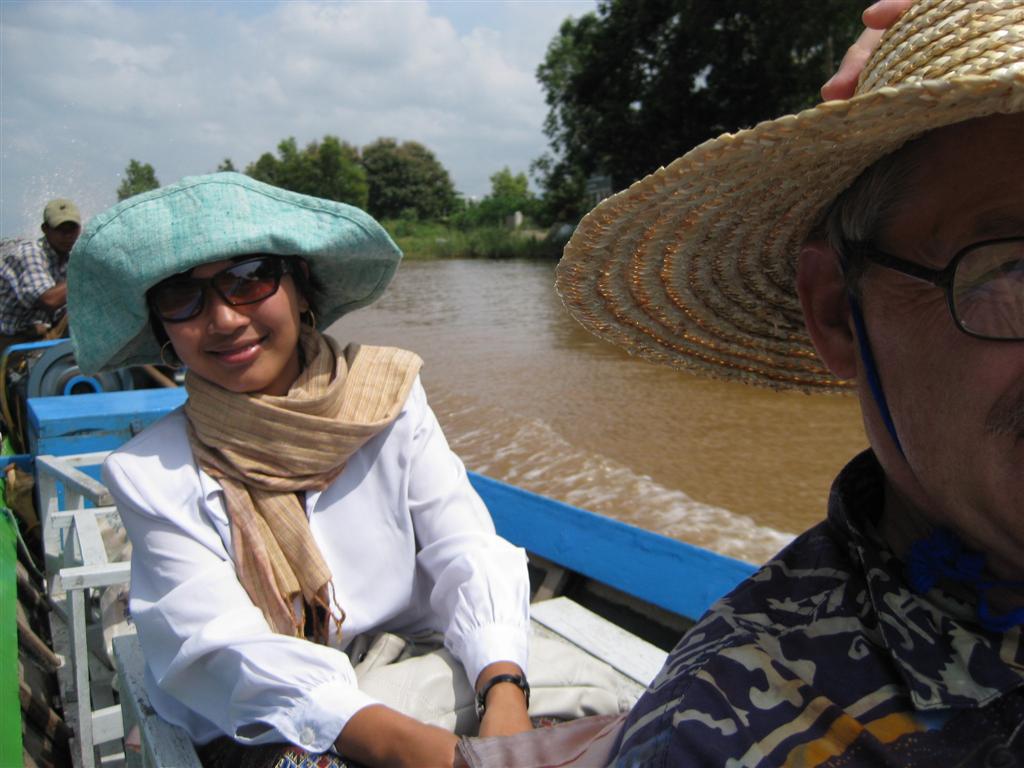
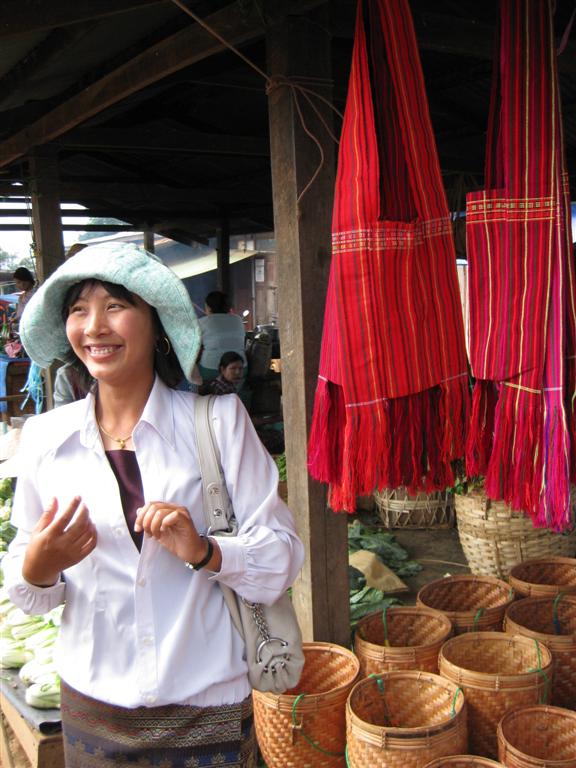
We arrived at the Heho airport and from there she took us to Lake Inle, but along the way we stopped at a "once
in every five day" market. Everything imaginable was for sale. Food,
clothing, meat, fish, spices, vegetables. I bought a straw hat. The
strangest thing I saw was tofu made out of garbanzo beans (yellow
color).
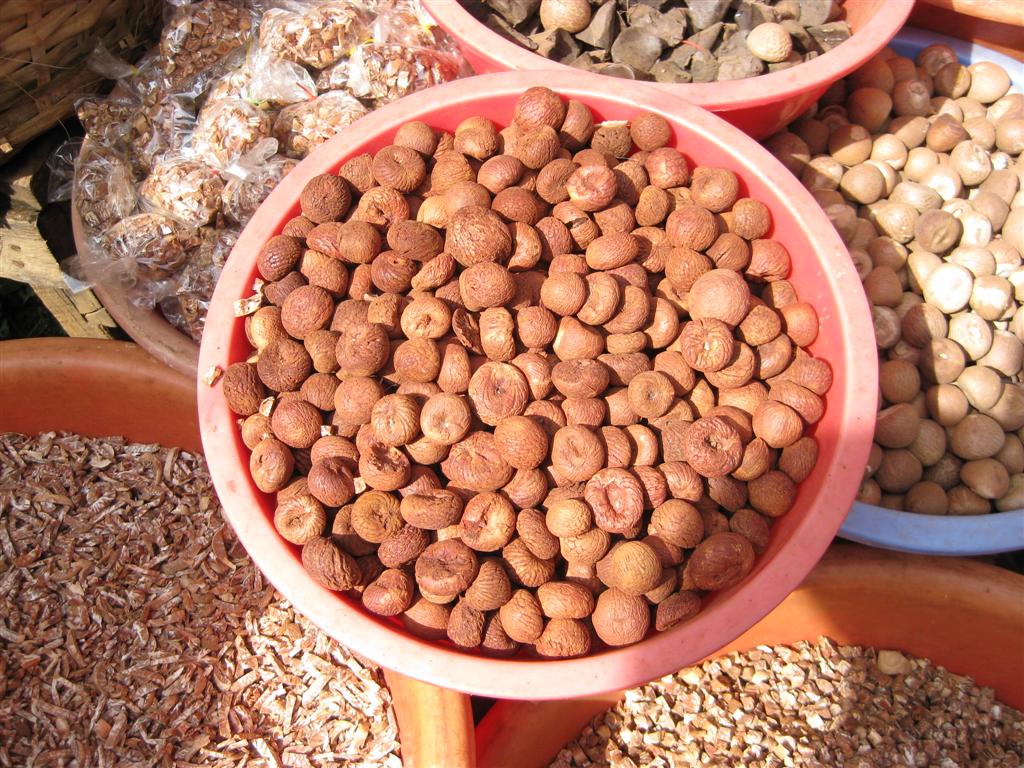
Areca nuts
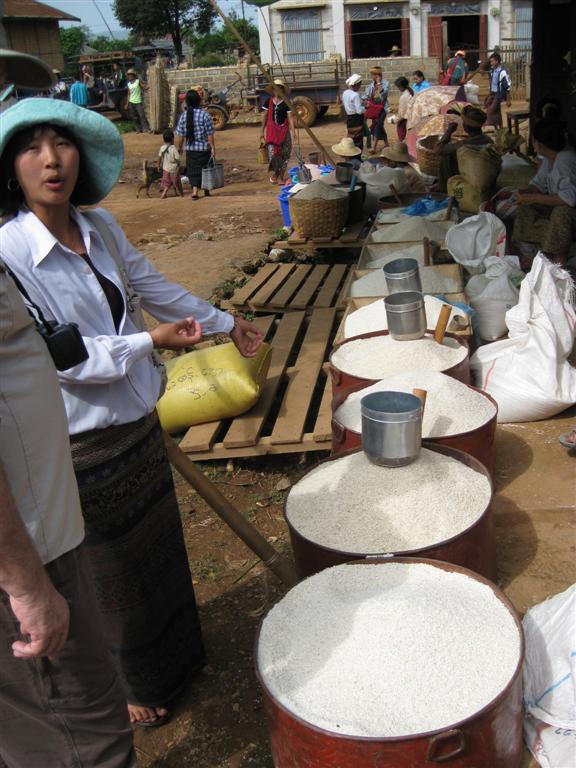
Different grades of Rice
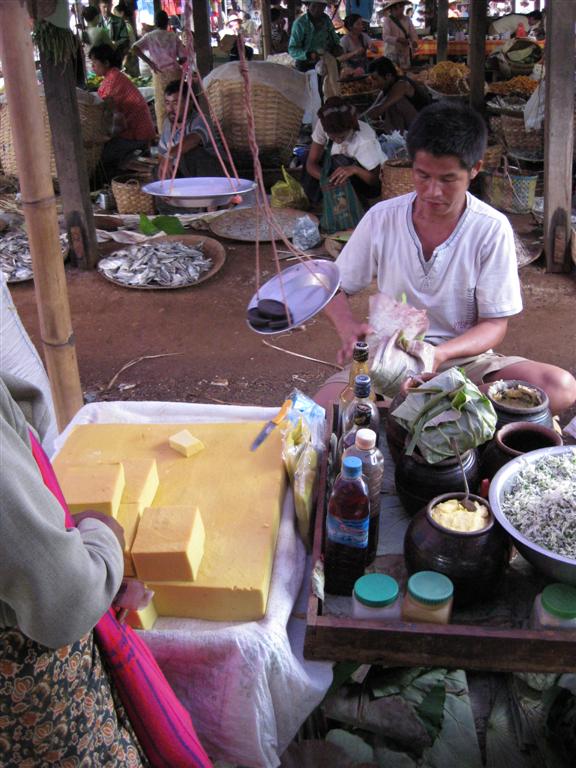
Tofu made out of garbanzos
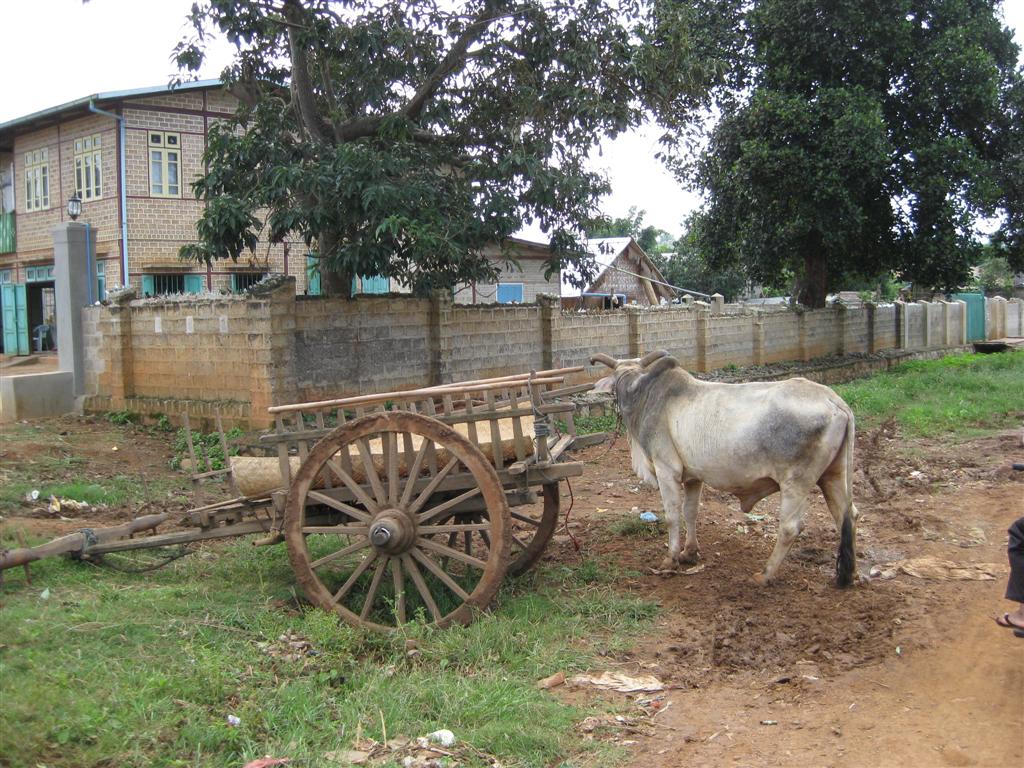
Farmer's transport
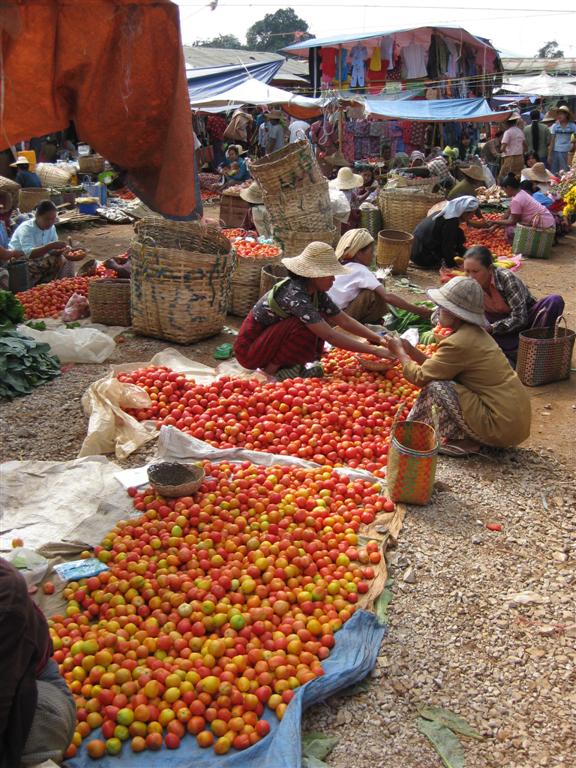
Tomatoes (big crop here.)
We also observed how the local people prepare and chew betel. It is the betel
leaf in which is wrapped flavored
tobacco, areca nut (often inaccurately called
the "betel nut") and lime. These ingredients react with
the alkaloids in the leaf to enhance the effects when chewed.
A red juice is spit out and the teeth turn black.
From the this market at Heho, we drove to the south end of the
lake and boarded a narrow, long boat with seats for 4 plus the
boatman. A diesel engine propels the boat. The boatman starts the
engine with a crank. It seems to have a lot of power and the boat is
speedy. Lake Inle is the larger of 2 lakes joined by a river. The
people moved here in more recent years (several generations ago) and
make their living by farming, fishing and making crafts.

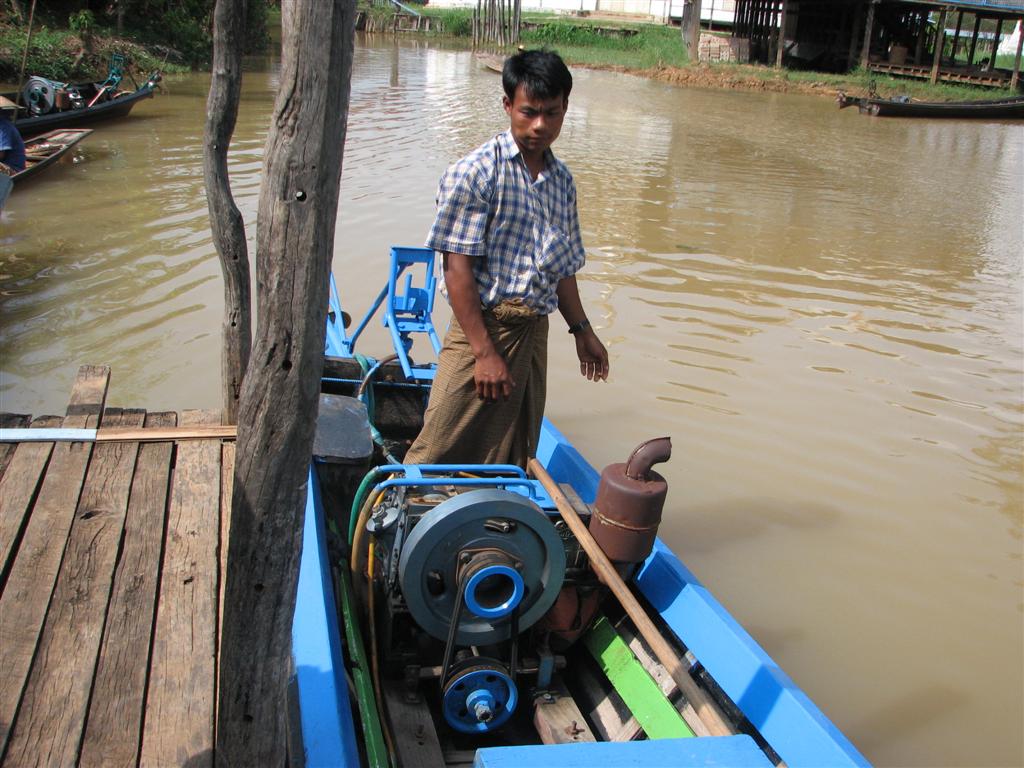
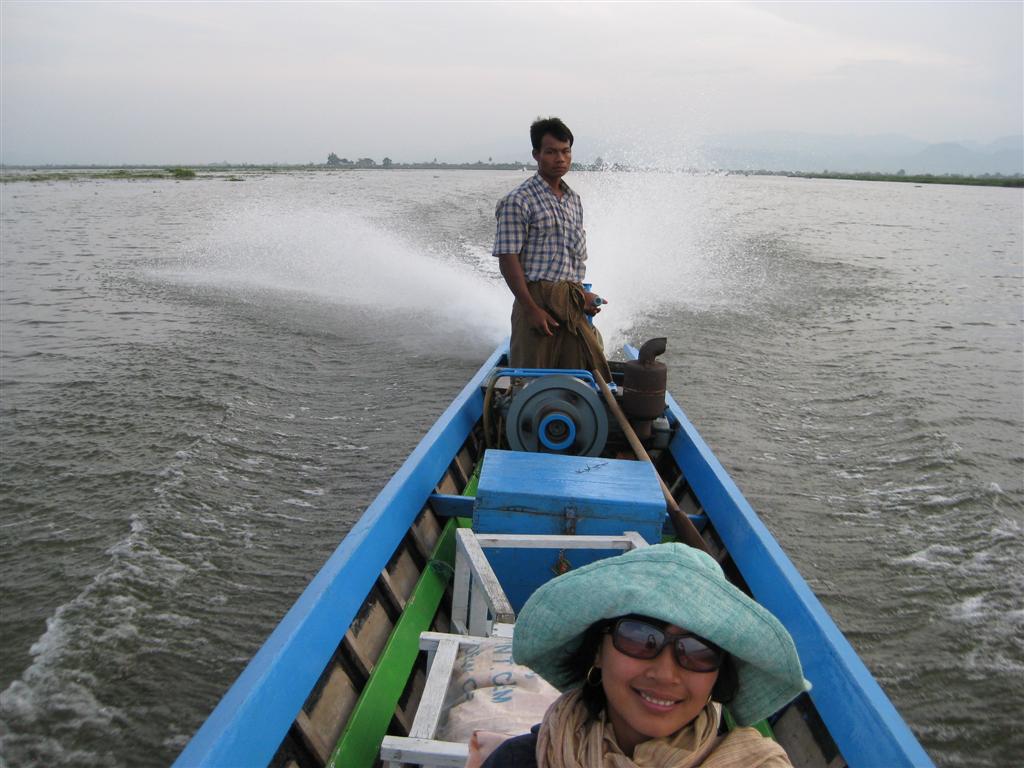 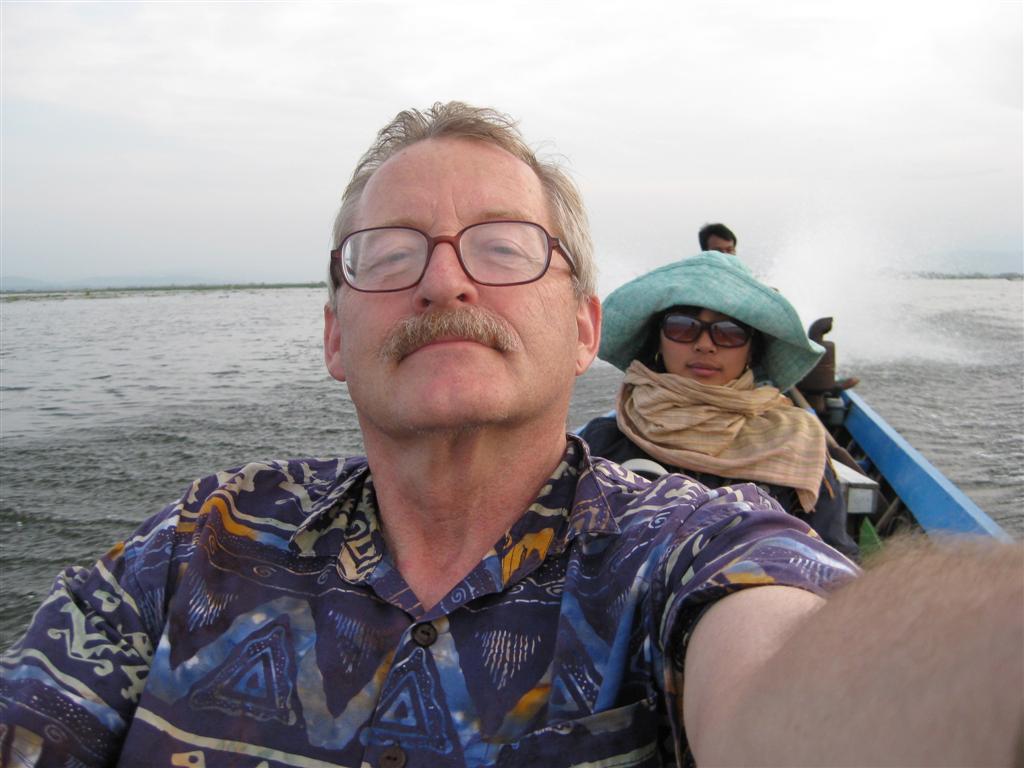
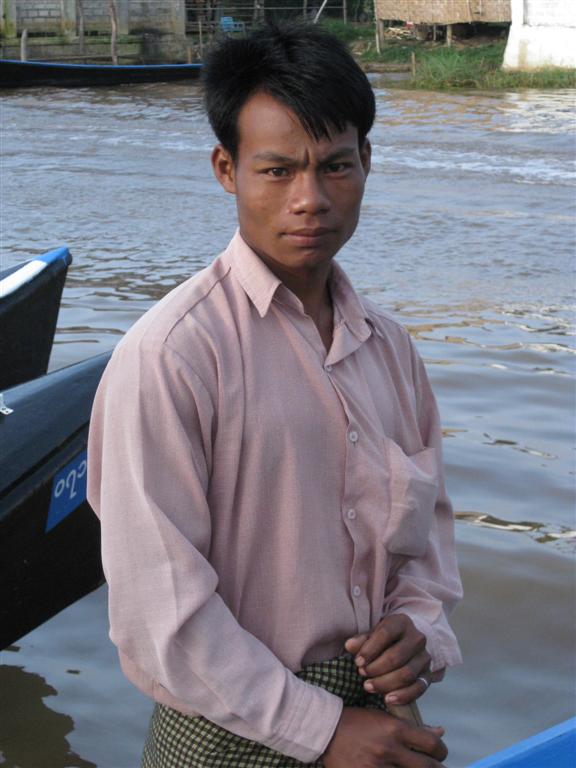
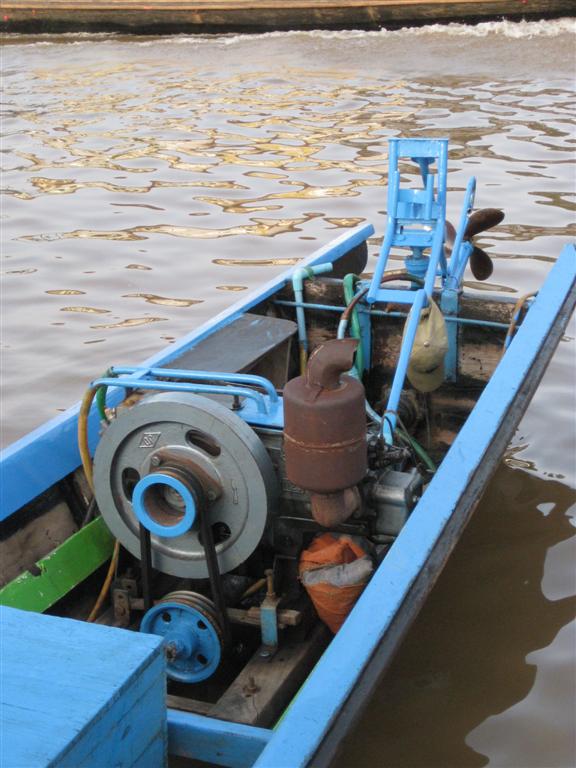
Boatman and boat engine
We stopped at a number of temples and monasteries before reaching
our hotel, the Inle Resort. From the lobby of the hotel, we walked
down paths to our villa ... a large, two room accommodation. After a
short rest, we took off to see the sights.
Before we reached the
first one, a fisherman out in the middle of the lake showed us how
he fishes with a large conical hoop, lined with a net. The
conditions have to be just right ... he watches for bubbles (from
the fish) and drops the trap on top of them, stirs up the water
inside and drops the net on them.
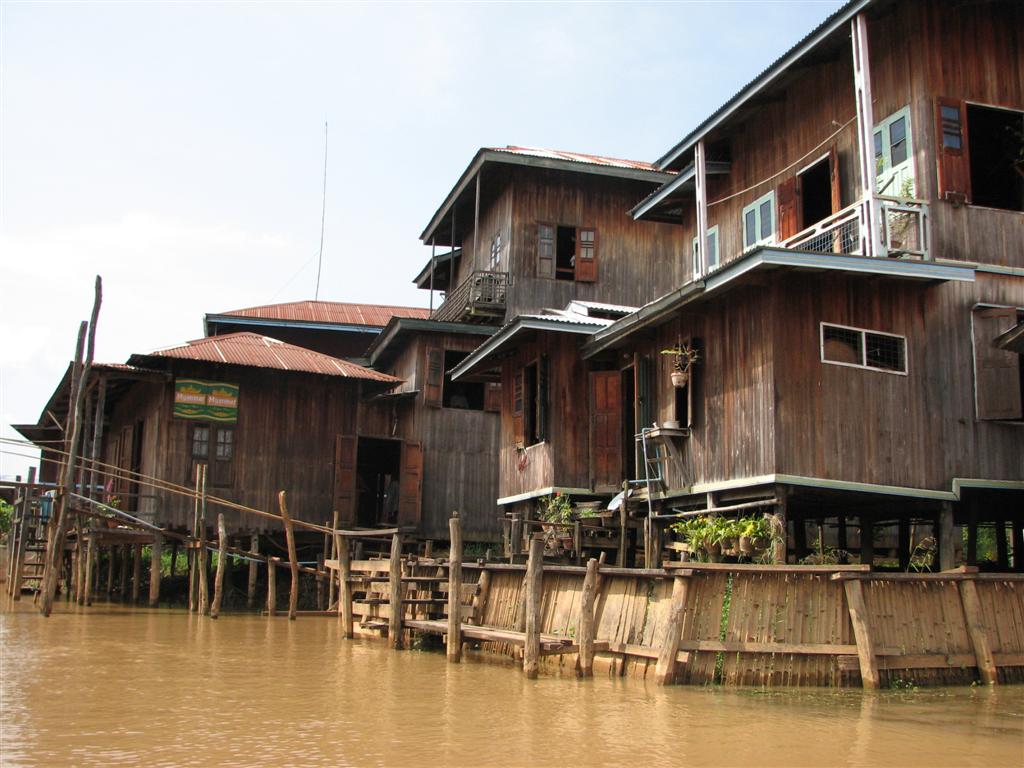
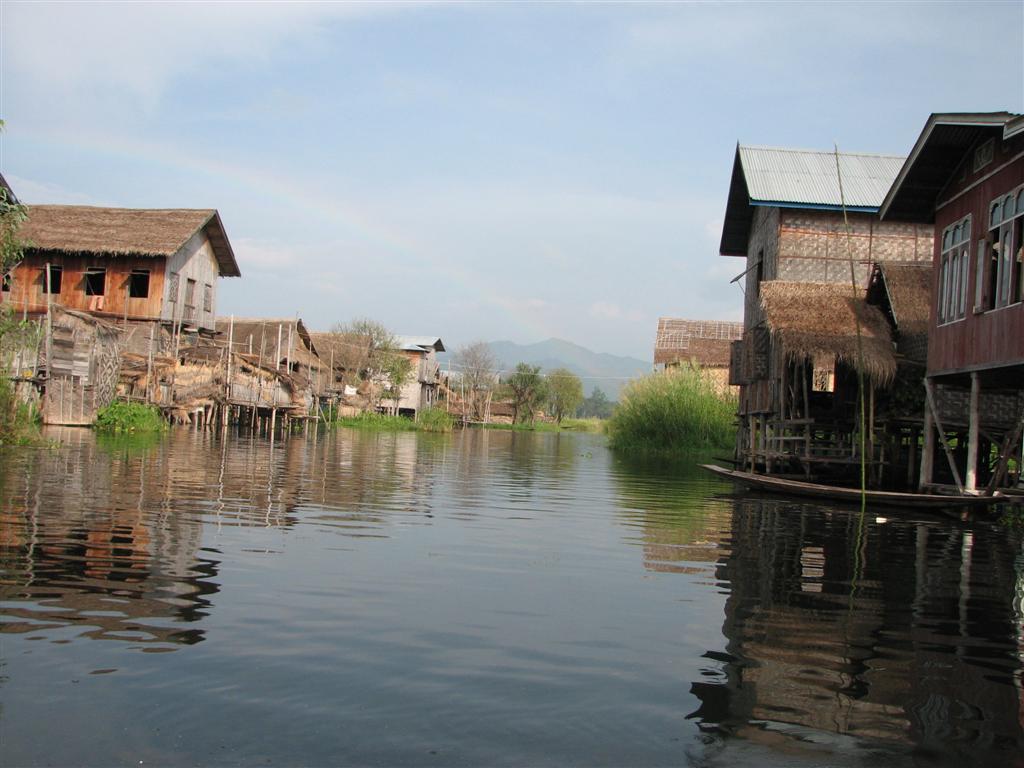
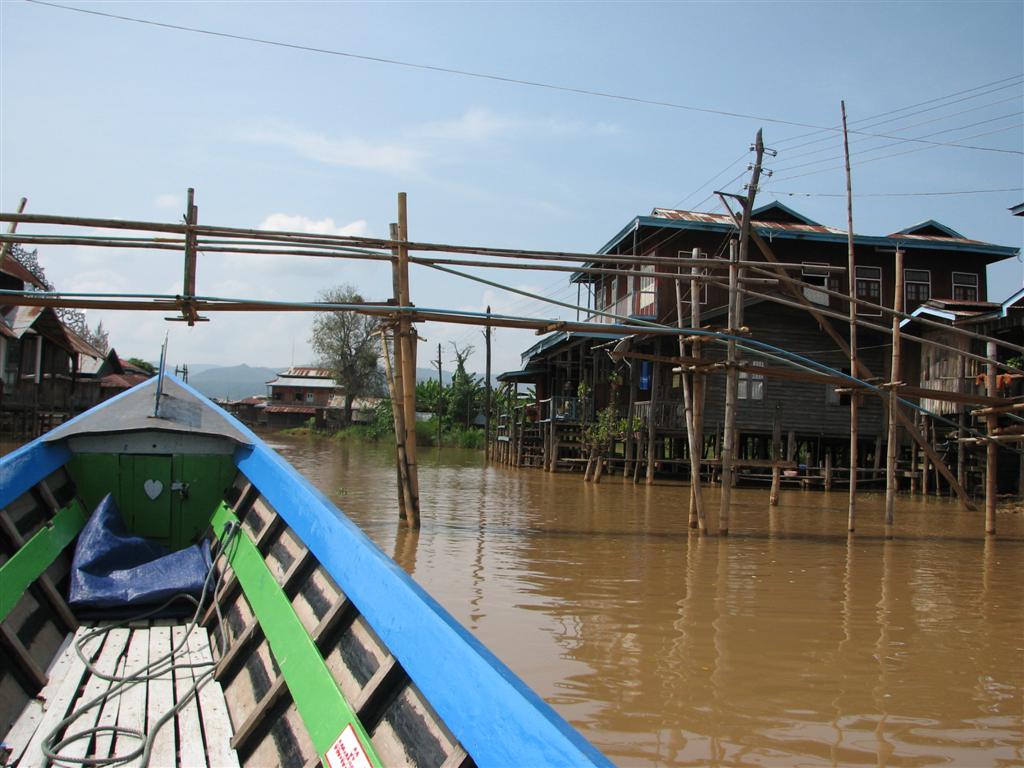
Village Scenes
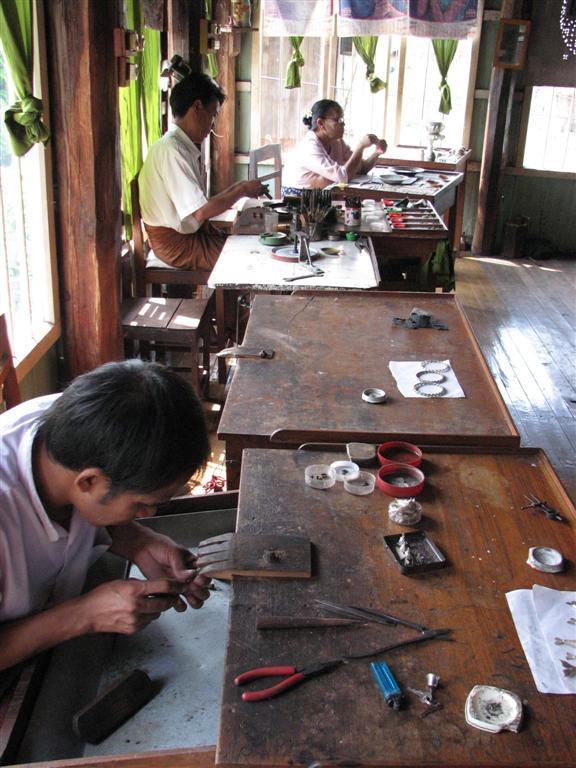 Silver workshop
Silver workshop
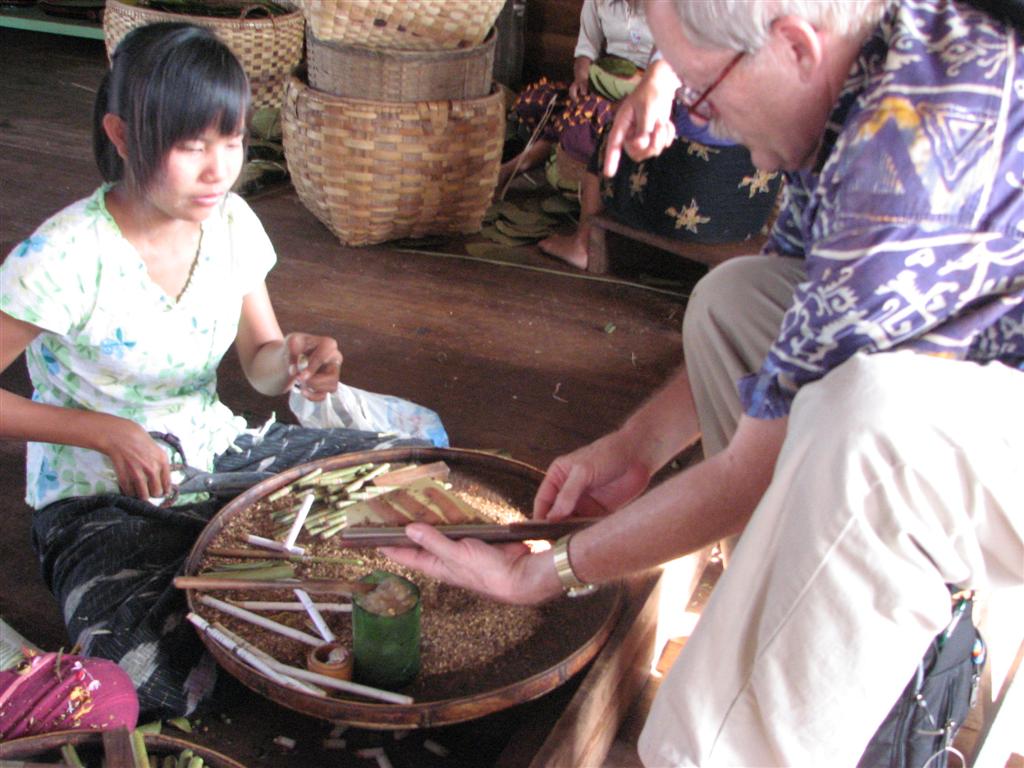

Me making Cheroots
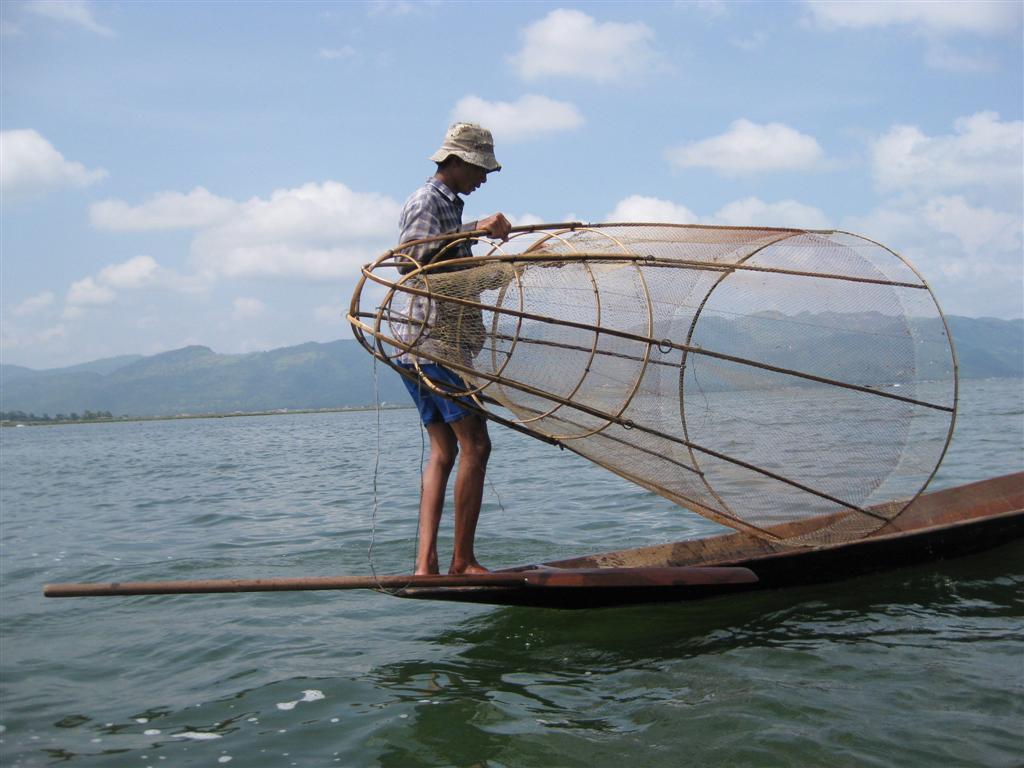
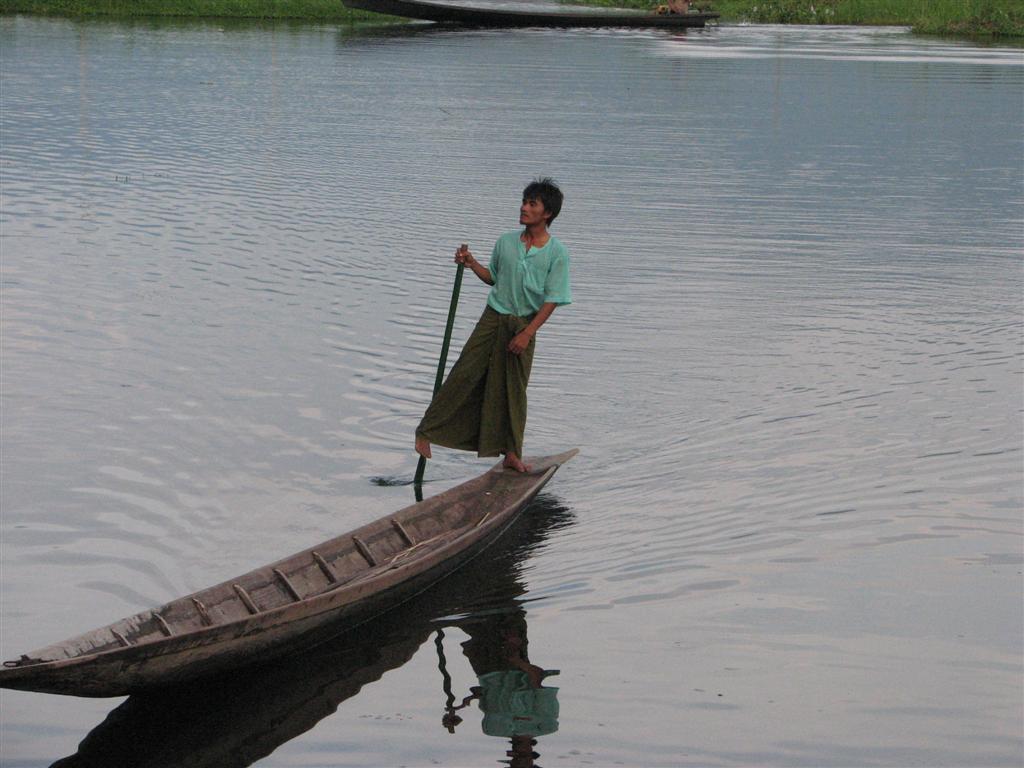
Fishing and rowing with leg
The first stop was to see Padaung women with the neck ring, a
band of metal worn as an ornament around the neck. Multiple neck
rings are worn usually to stretch the neck. They begin to wear neck
rings when they are children. Gradually with age the number of
"brass coils" worn increases to elongate the neck. The Padaung
region is 6 or so hours away, but these women come here to weave
cloth and make money from tourists.
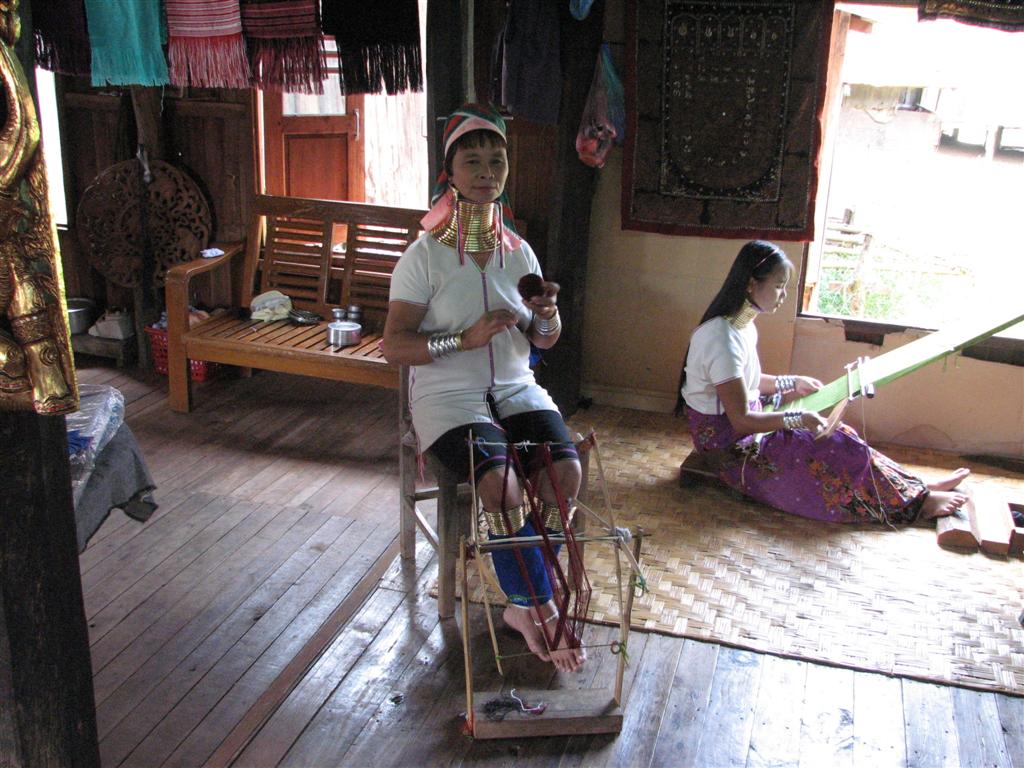
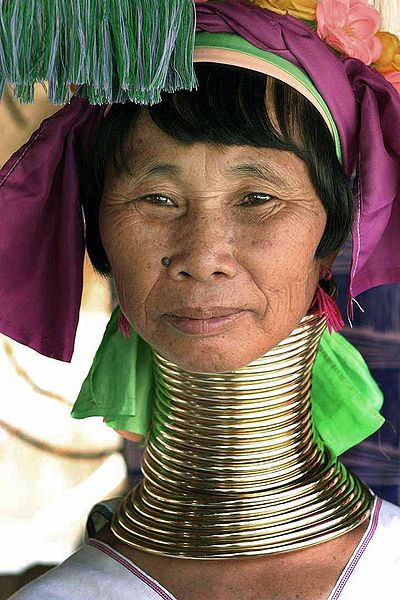
Neck Rings
We boated past the Royal Barges. Each year the barge comes out at
carries the 5 golden Buddhas on a procession to all of the villages
which takes 18 days. Recently the barge capsized. Four of the
Buddhas were recovered. When they got back to the temple, the 5th
Buddha was there. Since then, only 4 Buddhas make this journey.
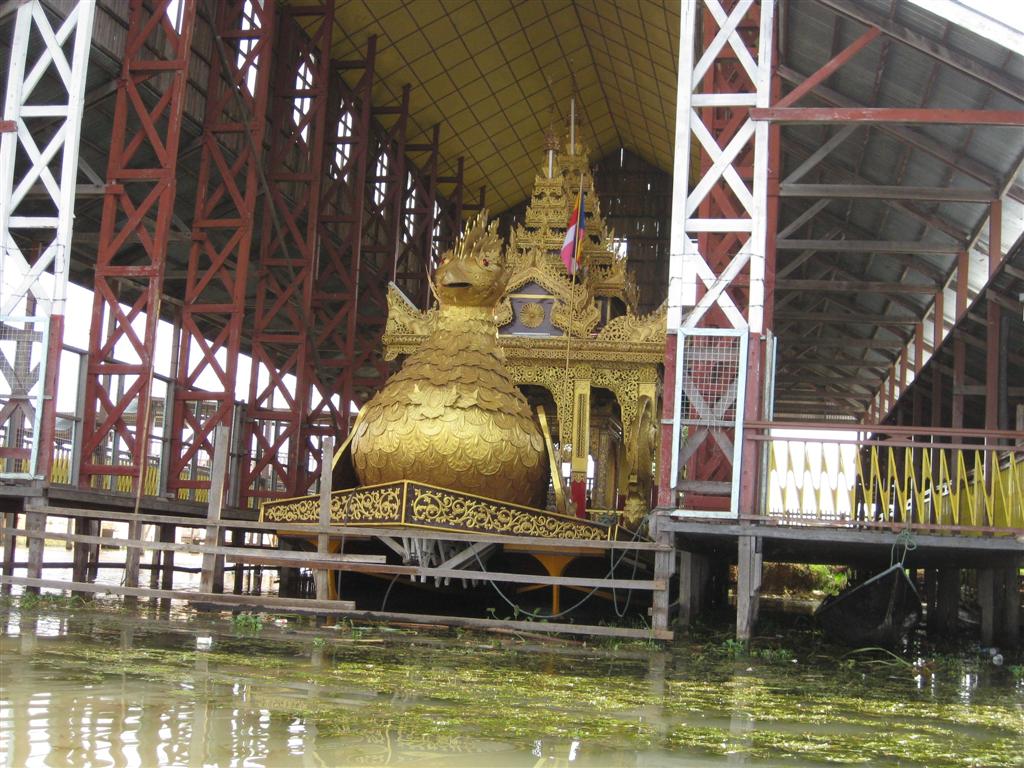
Royal
Barge
We went to the weaving workshop, we saw how thread is harvested
from the lotus stems. The woman help about 5 stalks and made a cut
about 4 inches from the end. When she snapped them apart,
translucent threads were pulled out. With her hand she rolled the
new thread into the prior threads to make a long string.
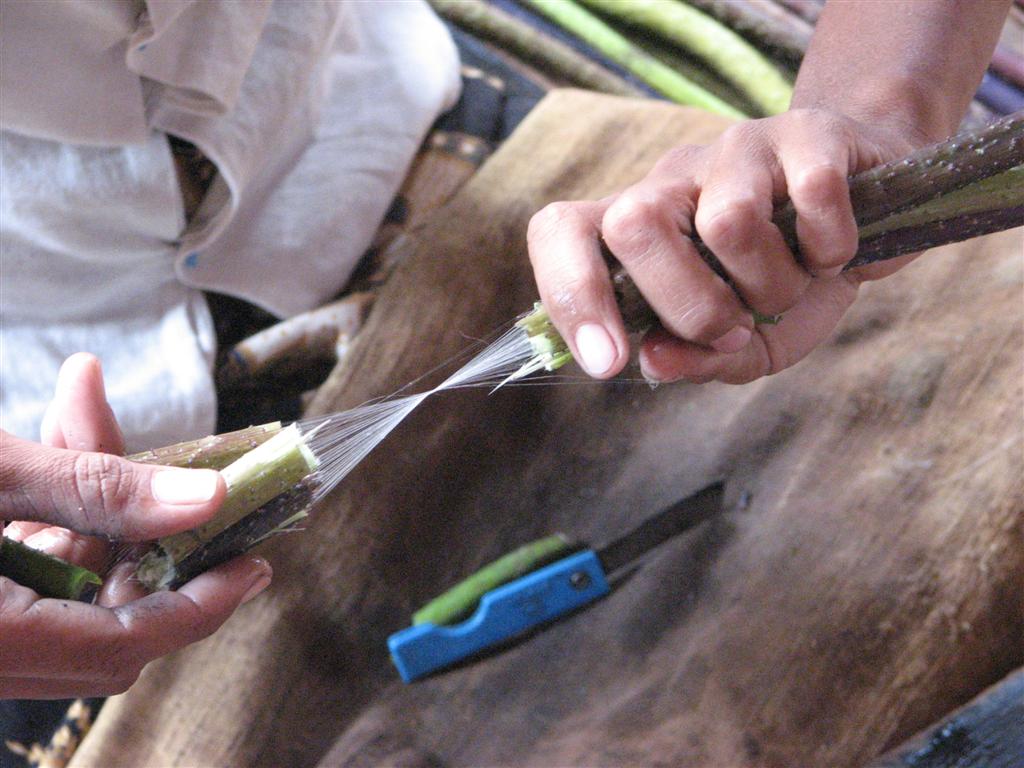
Lotus Threads
That night we ate at the hotel. We didn't have much choice since
we are out on an flat tropical island by ourselves. There were only
2 other tables of guests. I don't think the hotel is very full. This
is the beginning of the high season in this country.
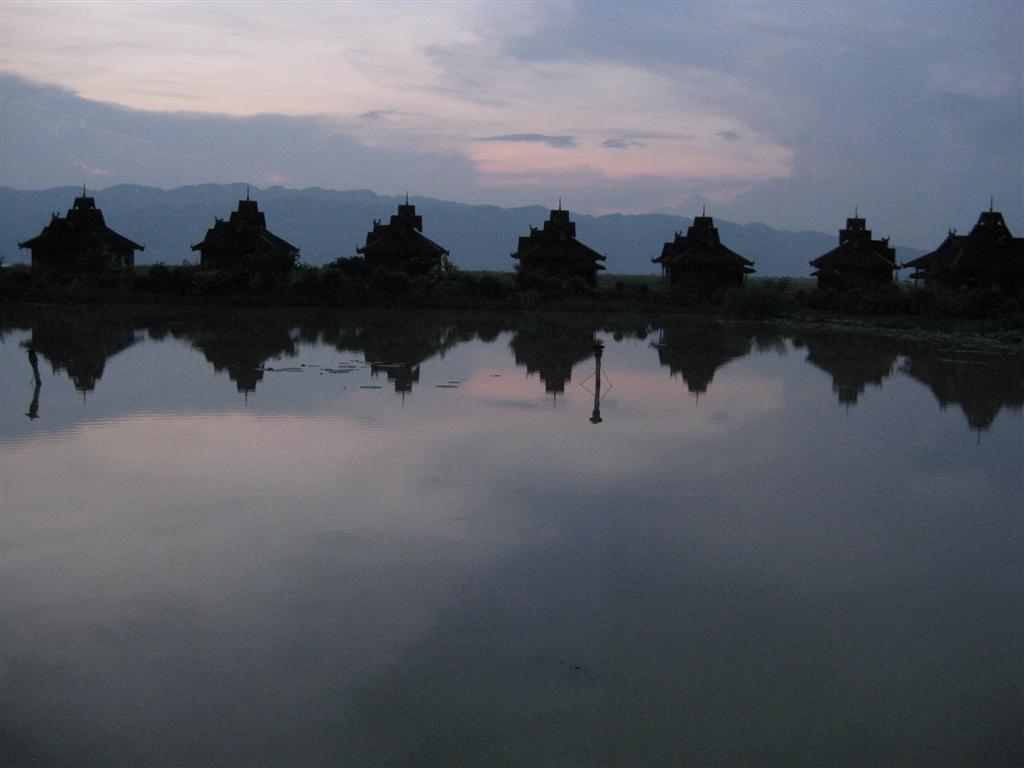
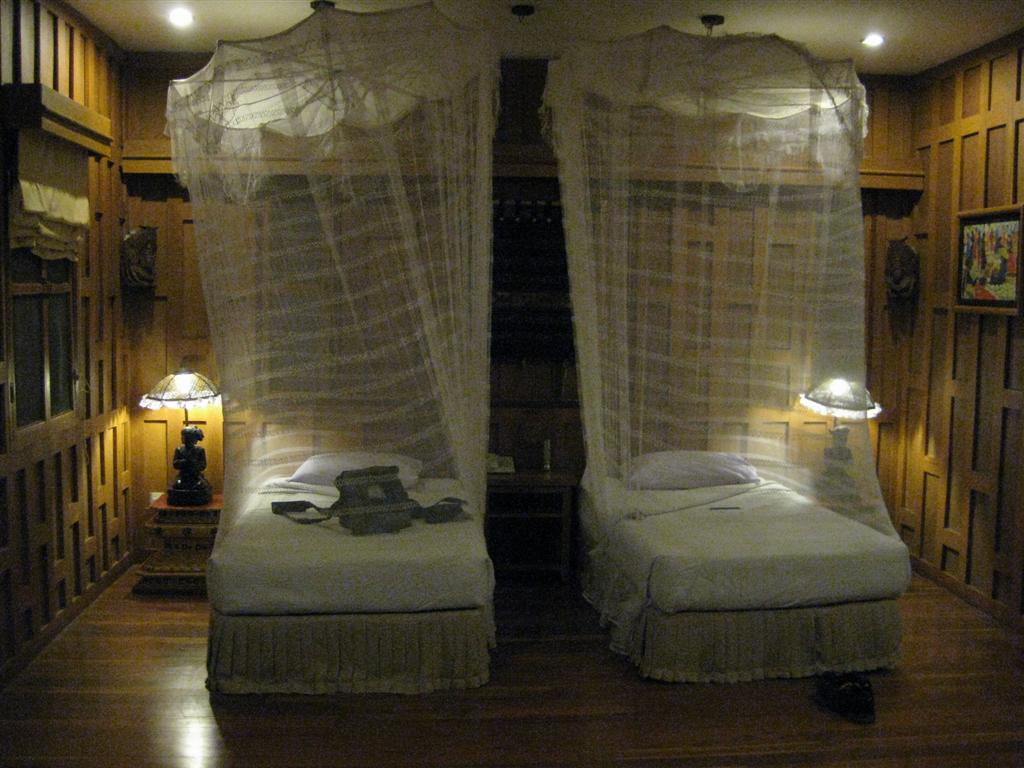
Our Hotel (Inle Resort)
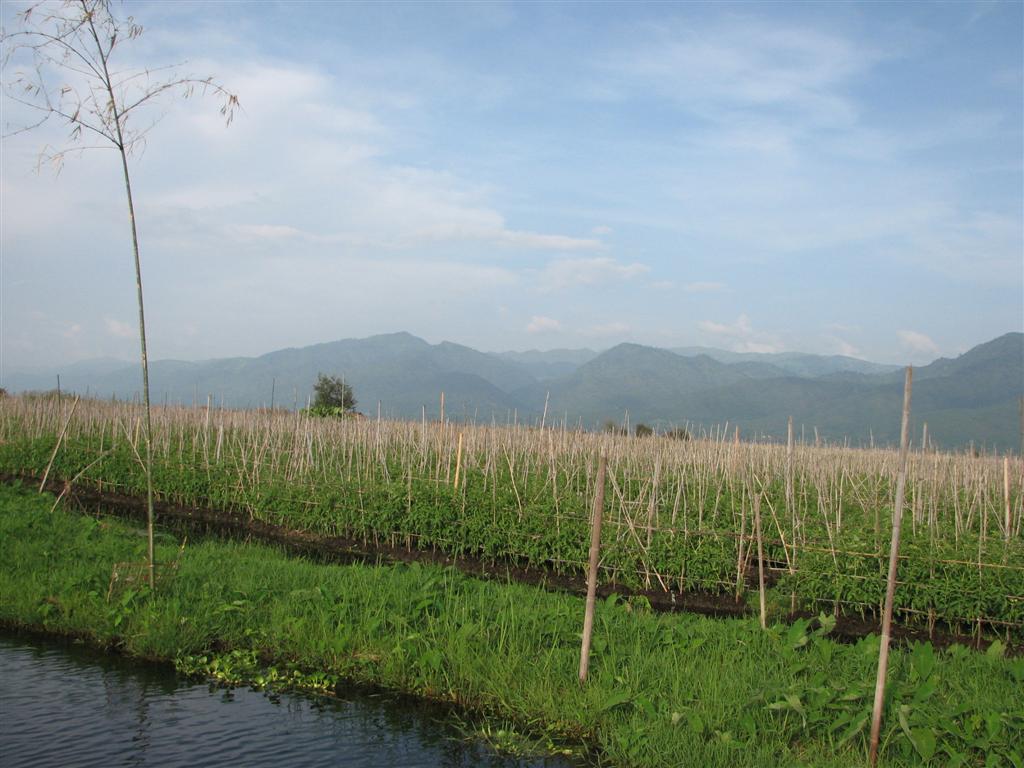
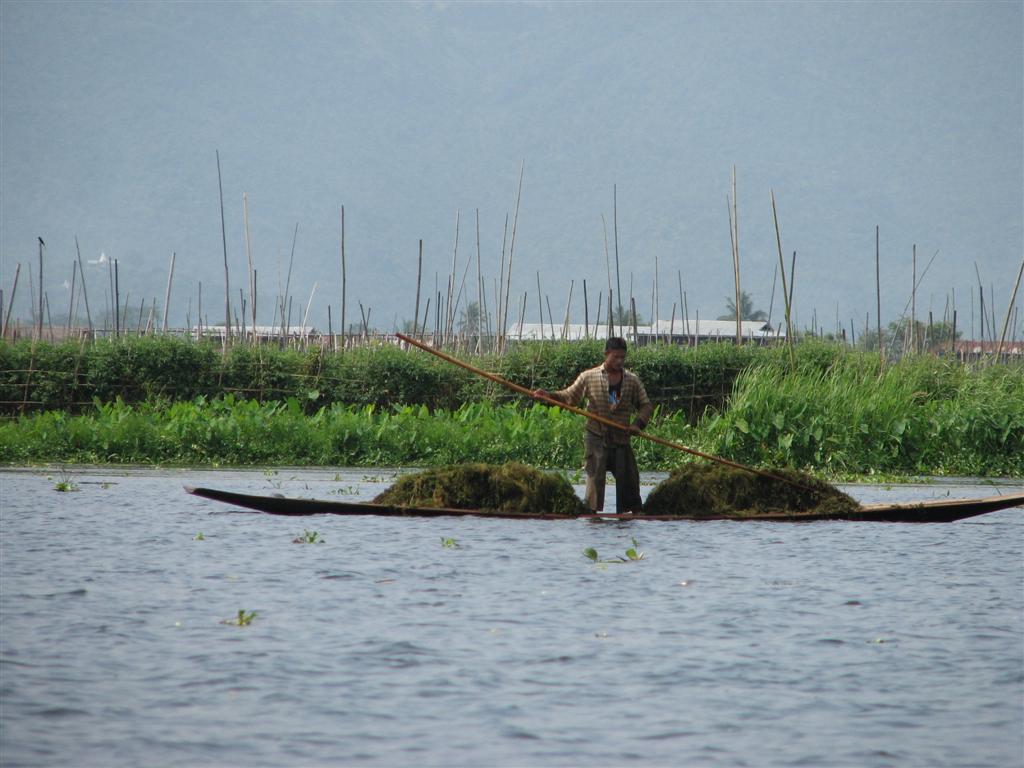
Floating Gardens 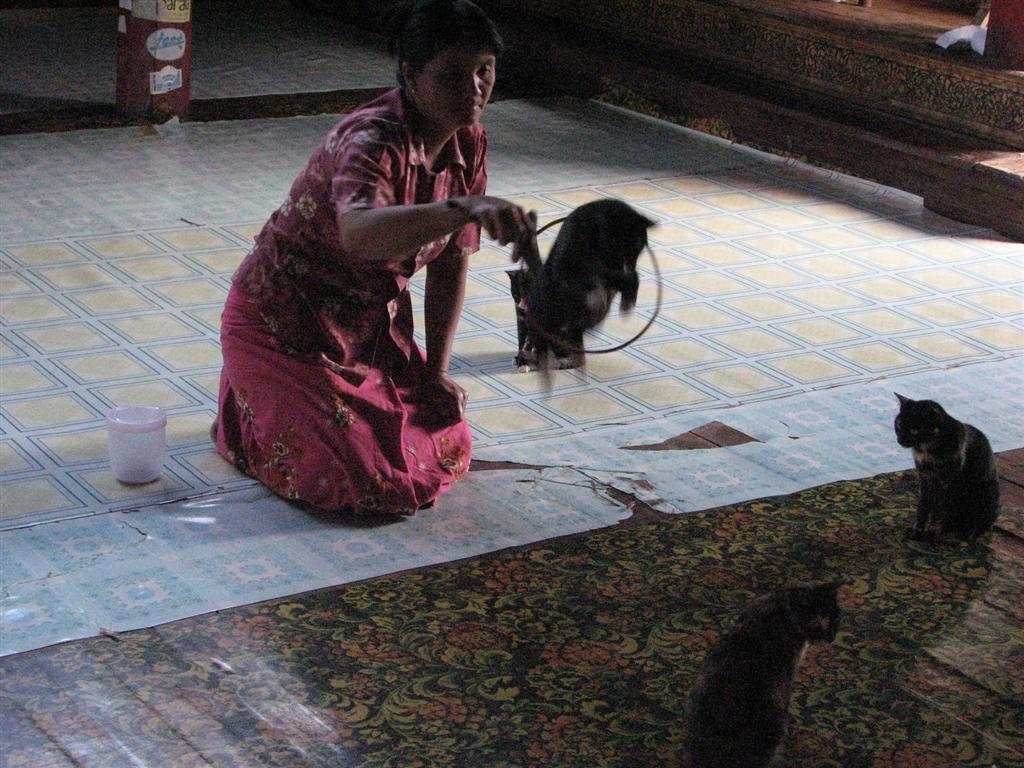 Nga Pe Chaung monastery the monks are know for training cats to jump through hoops.
We saw the cats jumping! I took a movie of it.
Nga Pe Chaung monastery the monks are know for training cats to jump through hoops.
We saw the cats jumping! I took a movie of it.
Some last comments on Myanmar. The steering wheel is on the
right side (like England). However, they drive on the right
side (like the USA). We tried to find out why. Our
guides did not know. One guide said at one time there were
political parties called "Left" and "Right" and the winning party
changed the driving side of the road???
Many women use a local product on their faces. It is Thanaka,
a yellowish-white cosmetic paste made from ground bark. It is a
distinctive feature of Myanmar seen commonly applied to the face and
sometimes the arms of women and girls and to a lesser extent men and
boys. It smells nice, is cool on the skin and protects them
from the sun. |
| October 17-22,
2009 Bangkok Interlude TomO returned to Bangkok from
Myanmar with a little cold/flu. We took it easy the next
couple of days, making some forays out during the day and getting to
bed early. We have been in touch with friend Australian Ex-Pat
John who owns a restaurant and bar quite close to our hotel We
have eaten there 3 or 4 times and enjoy his Thai and western menu
offerings.
One day I walked through Chinatown. It was very busy, with
lots of alleys and streets with many stalls selling about
everything: DVDs of recent movies for $2.50, food (including
fried insects, clothing, bags, jewelry. Oakland friend Charlie
encouraged me to get lost in Chinatown, and I did. To get back
to my hotel, I got a Tuk Tuk and he got lost. He took me to
the other side of the river. I recognized buildings along the
river, so I knew where I was! He stopped at several hotels and
asked directions.
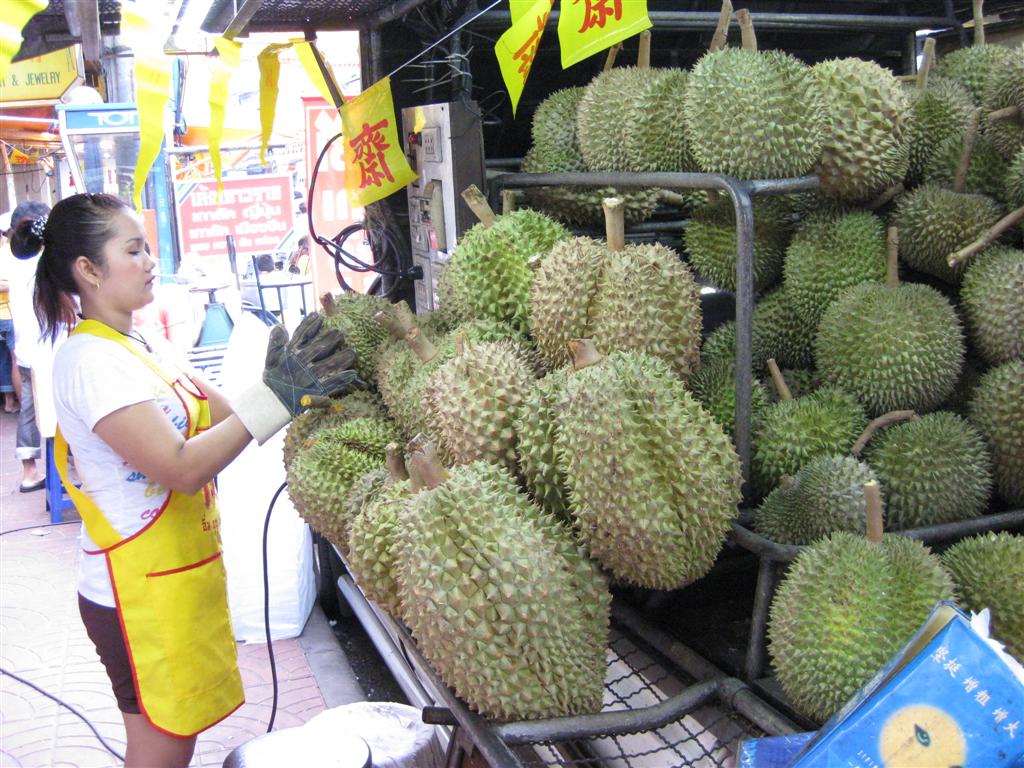
Exotic Durian Fruit
On another day, Tom and I took the water bus to the Amulet
Market, near the Royal Palace. It went for many blocks.
It was hard to understand what all of the objects were. There
were empty glass cylinders (in which you put something and wear
around your neck), small rectangular stones with Buddha carved in
them, little statues, stones and so on. Three or four
different sellers were offering false teeth.
.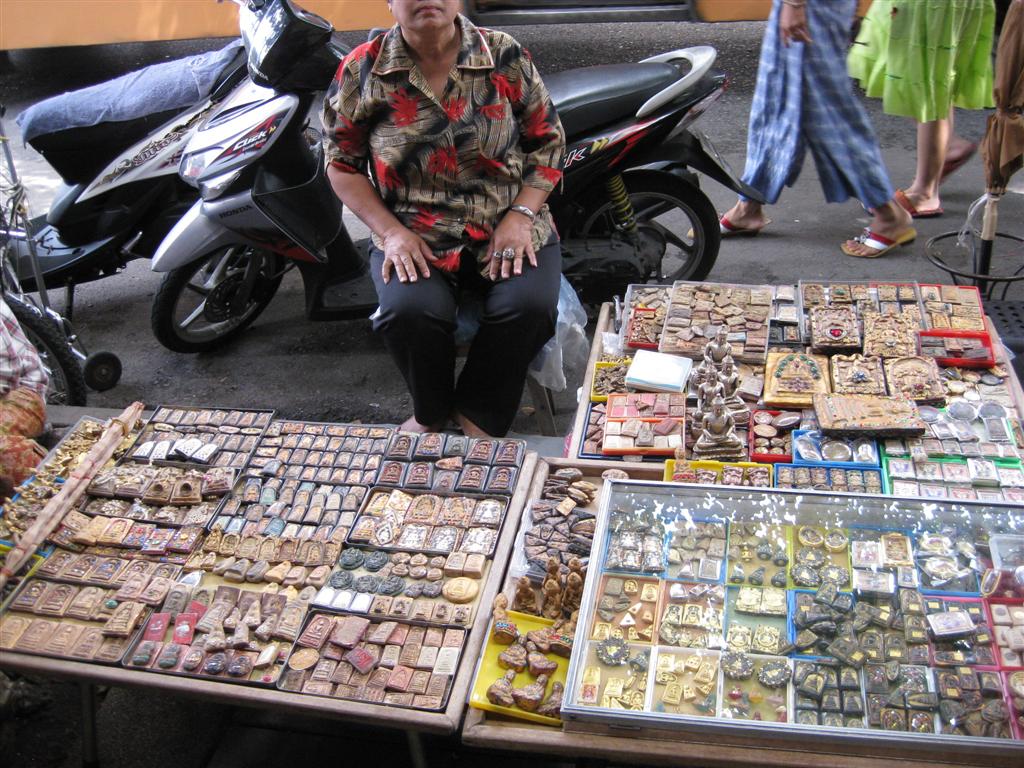
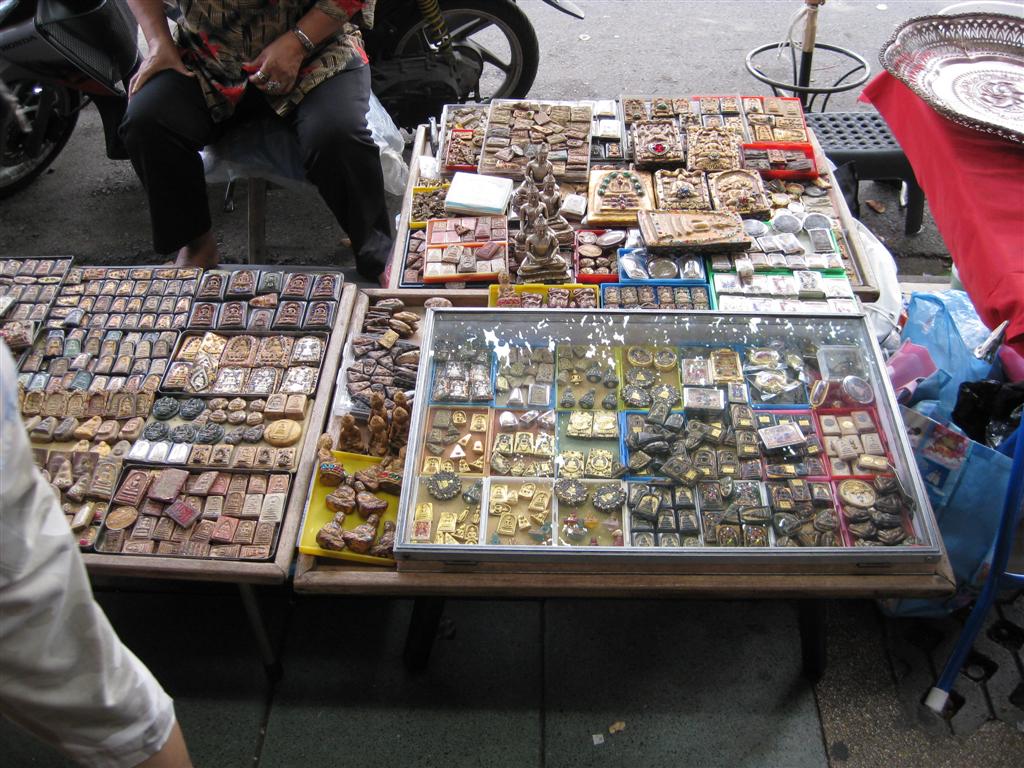
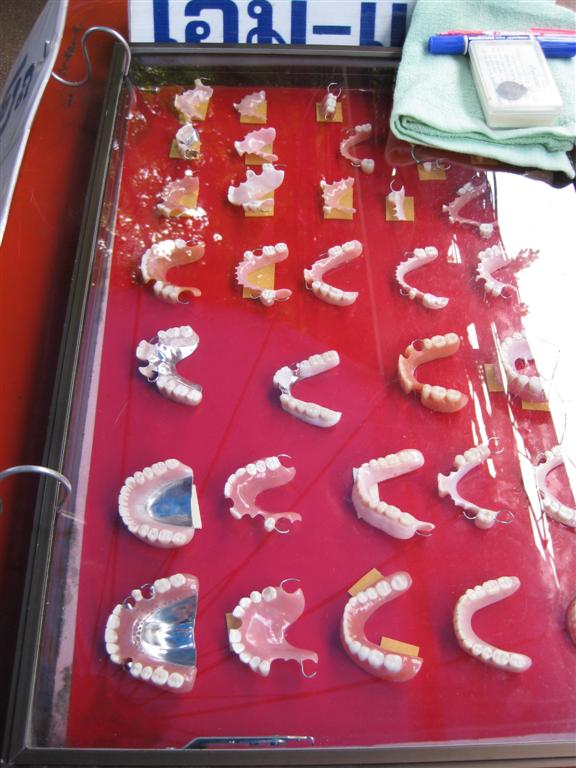 Amulets and teeth
Amulets and teeth
Our Oakland friend Ron arrived on Wednesday to join us for
several weeks. Tom and I took a taxi out to the airport to
meet his flight. The airport was quite busy at midnight when
he emerged out of customs. We took another taxi back to the
hotel and got to bed as quickly as possible! We each have a
room here at the Centre Point Silom hotel.
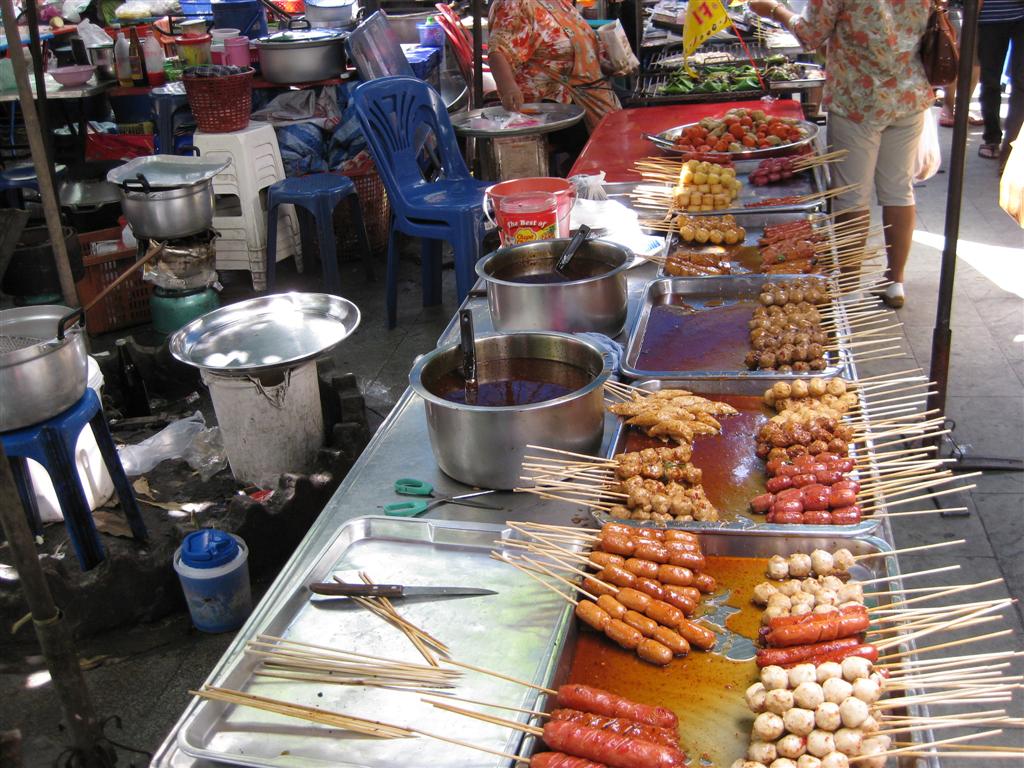
Street Food ...
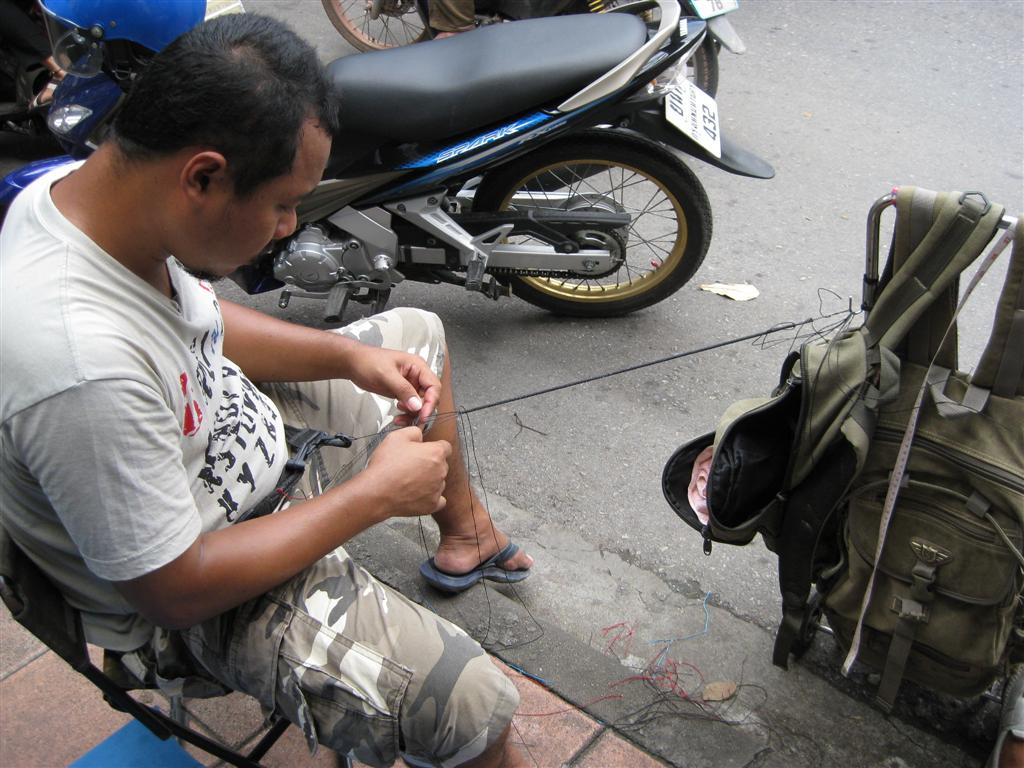
Braiding threads into necklaces
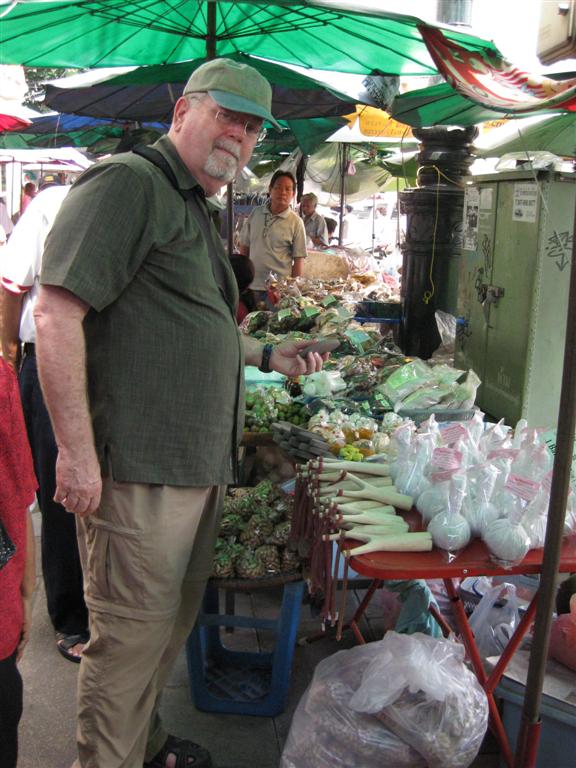
Nice smelling Massage balls (I think)
The next day we met for breakfast. Tom decided to say close
to the hotel and Ron was reacting to some pain meds and felt it best
to sleep it off. I went out and decided to see more of the
city by riding the Sky Train. I bought a ticket for one
station and then rode both lines to their ends.
On Thursday, we flew to Chaing Mai where we are spending 3
nights. I'll tell you about this old kingdom later on. |
| October 23,
2009 Chiang Mai We arrived in Chiang Mai in the early
afternoon. This old kingdom lies between mountains to the west and
the Mekong River to the East (good feng shui). The kingdom was
unified about 300 years ago and had a royal prince up until recent
times. There are 500,000 people in Chiang Mai proper, and 2
million people in the greater area.
The hotel sent a car for us and it was a short ride to our hotel.
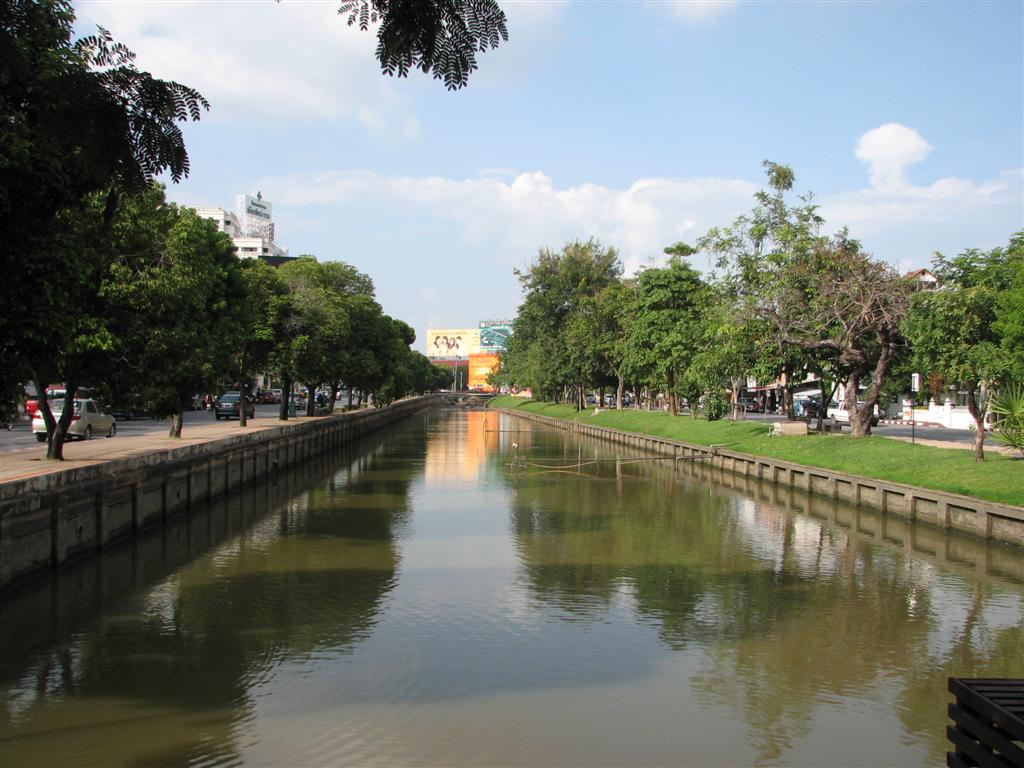
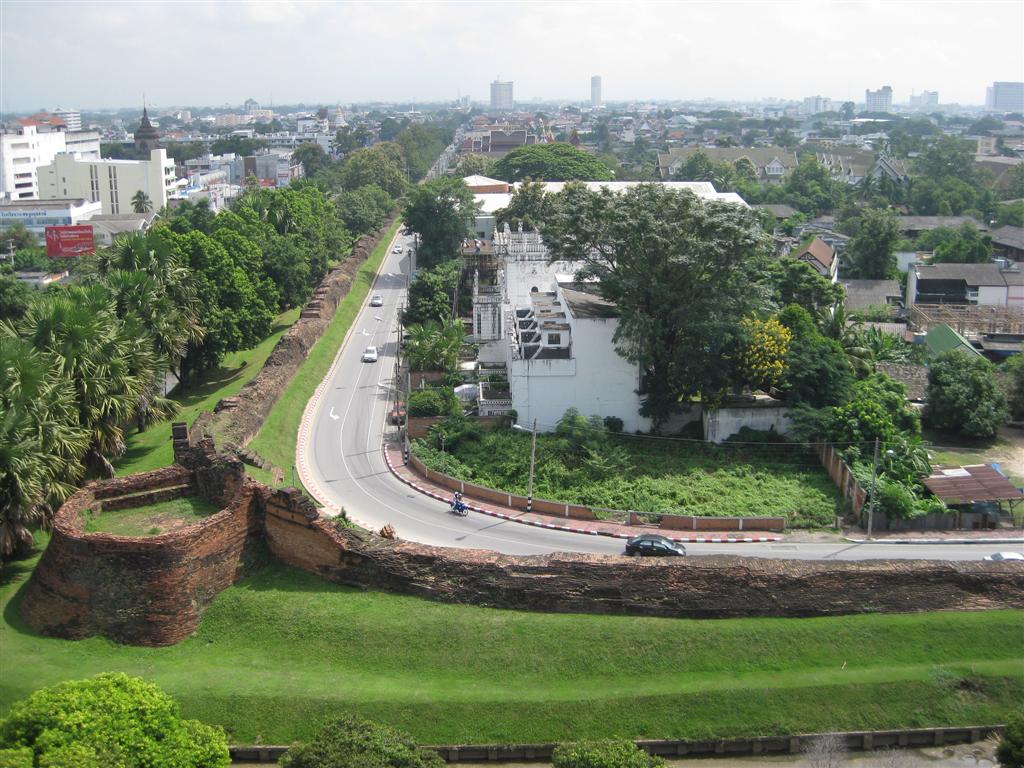
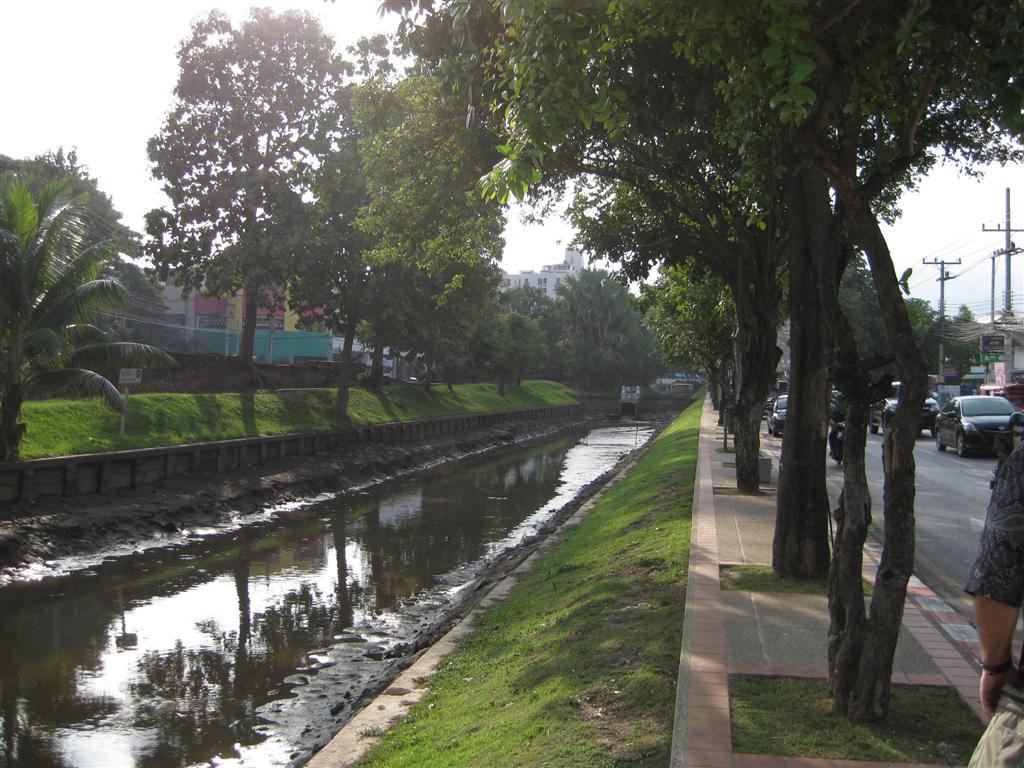 Moats around old town
Moats around old town
We are across the street from "Old Town" which is defined by the
old moat and fragments of the old city walls. After settling in, we
walked into the old section. It was hot and we sought refuge in an
electronics store. I bought a new memory card from my camera as my
old card just died???
We returned to the hotel where we ate dinner and turned in.
The next day we scheduled a city tour. Our guide was "Lucky" and
he took us to the most famous temple of Chiang Mai, located 15 km
away (called Wat Phrathat Doi Suthep). "Wat" is the word for
"temple".
We took an elevator from the street up to the temple area. There
were many people because it was Friday of a holiday weekend. At one
point we had a view of Chiang Mai and could see the airport, the
outline of the moat and could locate our hotel.
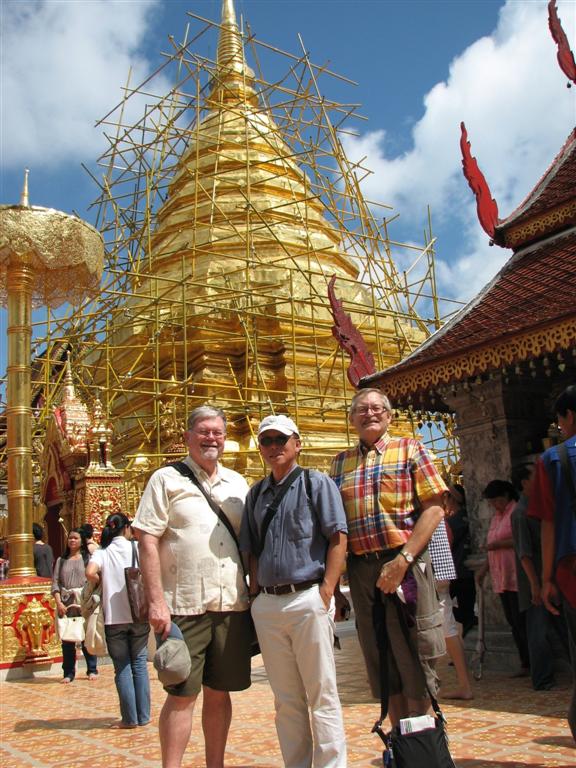
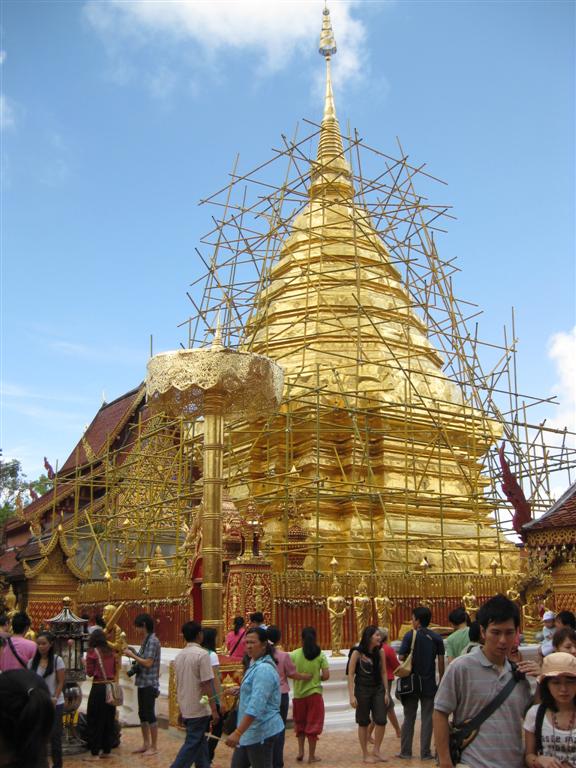
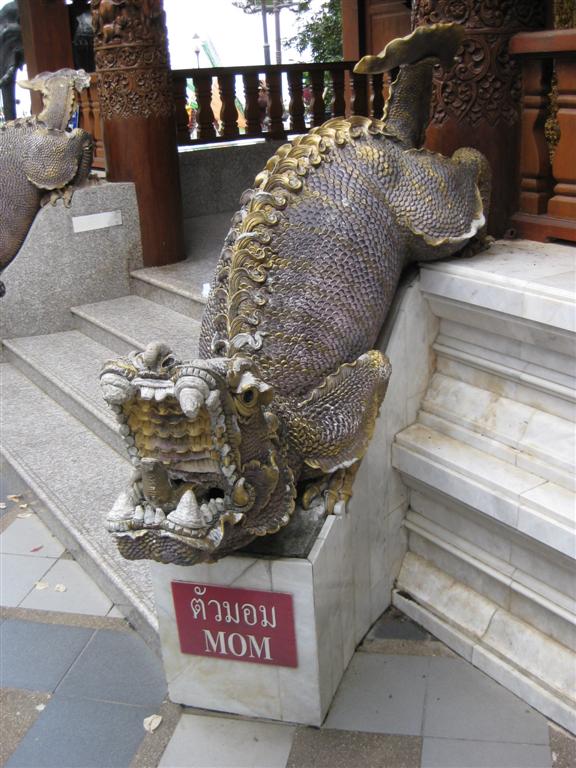
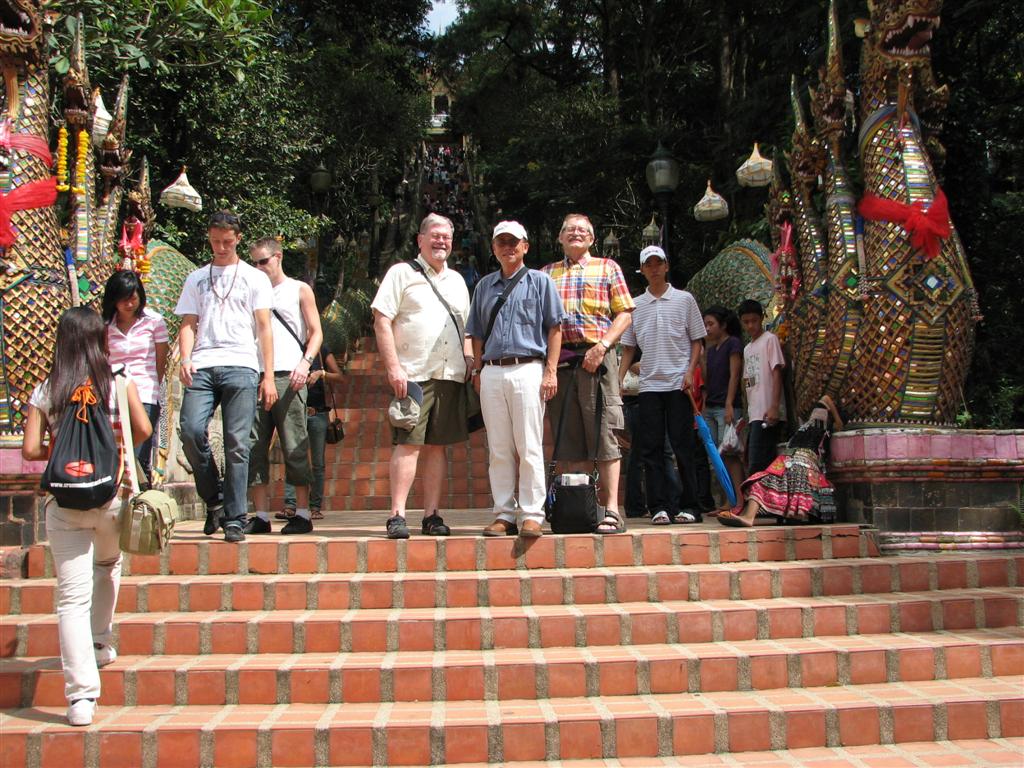
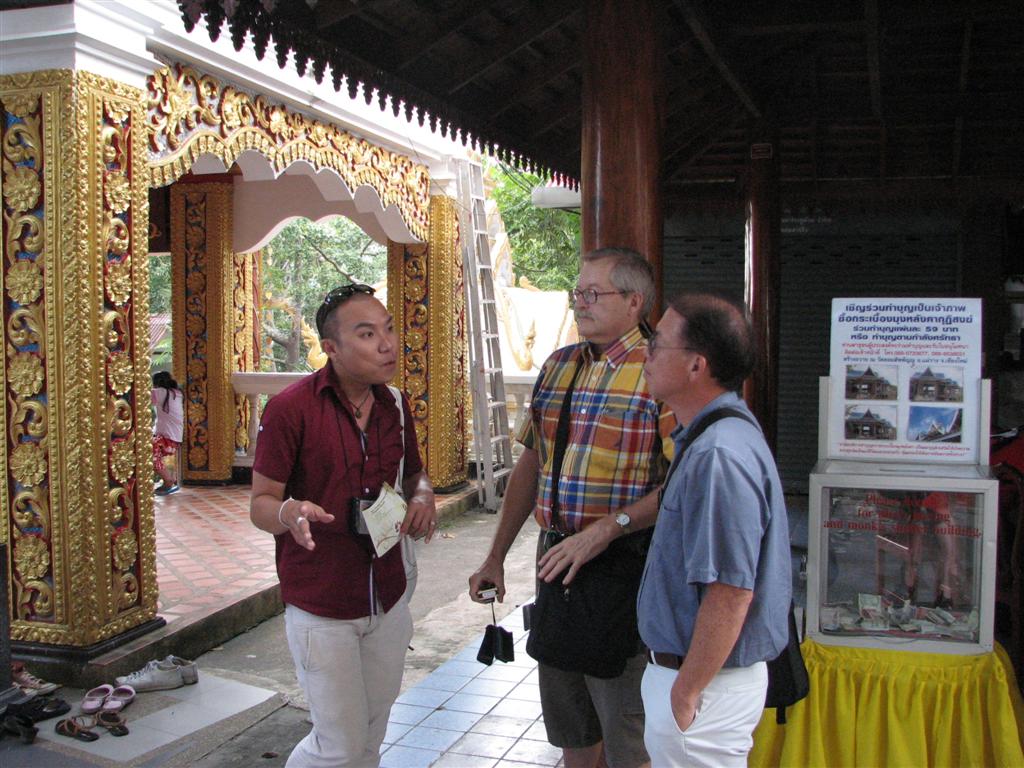
We had added a stop at the Winter Palace, still used by the royal
family. The Thai people are very fond of the king and queen. It is
against the law to say anything negative about them. The king is
about 81 and has been in the hospital with a lung problem. The
palace reported that he is over that and gaining his strength. TomO
and I were wearing shorts and were obliged to rent pants that were
still short on us, but several inches longer that our shorts!
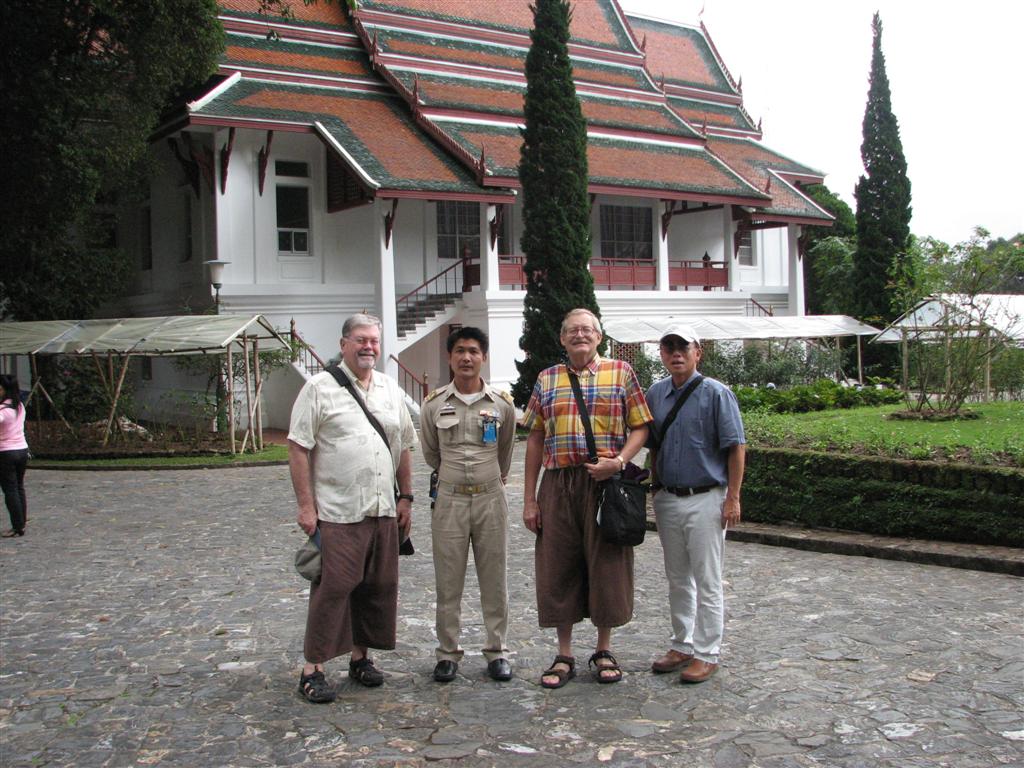
We returned to the city and visited several more temples. One (Wat
Chiang Man) was built in the 13th century by Man Rai, the founder of
Chiang Mai. It was almost destroyed by an earthquake 400 years ago.
The center part was supported by huge, carved elephant buttresses.
Only a few remain.
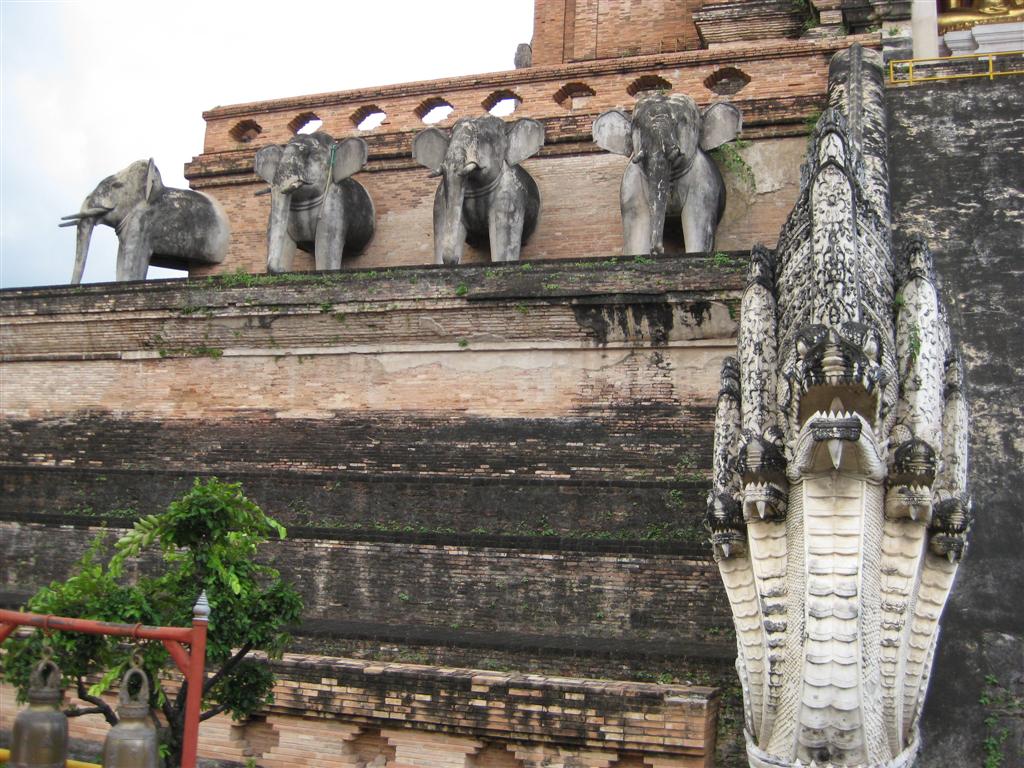
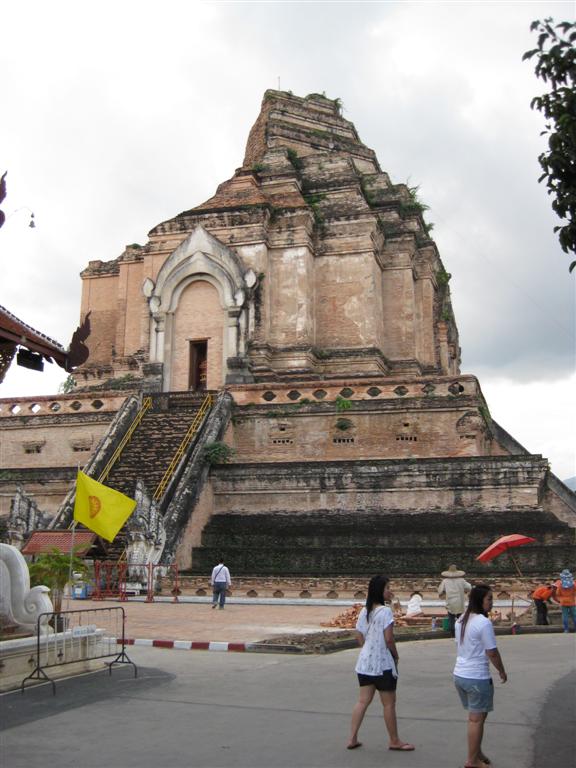
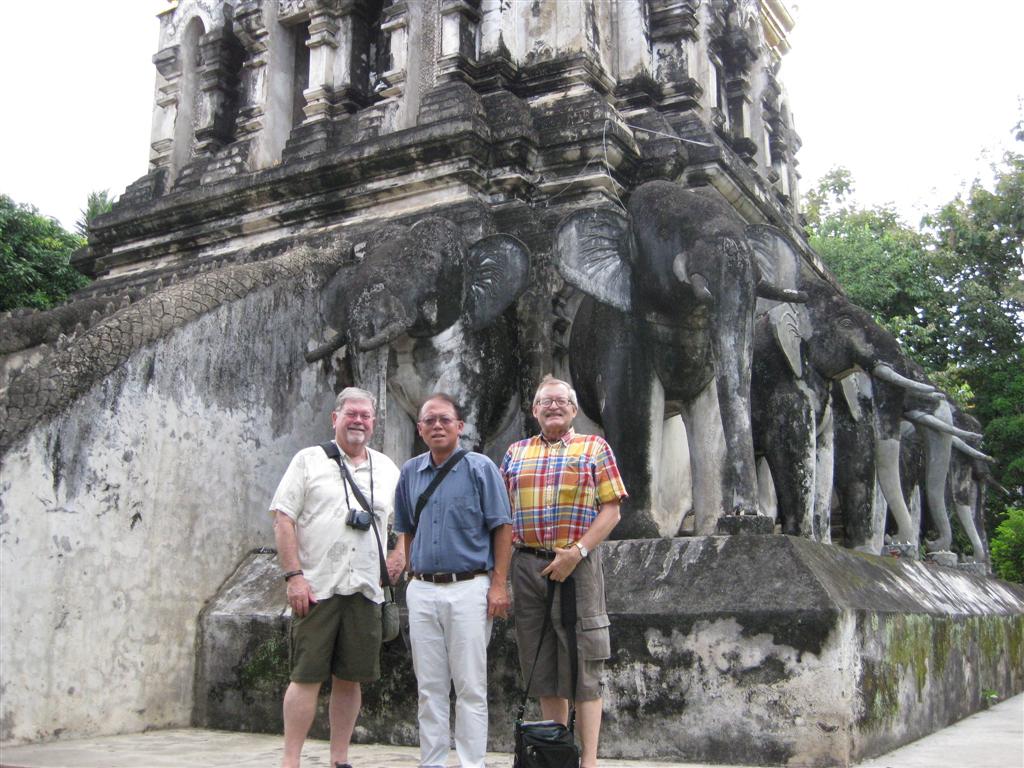
We stopped by a jade workshop across the road and watched the
artists carving pieces.
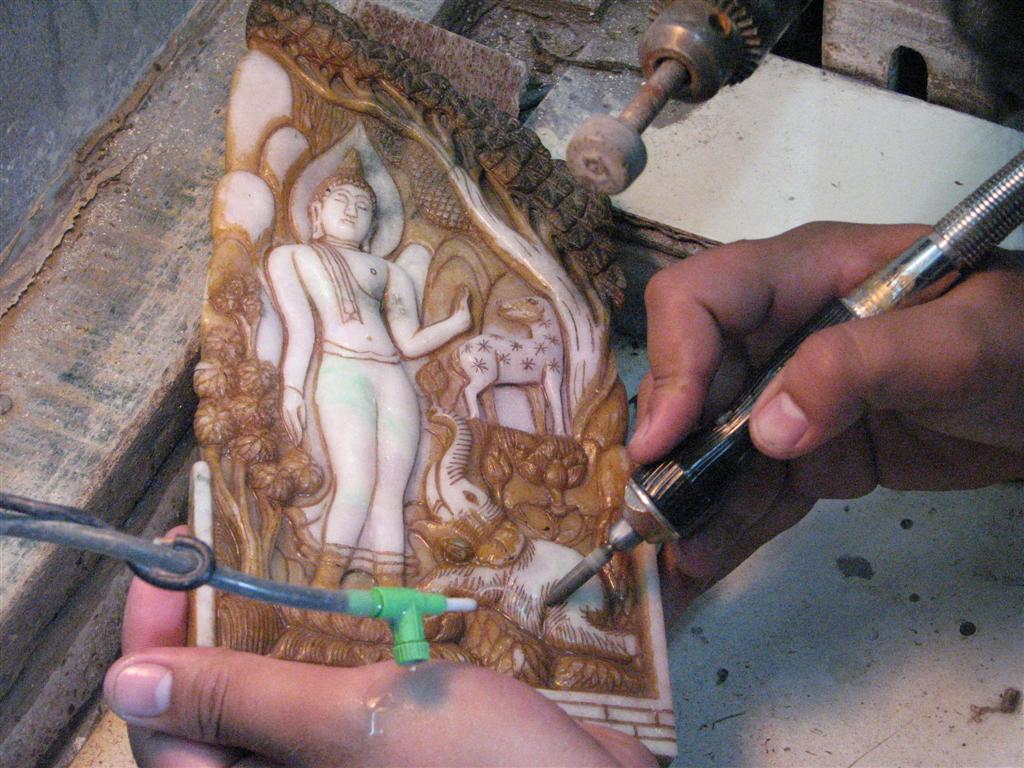
Jade carving
That night we talked Lucky into taking us to a restaurant. He
showed us how to use the red open-backed "taxi" pickups. You
just tell them where you want to go, and it cost about 60 cents per
person. He selected the River View Restaurant, owned by a
Dutch couple, which is situated on the Mekong River. We sat out on
the outdoor dining area adjacent to the river and the restaurants
dinner boats.
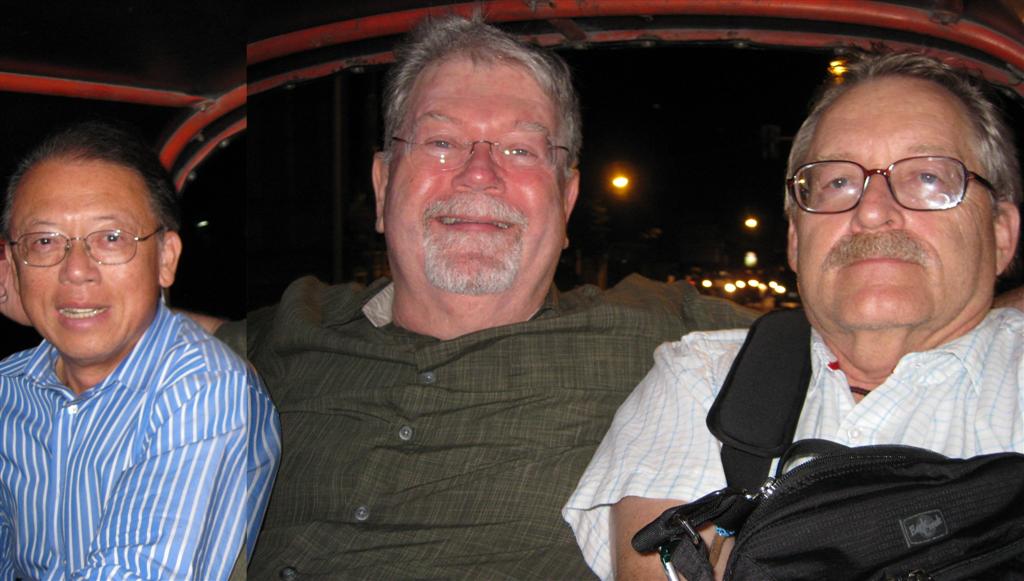
Open backed red taxi (songtaew) ride
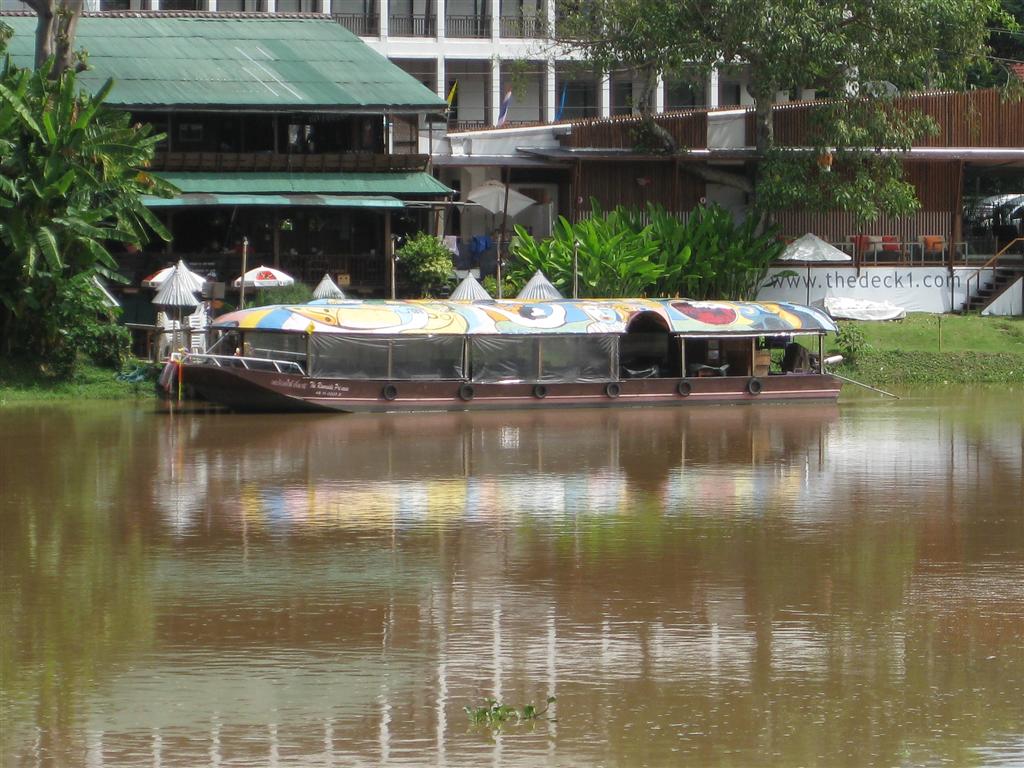
Riverview Restaurant
We saw "paper balloons" rising in the air. These are thin paper
boxes, open at the bottom. We were told that these balloon represent
you sending off your bad luck. (So you must not pick up a paper
balloon that you might find on the street, or you will get that bad
luck!)
After dinner, we bought a paper balloon. They wired a fuel source
to the bottom and lit it. We had to hold the balloon for a bit for
the space to fill up with hot air, then it took off.
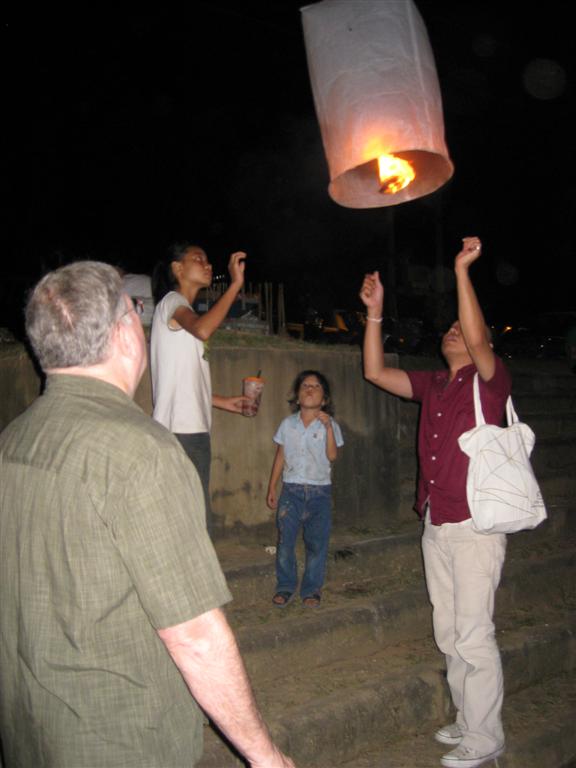
TomO and Lucky sending off paper balloon
On our last day, we took another Chiang Mai tour around the old
city moat and walls. We rode into Chinatown and walked through the
shops. Another stop was the flower market and the huge selections of
blooms. $3.00 for a huge bunch of orchids.
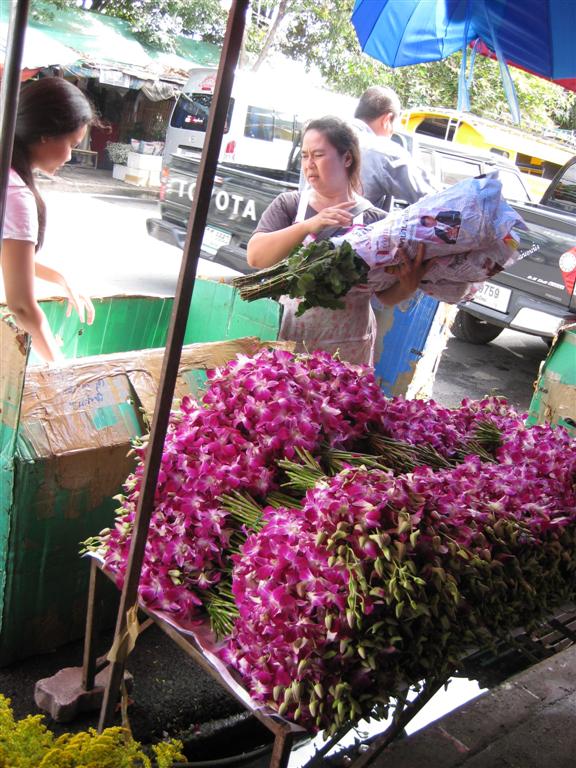
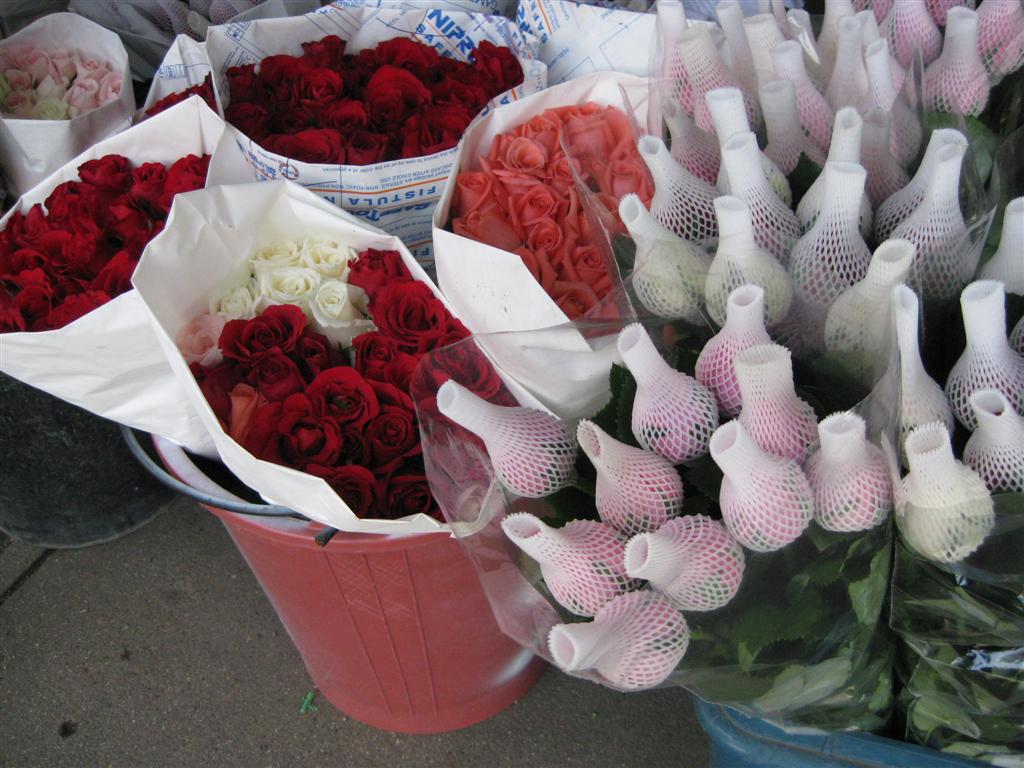 Orchids and (wrapped rose buds)
Orchids and (wrapped rose buds)
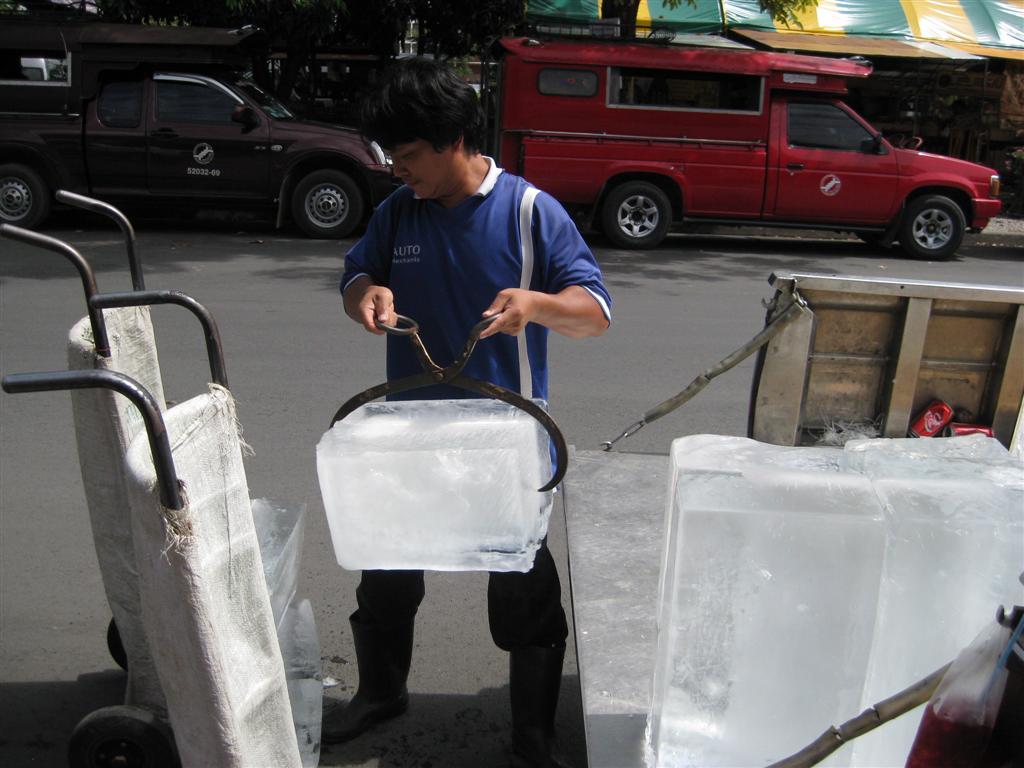
Ice man making a delivery
We were treated to a tea break in a garden hidden by the
surrounding buildings. The green shade provided a cool refuge. Tea
was served in individual celadon tea sets. TomO's cup was an
elephant's trunk.
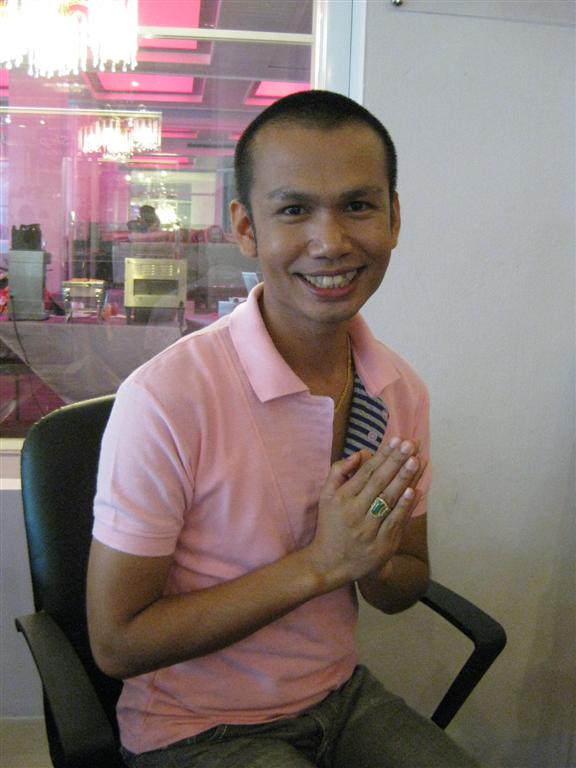
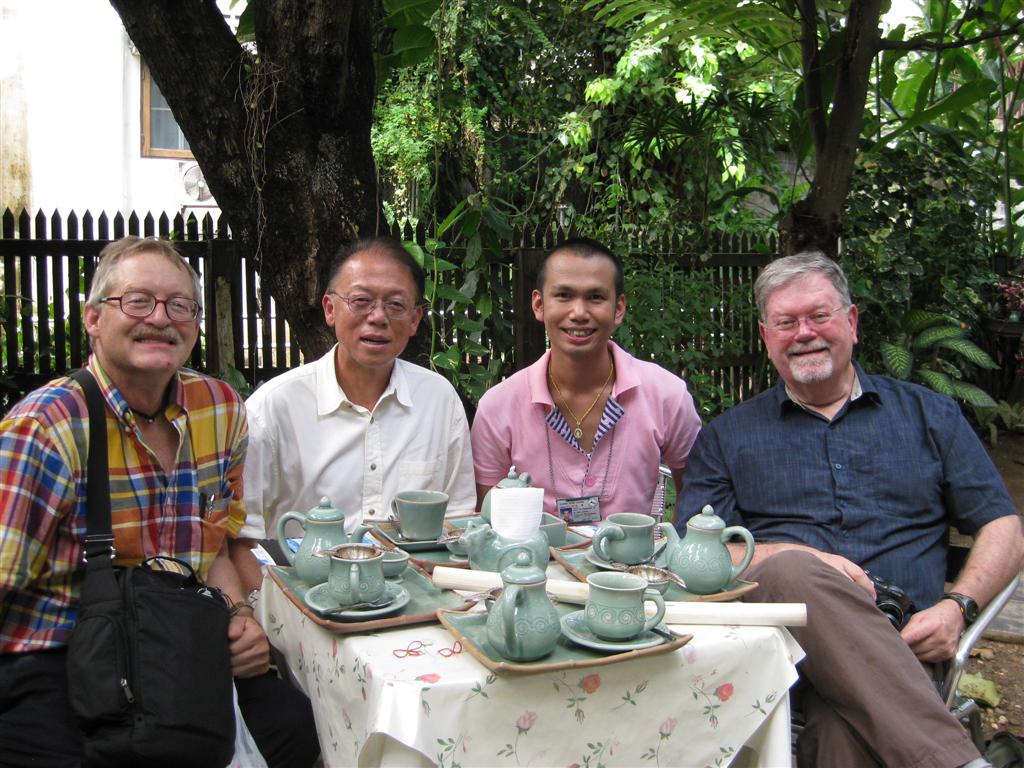 Guide Bird treating us to a tea break
Guide Bird treating us to a tea break
|
| October 24,
2009 Chiang Rai and the Golden Triangle
We booked an all day tour to take up north to the old city of
Chiang Rai and the golden triangle which lies beyond. Our guide was
"Tree". He has a distinctive voice and his friends call him "Speaker
Phone"!!!
We left the hotel at 8:30AM and didn't return until about 10PM.
Our road started uphill and was very windy. We stopped at the Mae Ka
Chan hot springs where the water that boils up is hot enough to cook
eggs. Tourists could buy a little basket of quail eggs or chicken
eggs. We saw the results being eaten at a table nearby.
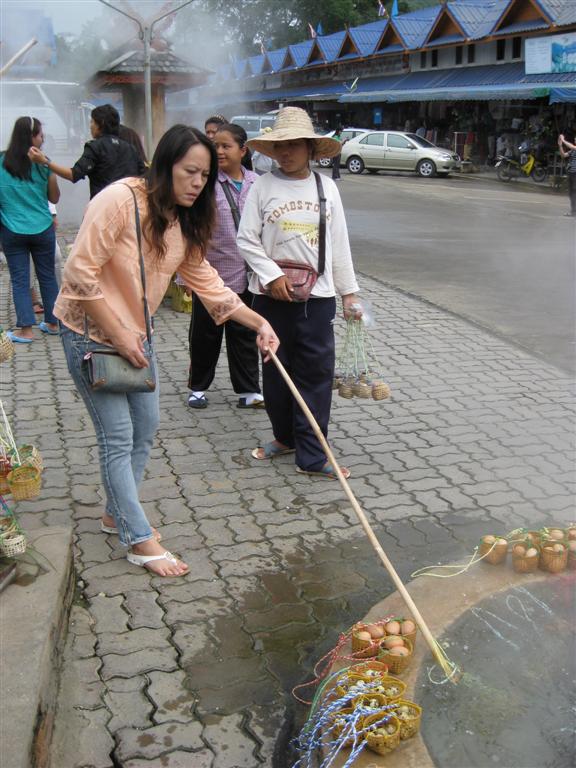
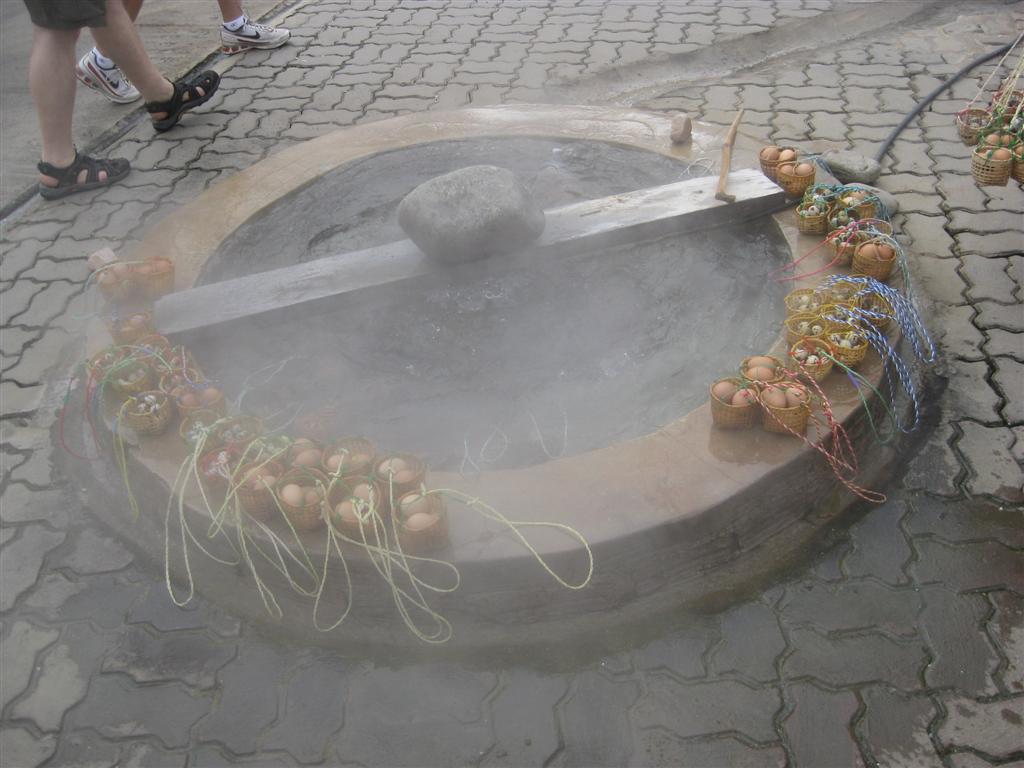 Boiling eggs in hot sulfur smelling hot springs
Boiling eggs in hot sulfur smelling hot springs
There were lots of tourists shops there and I looked a ruby rings
and Ron looked at US silver dollars. We both retreated thinking both
were fakes.
Just outside of Chiang Rai is the Rong Khun (White) Temple. It is
very new construction and the design is by a famous Thai artist. The
white surface of the temple is inlaid with glass and mirror to make
it sparkle. When you approach the building you walk beside a pond of
white choi fish. Then you go over a bridge where on either side are
hands reaching out of hell. Inside the temple, the artist has
represented hell at the entrance (with paintings of Bush and Bin
Laden and other contemporary images. As you move towards the alter,
the drawings advance you to Nirvana.
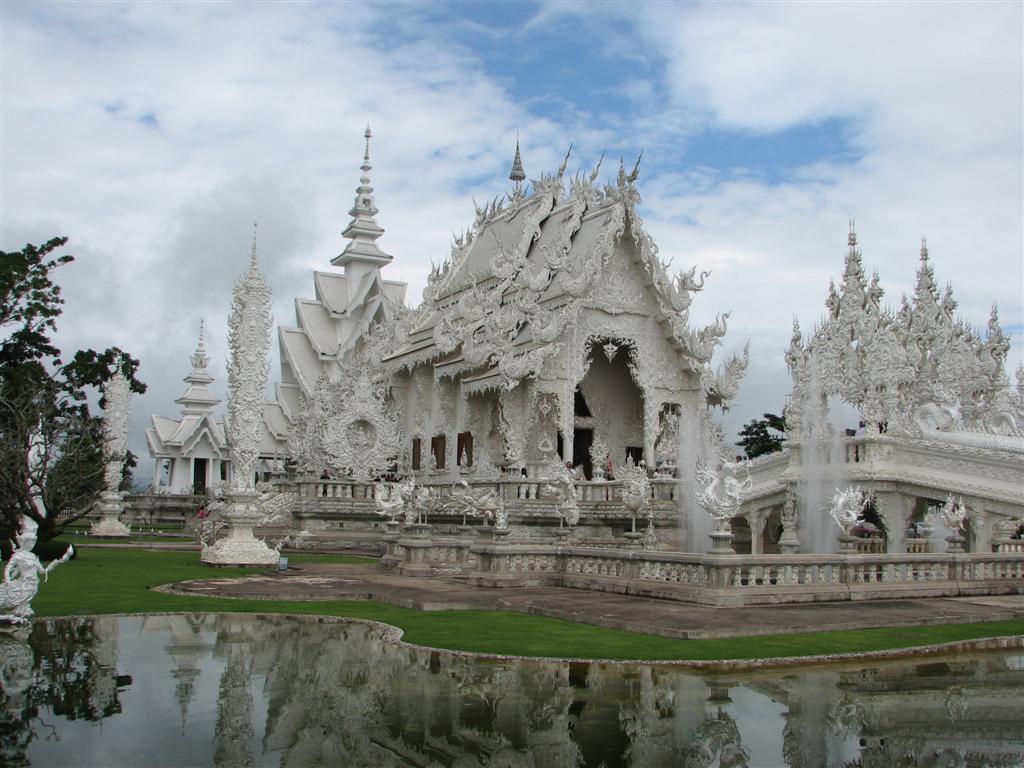
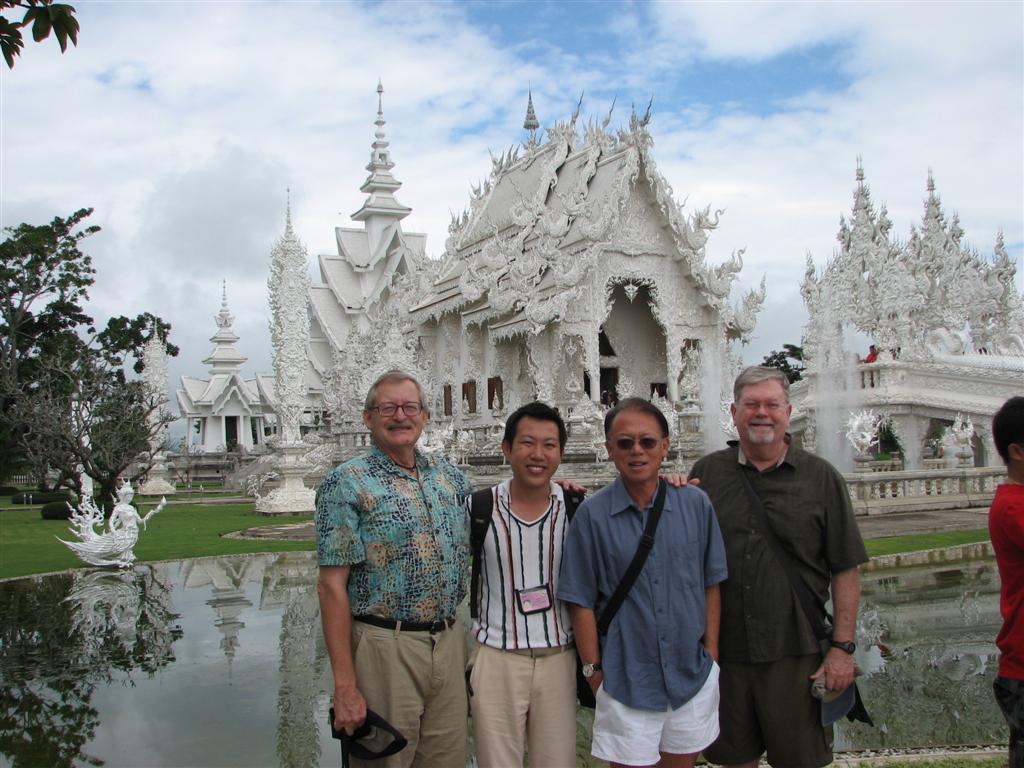
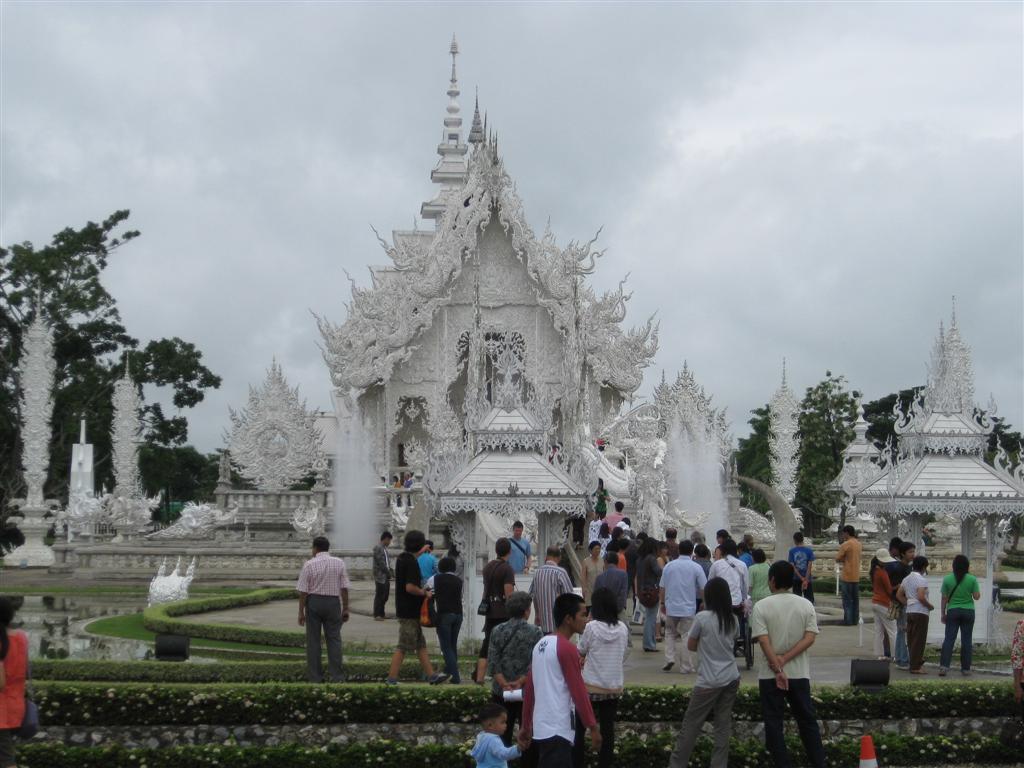
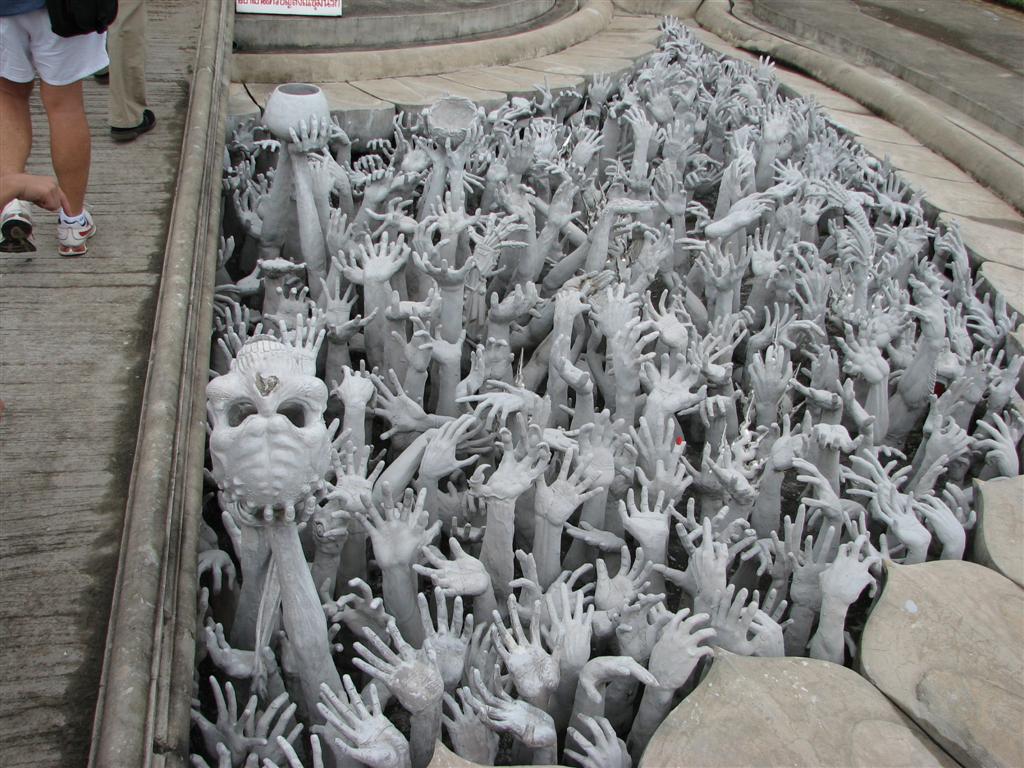
We arrived in Chiang Rai we stopped at a
12th century temple ruins.
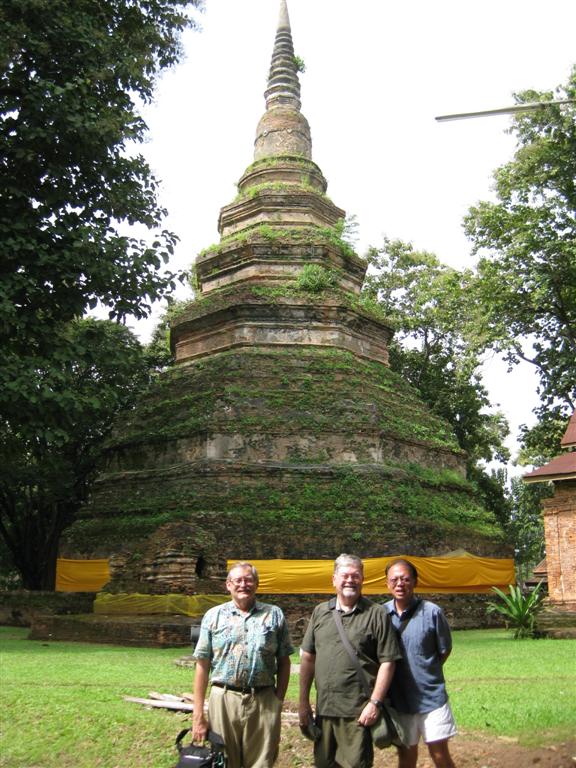
Temple Ruins
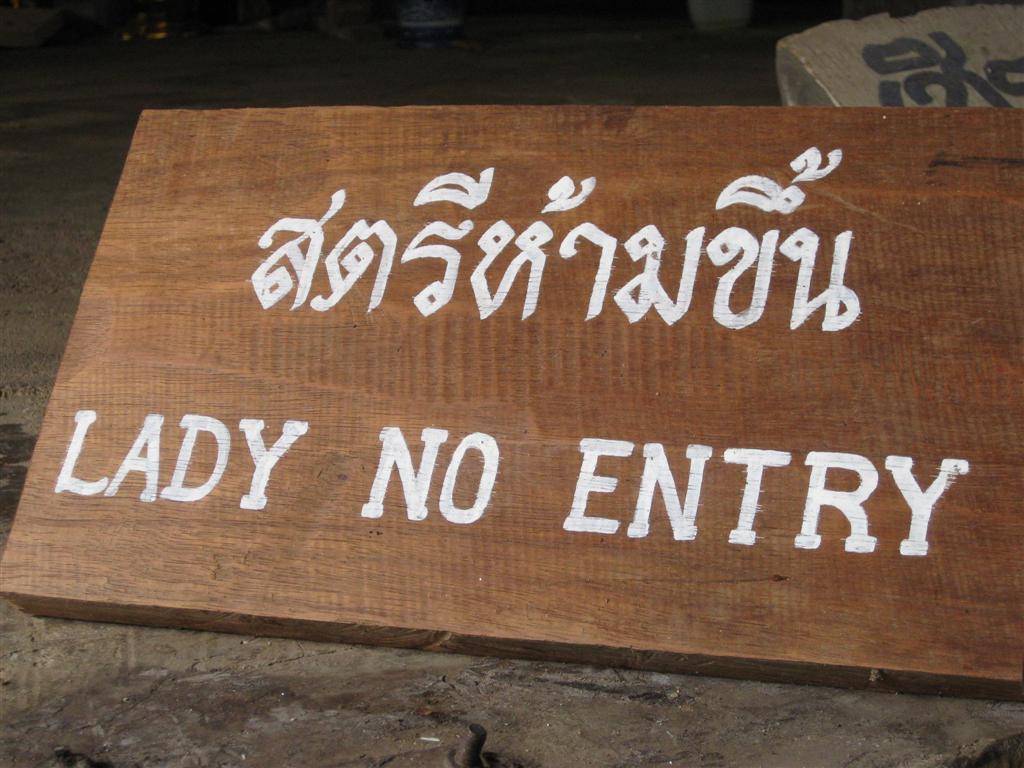
Continuing north we eventually wound up at the Golden Triangle,
where the borders of Thailand, Myanmar and Laos meet at the Mekong
and Ruak Rivers. We took some photos before eating our buffet lunch
at the Golden Triangle Resort.
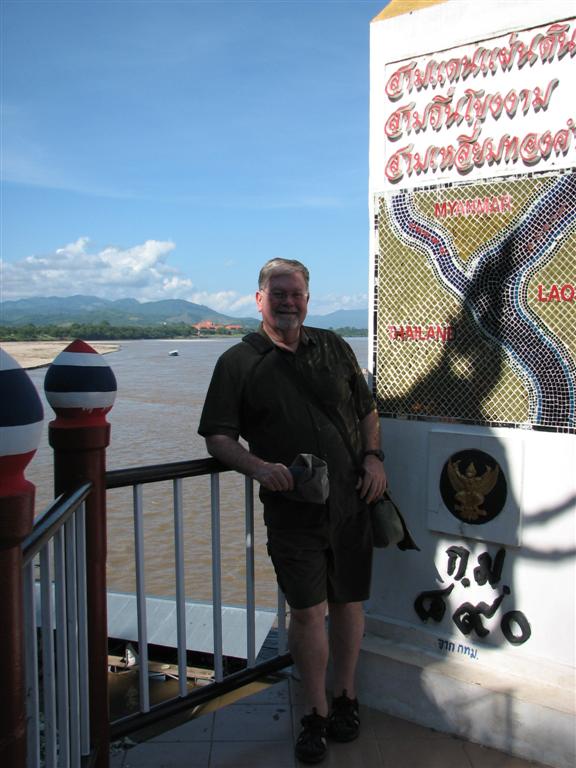
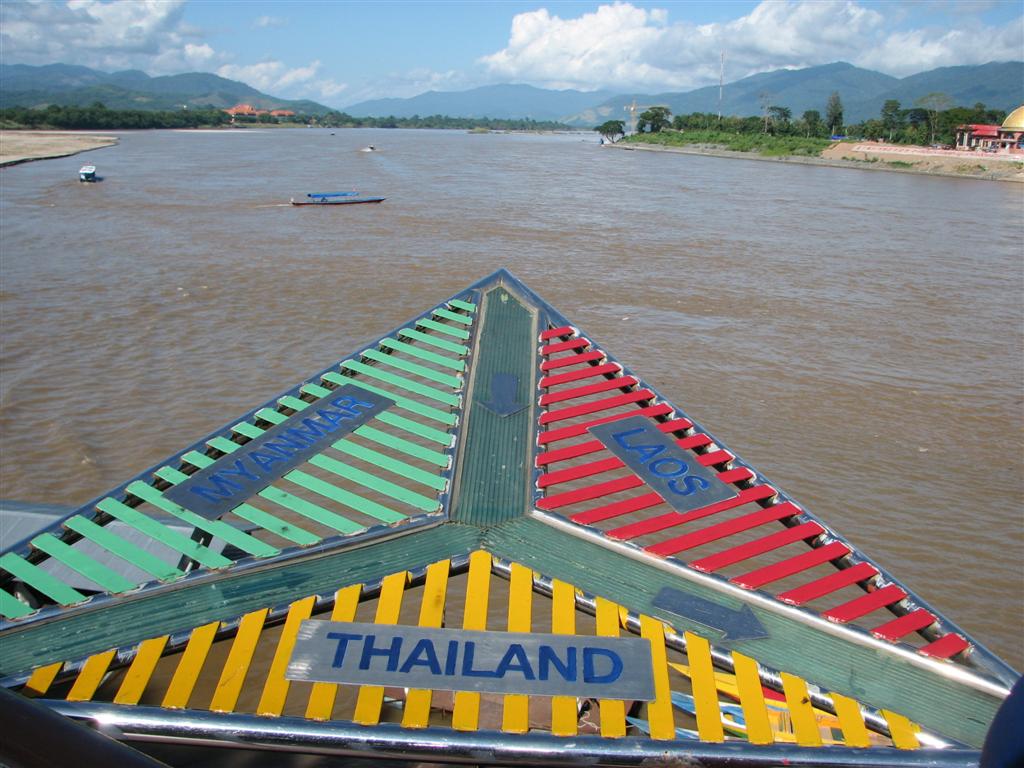
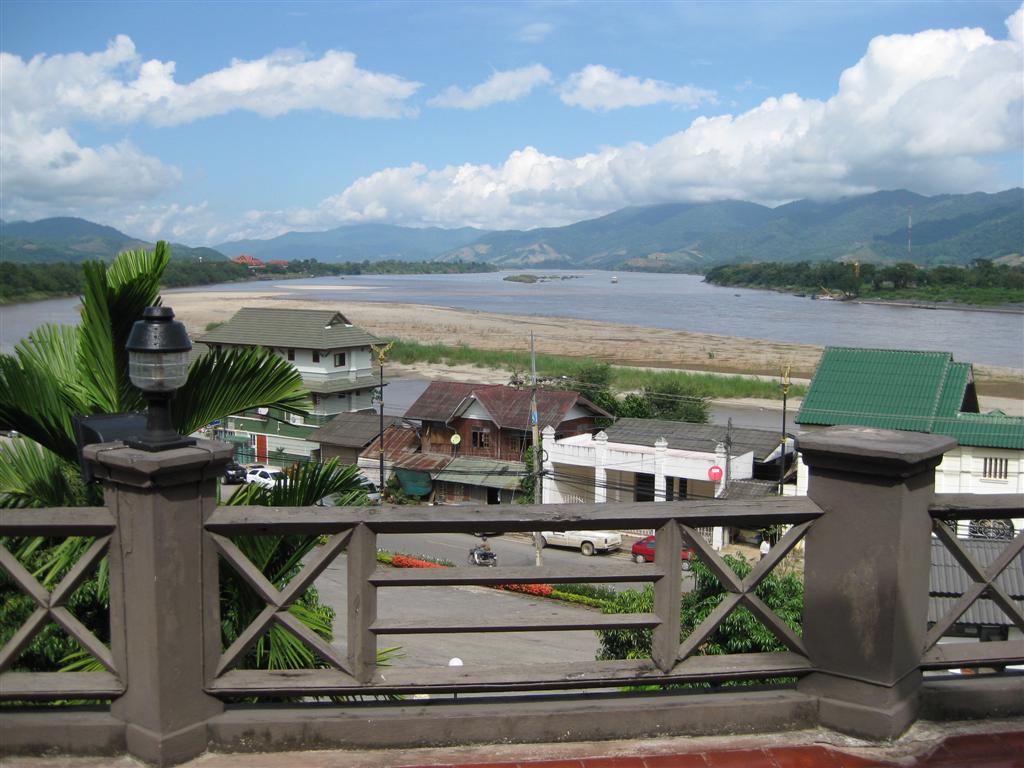
Golden Triangle
Outside of the restaurant, a woman and her young sister were
selling soap carvings ... in the shape of exotic flowers put in
lacquer containers.
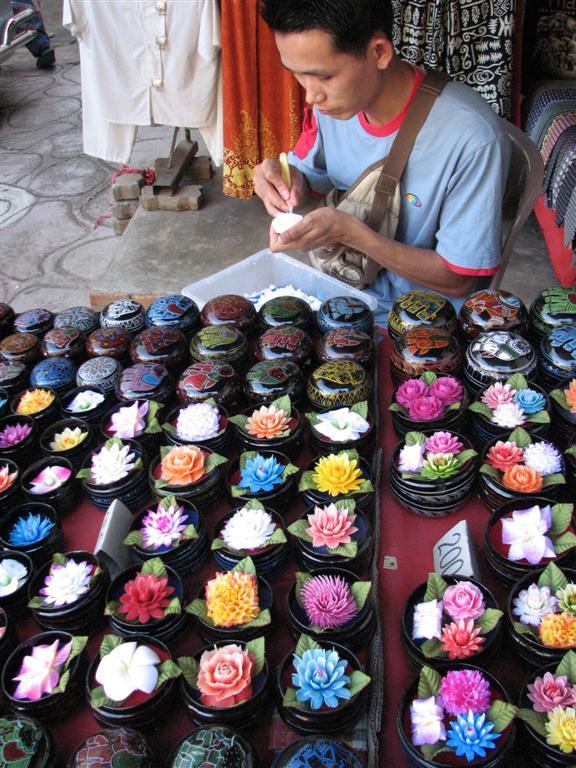
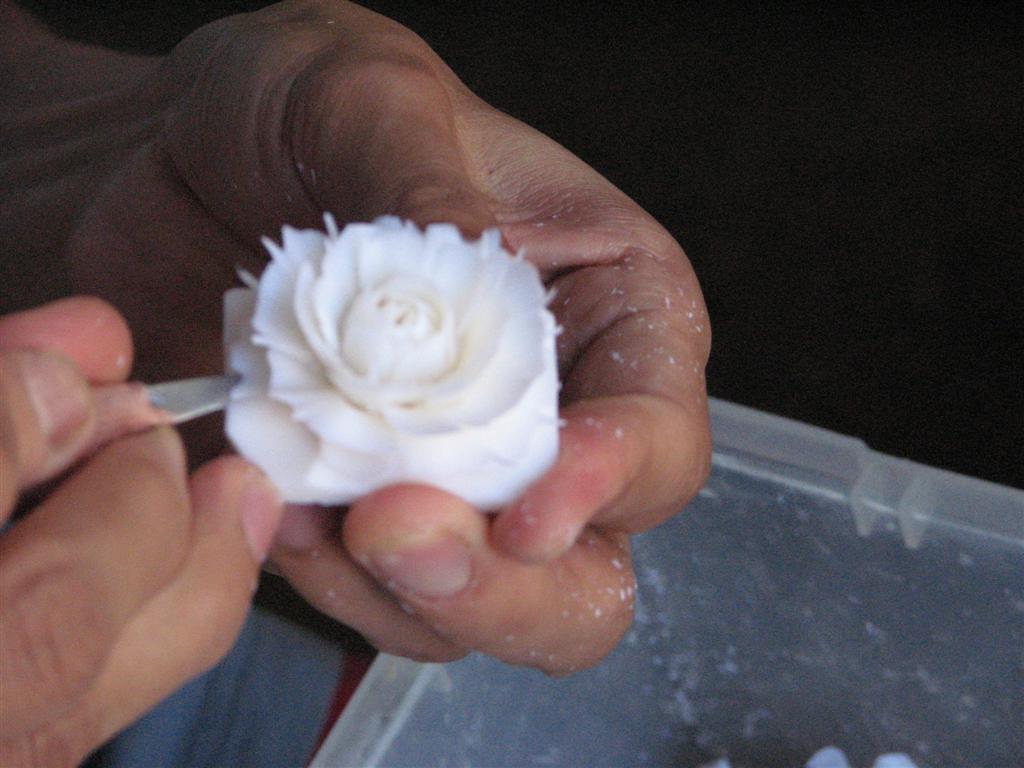 Soap Carving
Soap Carving
The Golden Buddha and Happy Buddha were on the banks of the
Mekong River we saw them next where we took even more pictures. The big new
building in Myanmar is a casino and I think Laos is wanting to build
a similar structure. Gambling like that is illegal in Thailand and I
think the locals are afraid of losing tourist. The Opium Museum was
next ... showing us how to cultivate and harvest this valuable crop.
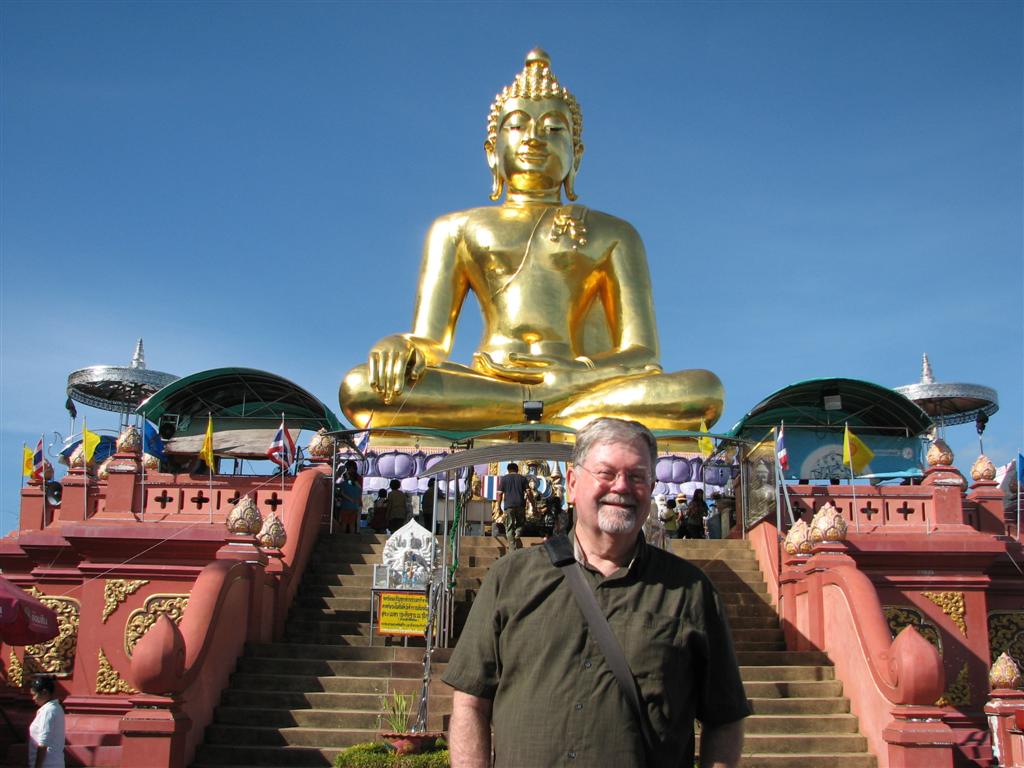
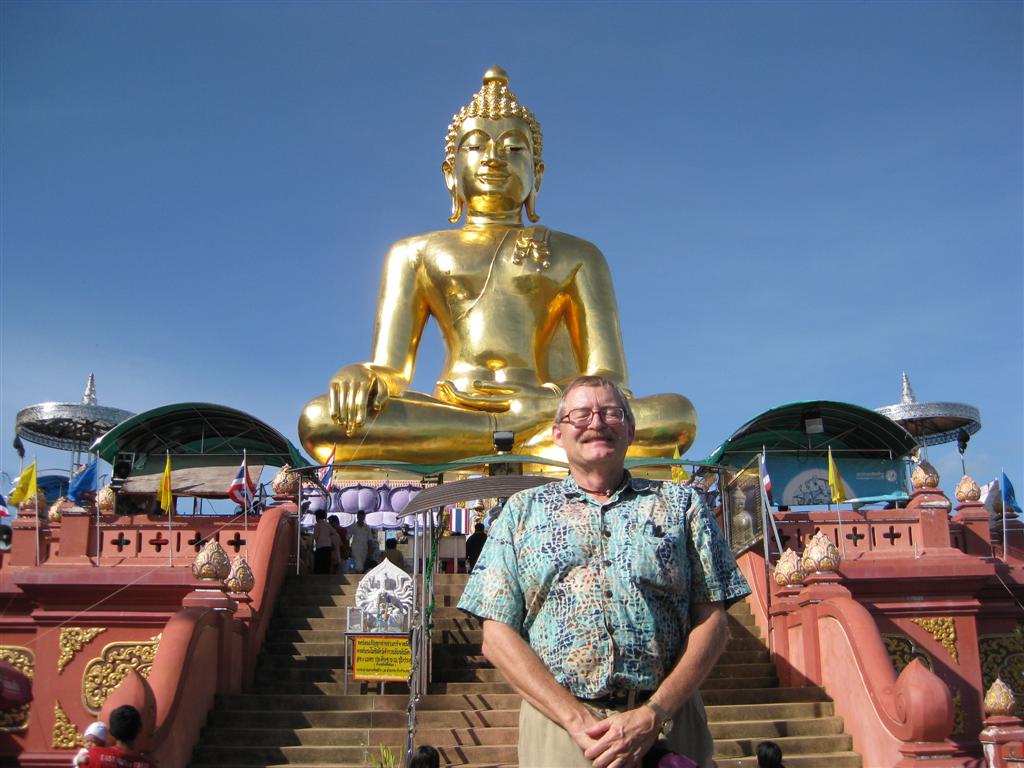
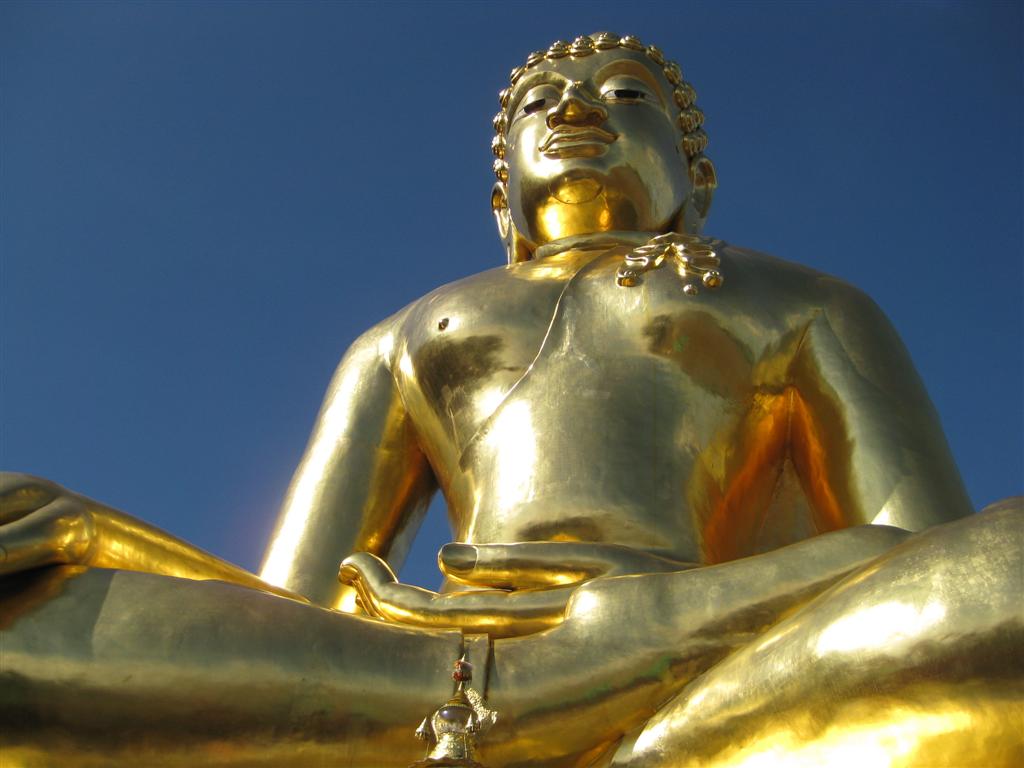
Golden Buddha
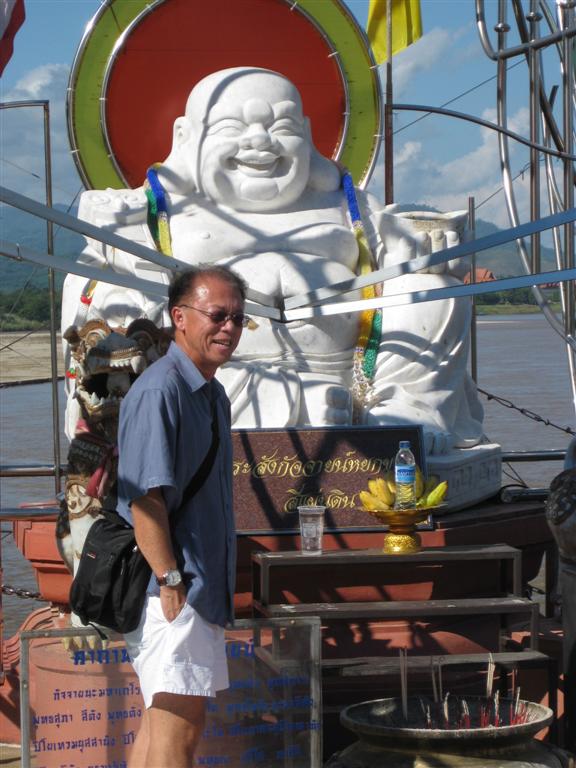
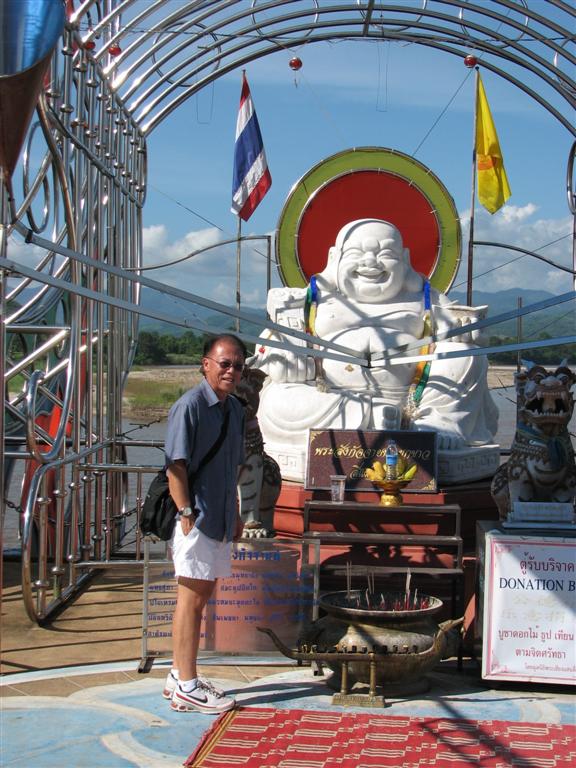
Happy Buddha
A short drive further north took us to the Myanmar border. I
think because of the late hour, our guide told us we could not go
across without passports and visas.
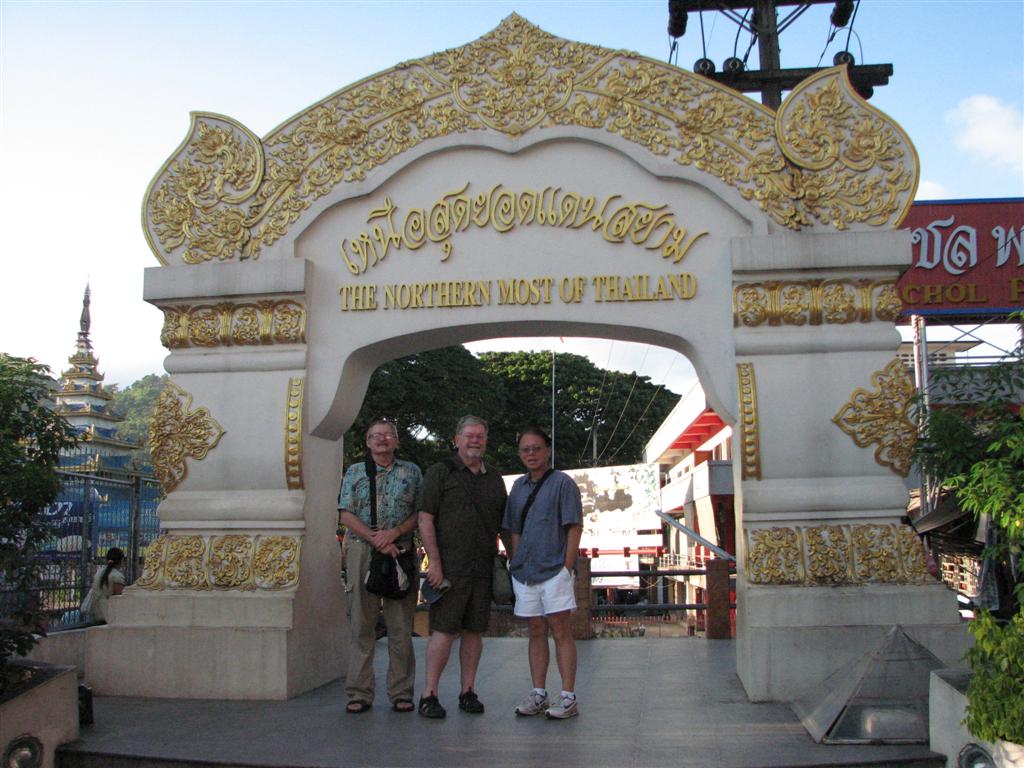
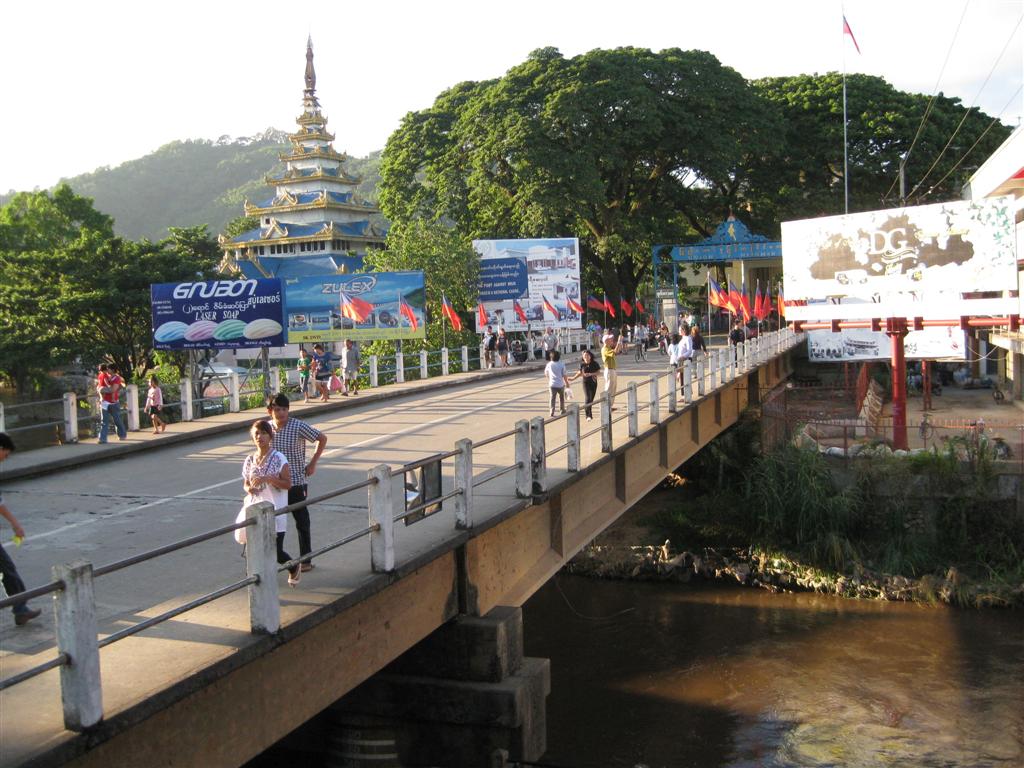
Myanmar frontier
There were lots of shops, many with Chinese imports, lining the
street. Our guide bought a round fried thing on a skewer. It was
bread dough around a short sausage (a Thai corn dog!).
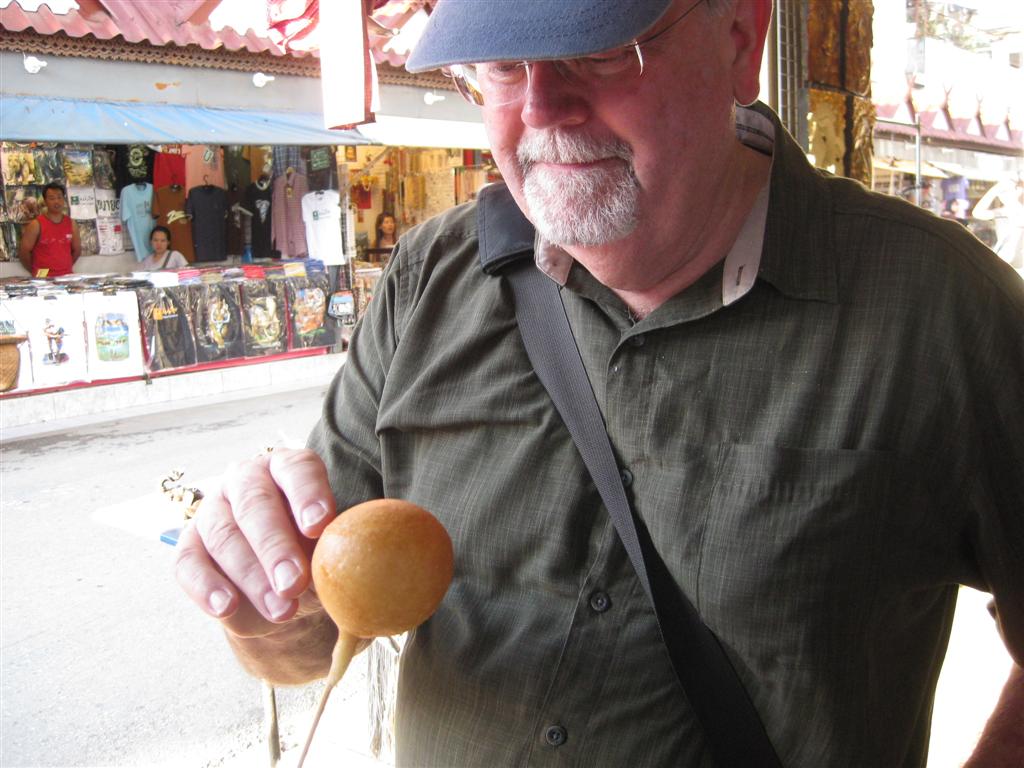
Thai "corn dog"
|
| October 25,
2009 Back to Bangkok Our 8:30PM flight to Bangkok
turned into a 11:30PM departure. We didn't get to our hotel
until after 1AM so we were pretty tired the next day!
We booked "Charlie", a Bangkok guide for the next 2 days to show
us around the historic religious and national sites. The
places are near each other, along the river.
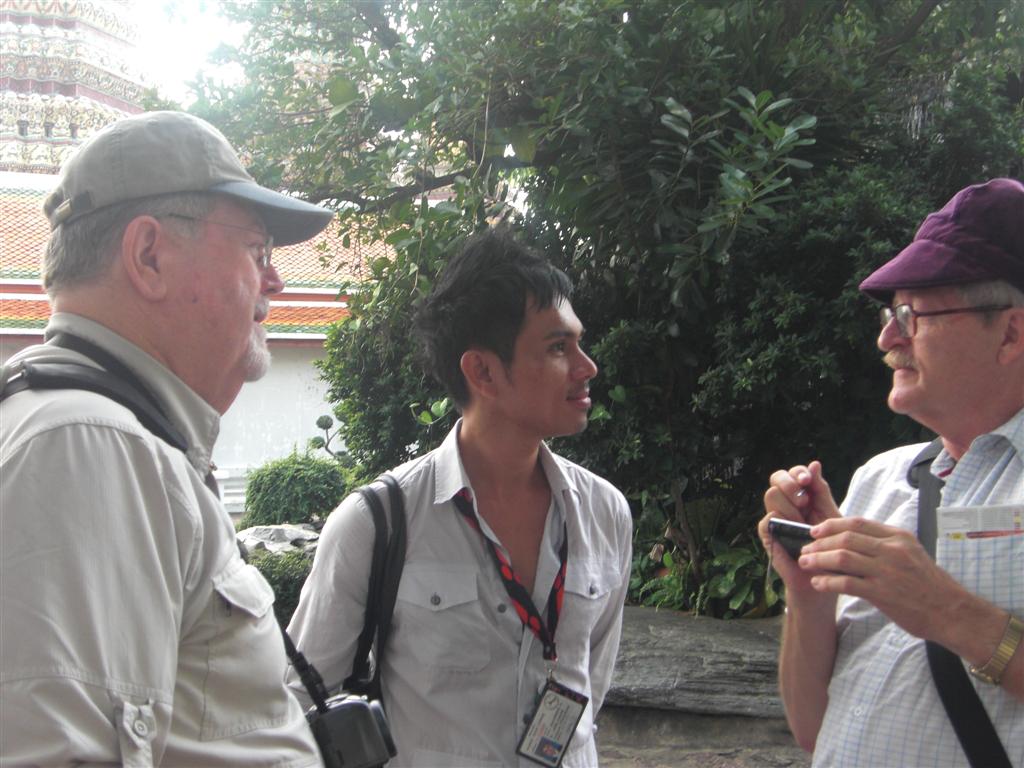
TomO and TomD with Charlie
The first stop was an exhibition hall which had been the former
throne room on the royal palace grounds. We stopped for coffee
at Doi Tung coffee shop. This coffee company came out of the
queen mother's effort to divert the poppy farmers to other crops ...
like coffee and macadamia nuts. I bought some coffee beans to
bring home.
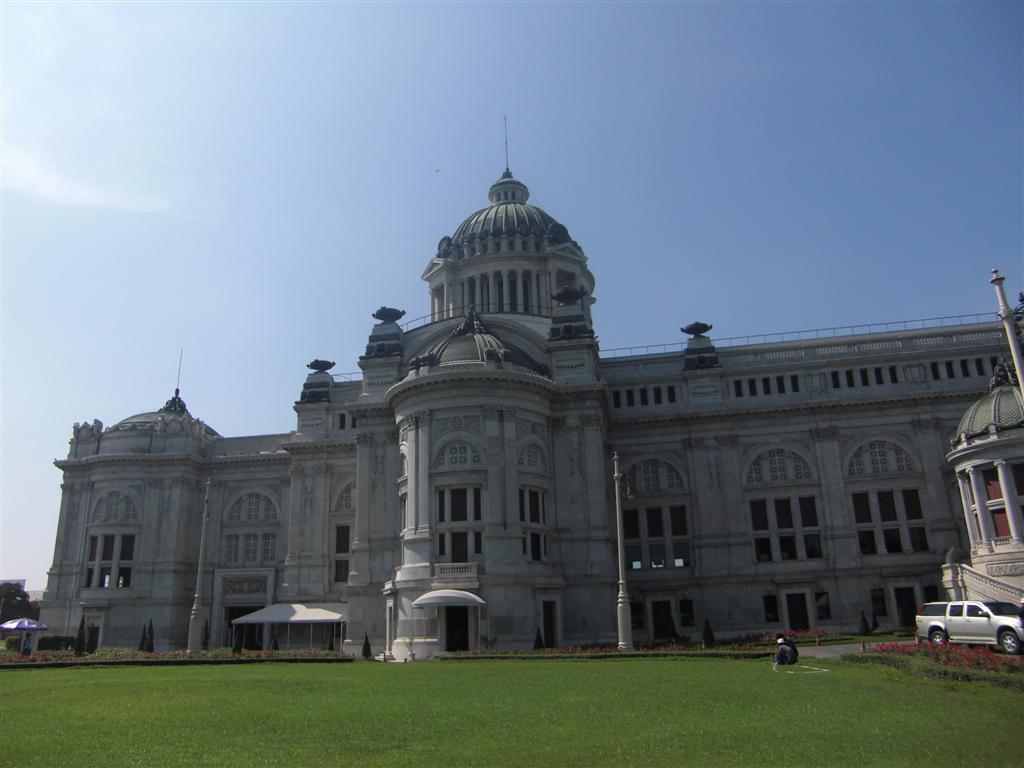
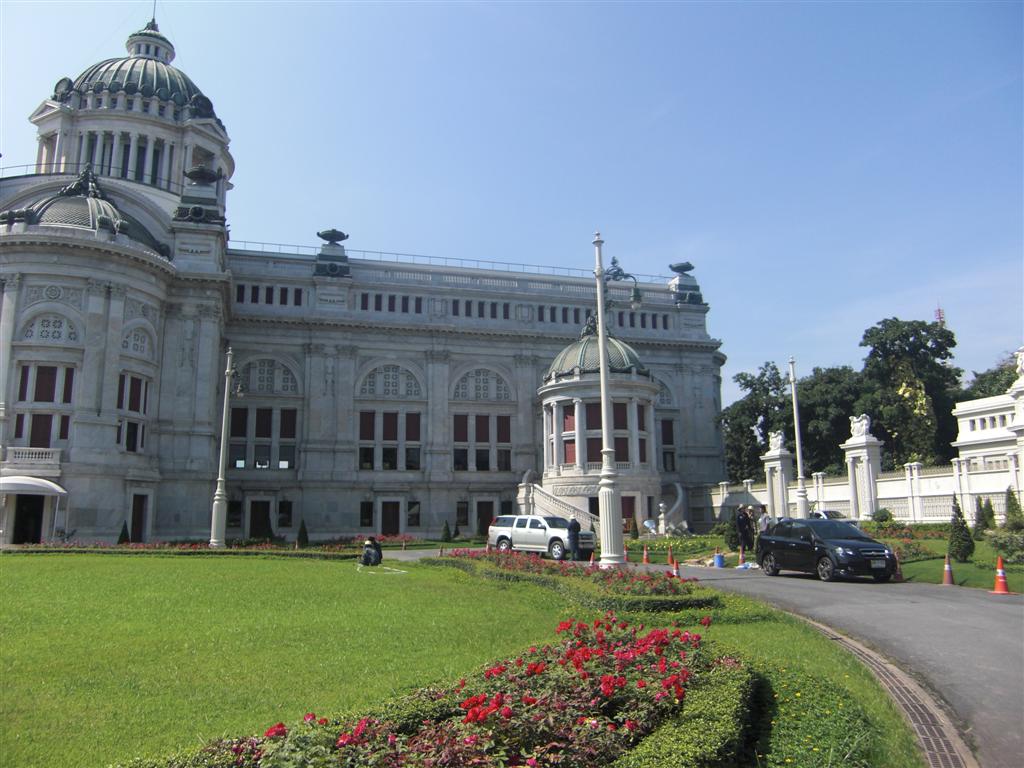
Then we went on to the royal palace grounds. Very
spectacular. The dress code is strict and our guide went to a
changing room to put on long pants! (And it was one of the
hottest days we've had. The structures are beautiful ... gold
and glimmering with jewels. The reclining Buddha is the 3rd
largest in Thailand. It is considered the most beautiful
in Thailand, if not the whole world. It is 138 feet long and 45 feet tall and
is constructed of brick and stucco, covered by gold leaf. It is
located at Bangkok’s oldest and largest temple, “Wat Po”, or Temple
of the Reclining Buddha


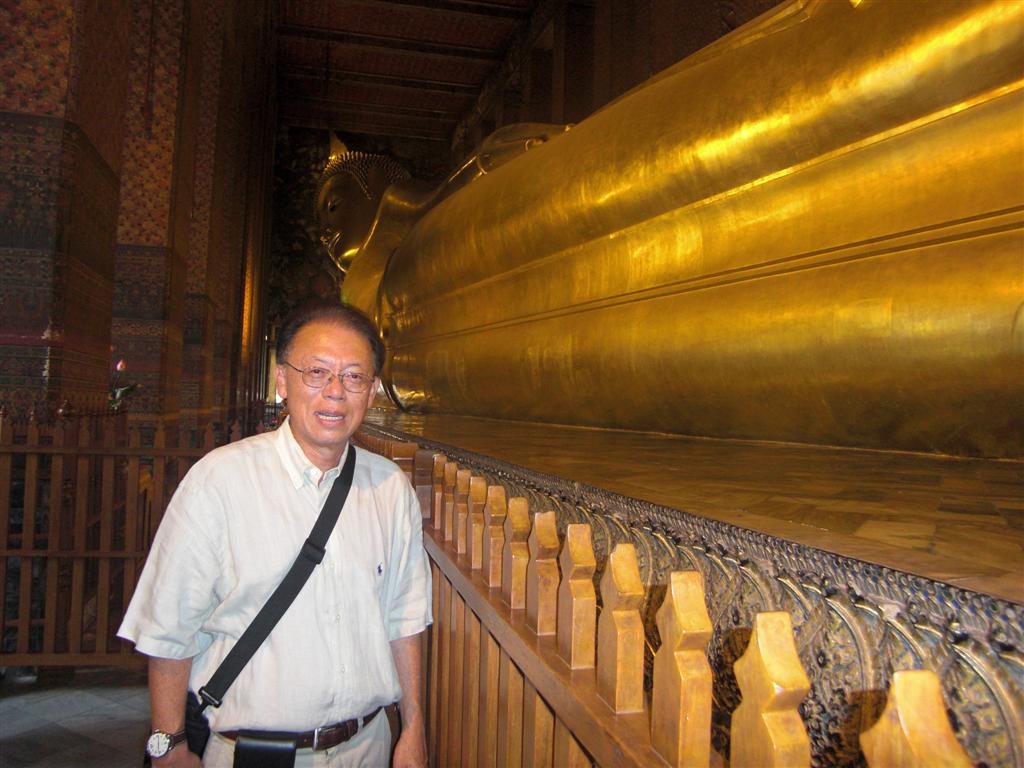
Reclining Buddha

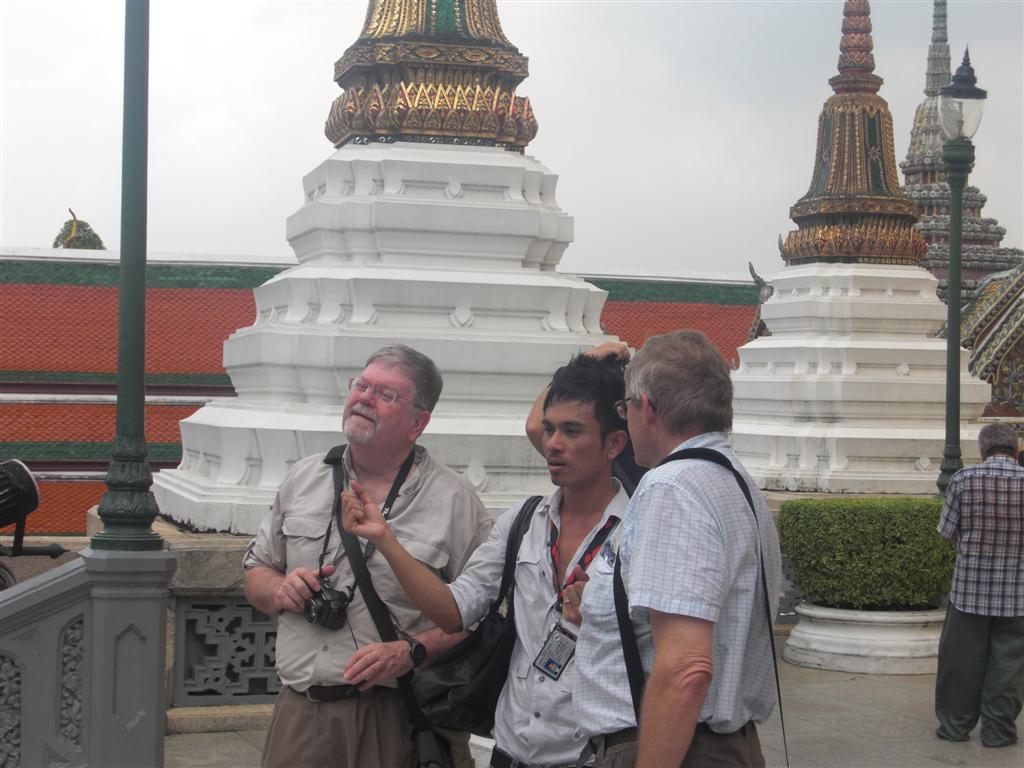
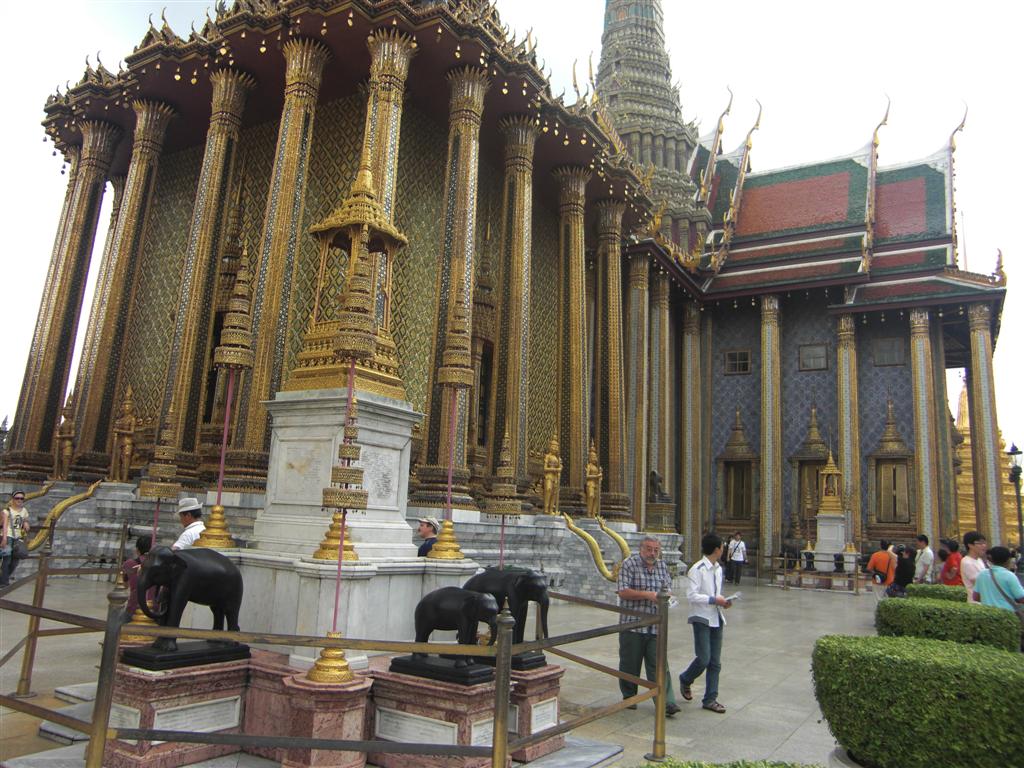
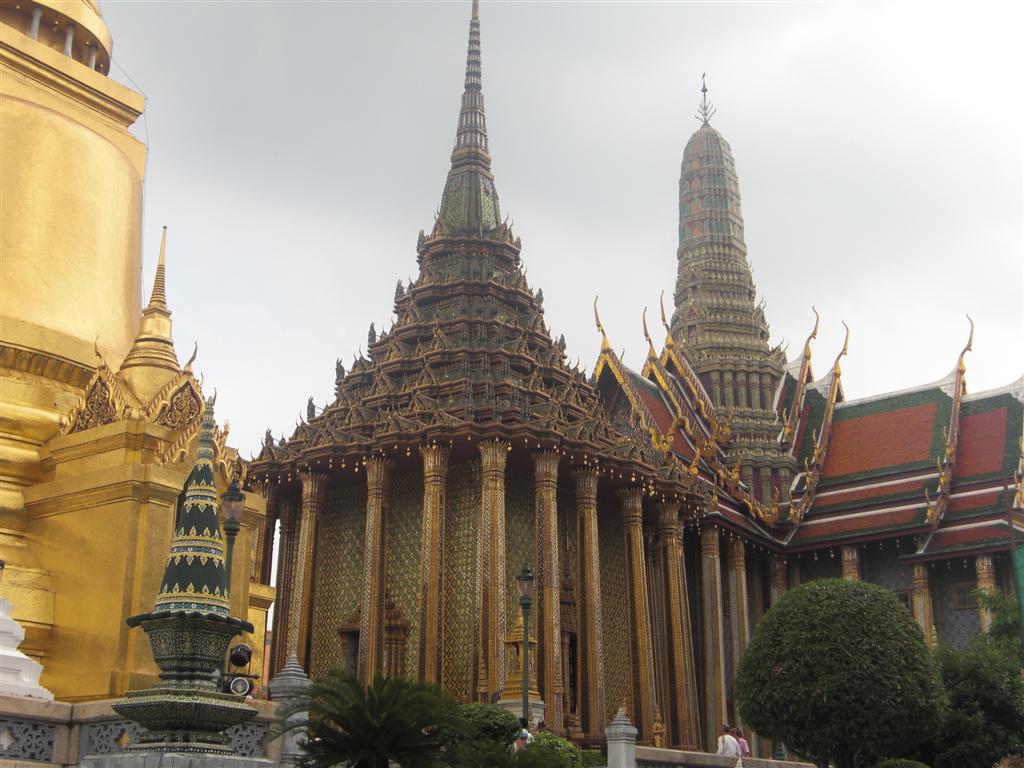 Royal Palace
Royal Palace
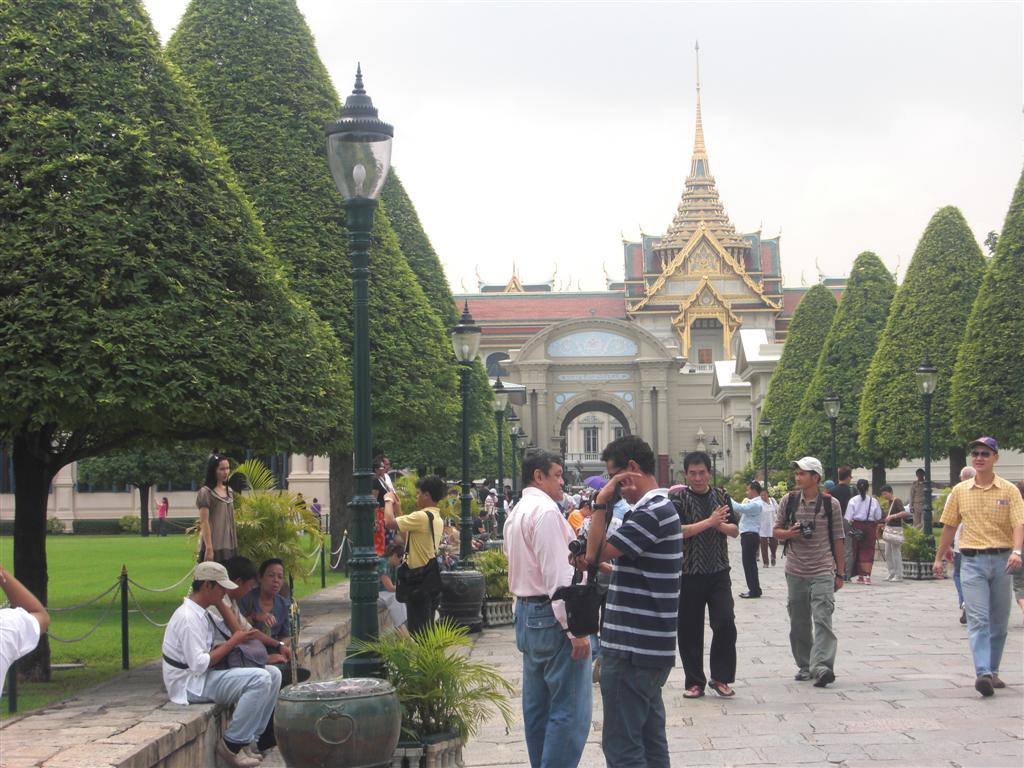
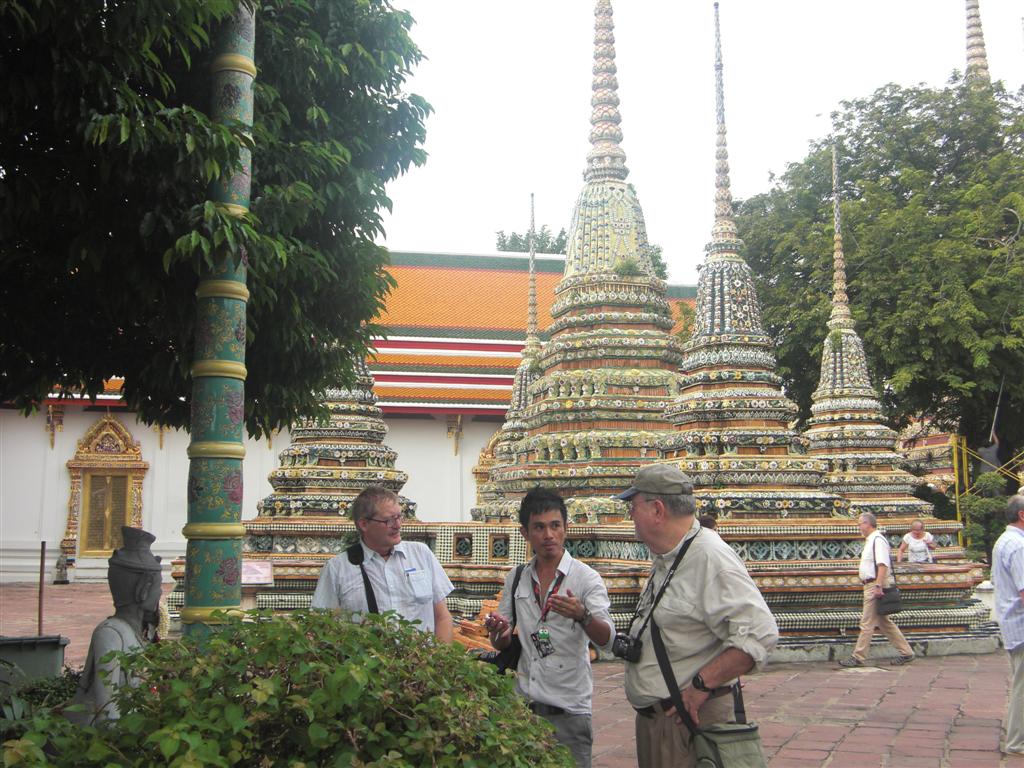


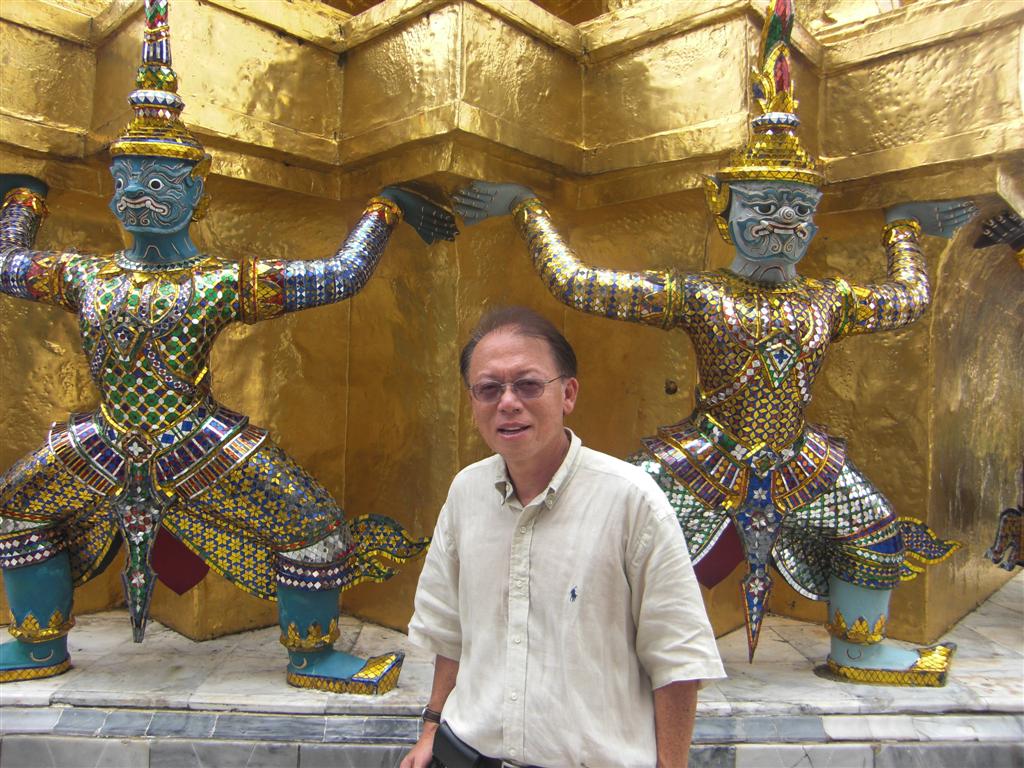
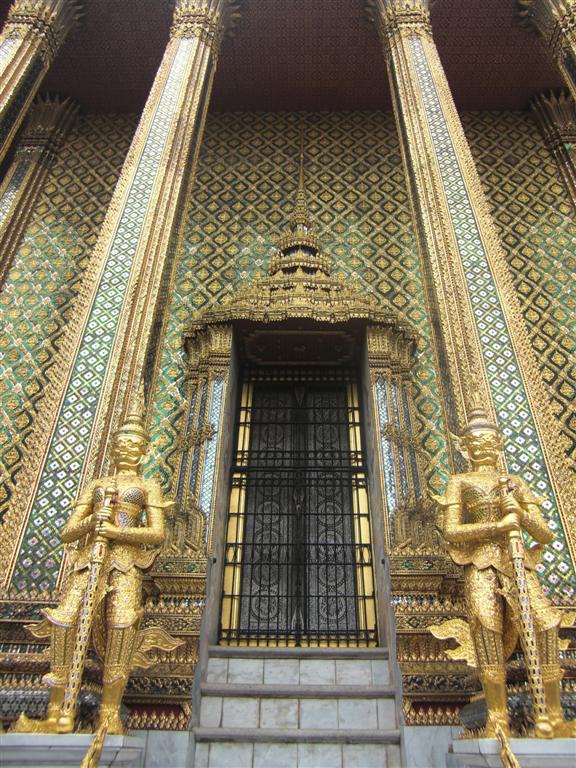
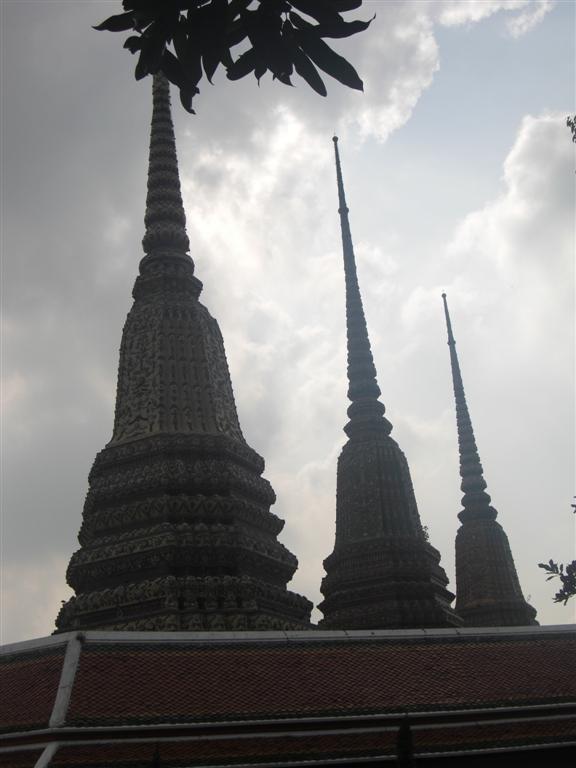
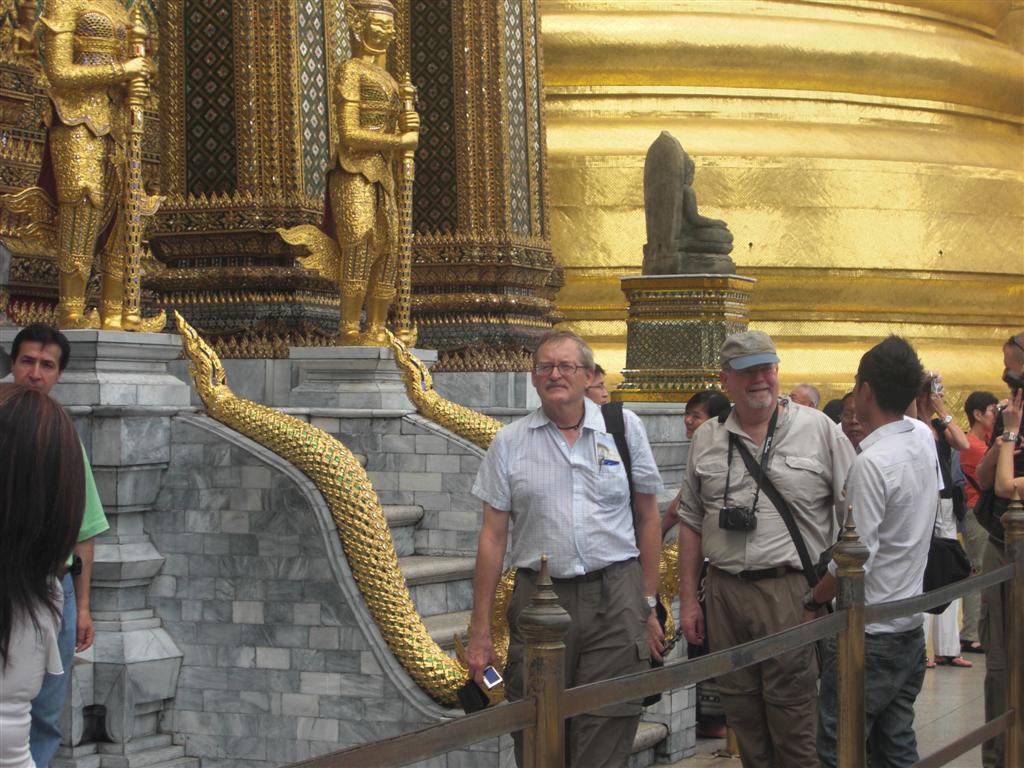
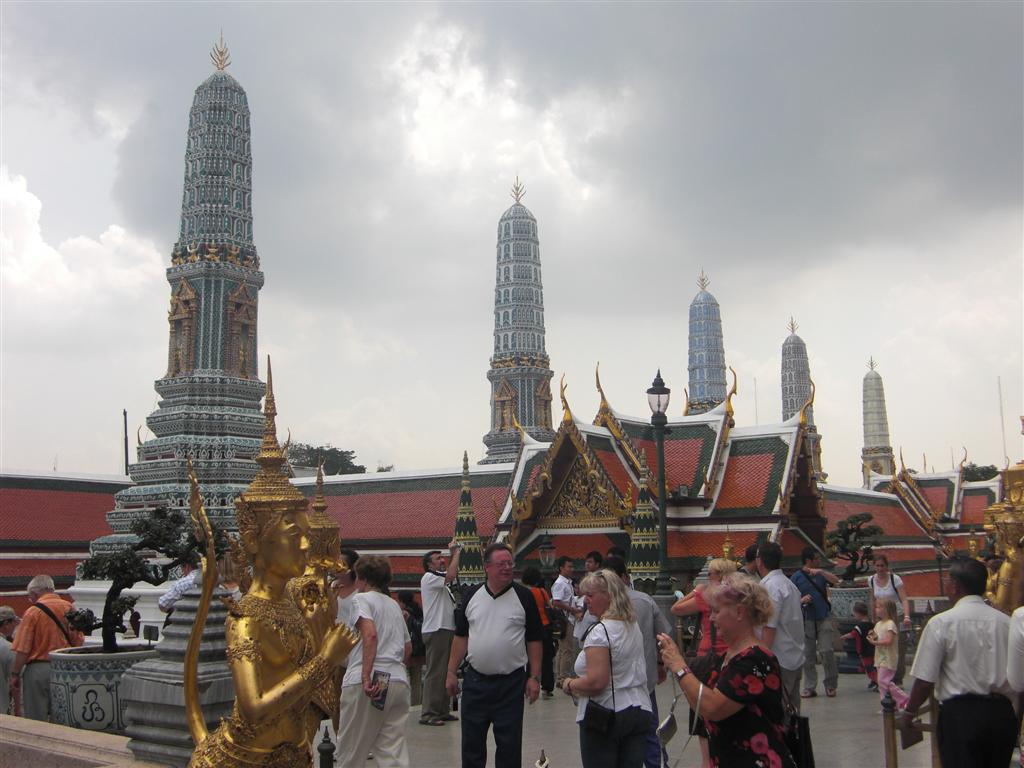
Elsewhere was the Jade Buddha. It had been covered by
plaster for many years and at one point they went to repair the nose
and discovered jade beneath.
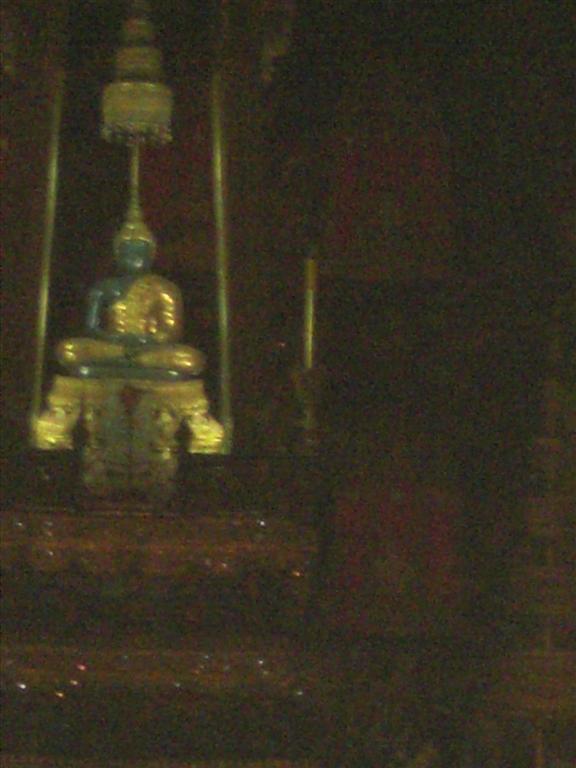
Jade Buddha

Ron writing wishes on red cloth
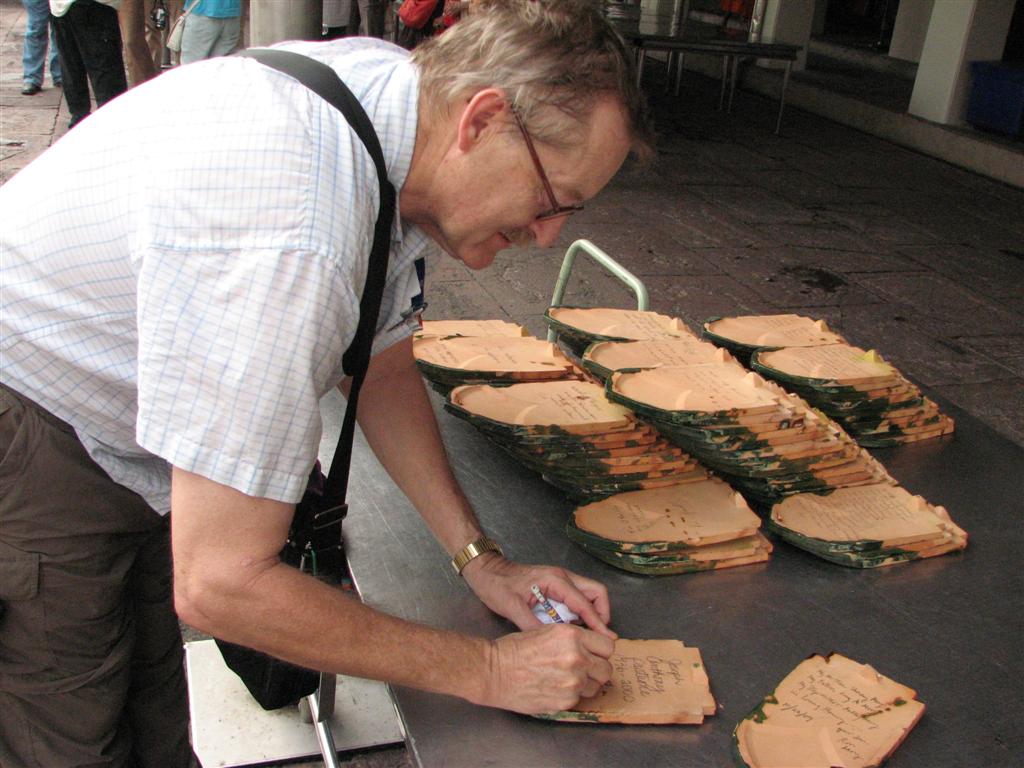
TomD writing on roof tile

TomO giving lotus flower to monks
We had lunch at a funky Supatra restaurant on the River. We
stayed in doors, but you also eat on the upper deck with better
views of the Temple of Dawn on the other side. Mango shakes
were popular here!
Our guide engaged a fast
"motorized long tailed-boat"
to take up the river and up one of the main canals ("klong") to the
Royal Barge Museum. This was refreshing on a hot day! At
one point we bought a loaf a bread and pulled off pieces to fee the
fish.
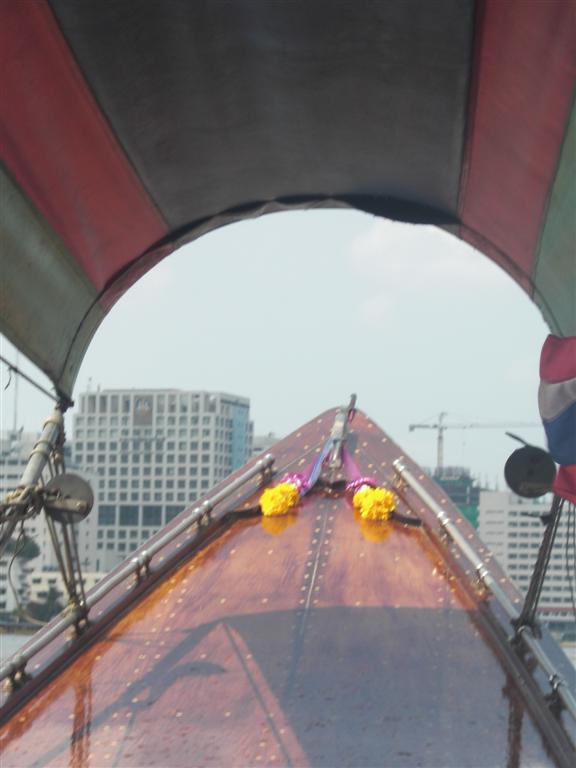
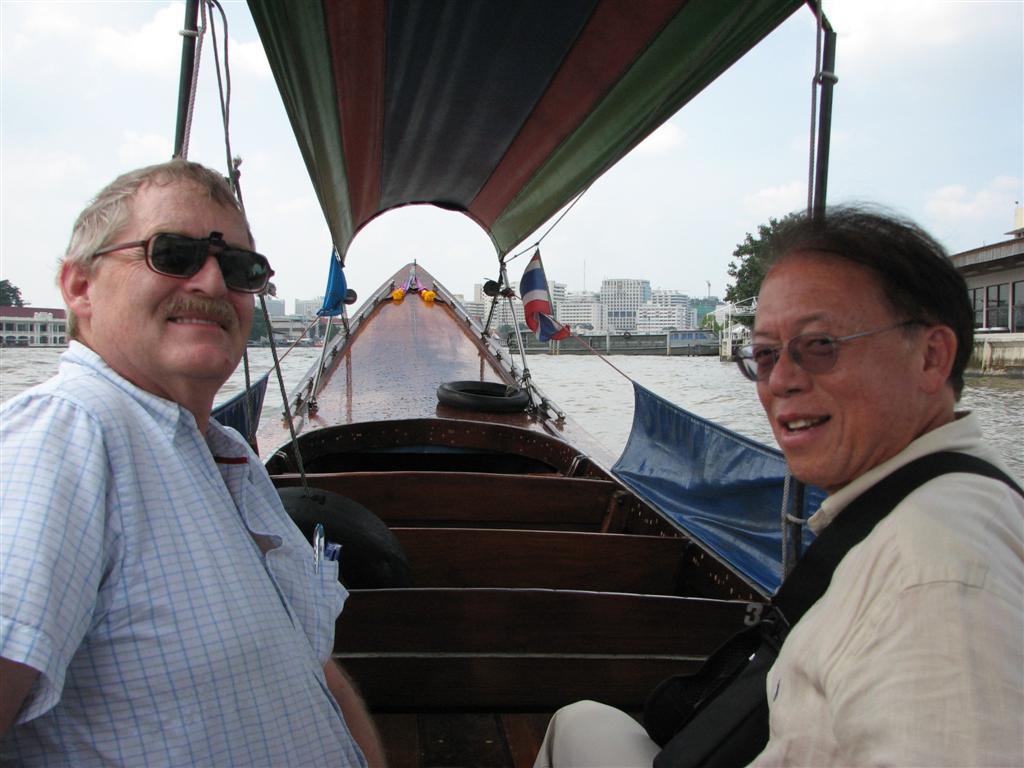 On
the long motor boat On
the long motor boat
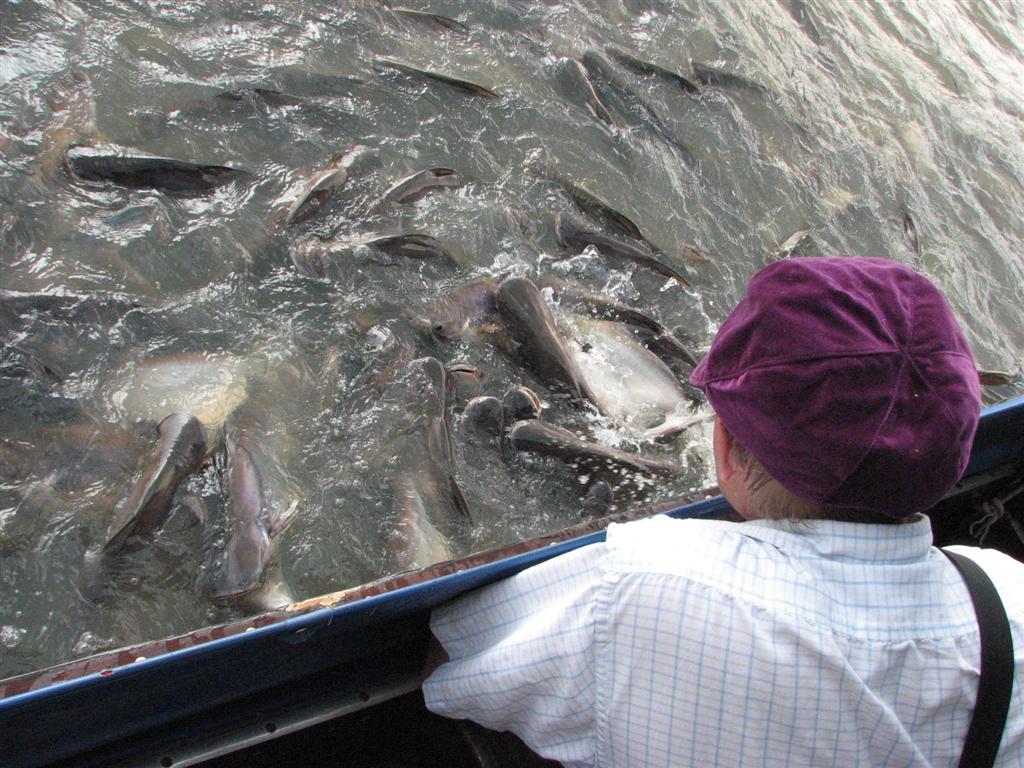
Feeding the fish
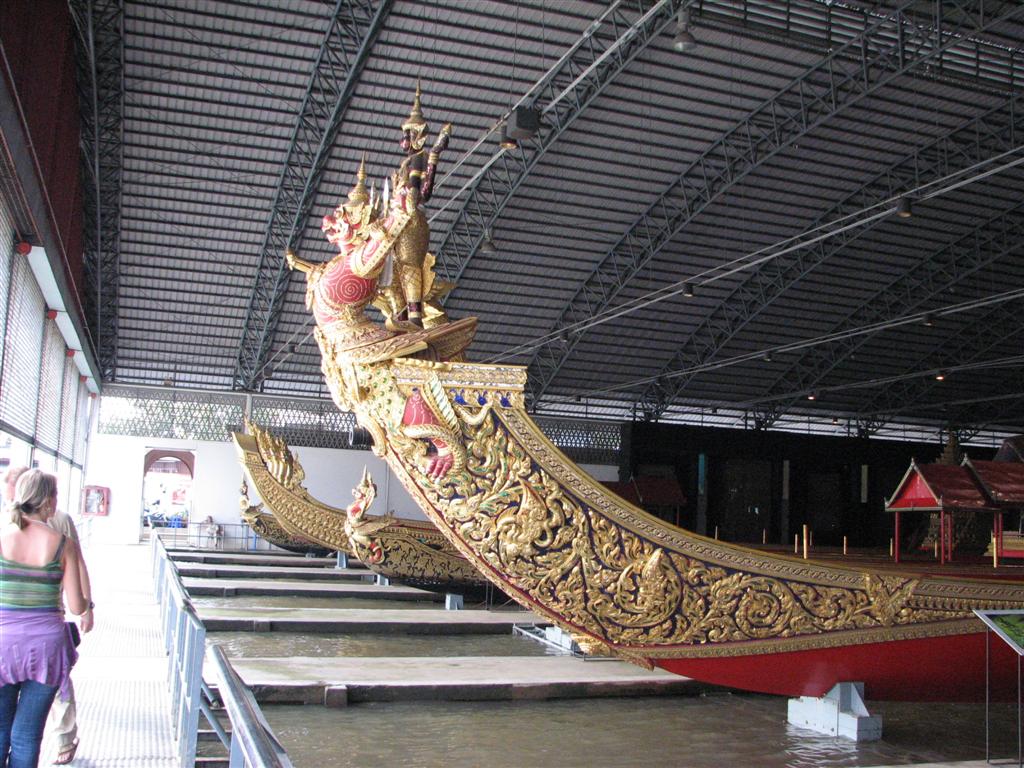
Bow of Royal Barge (one of many)
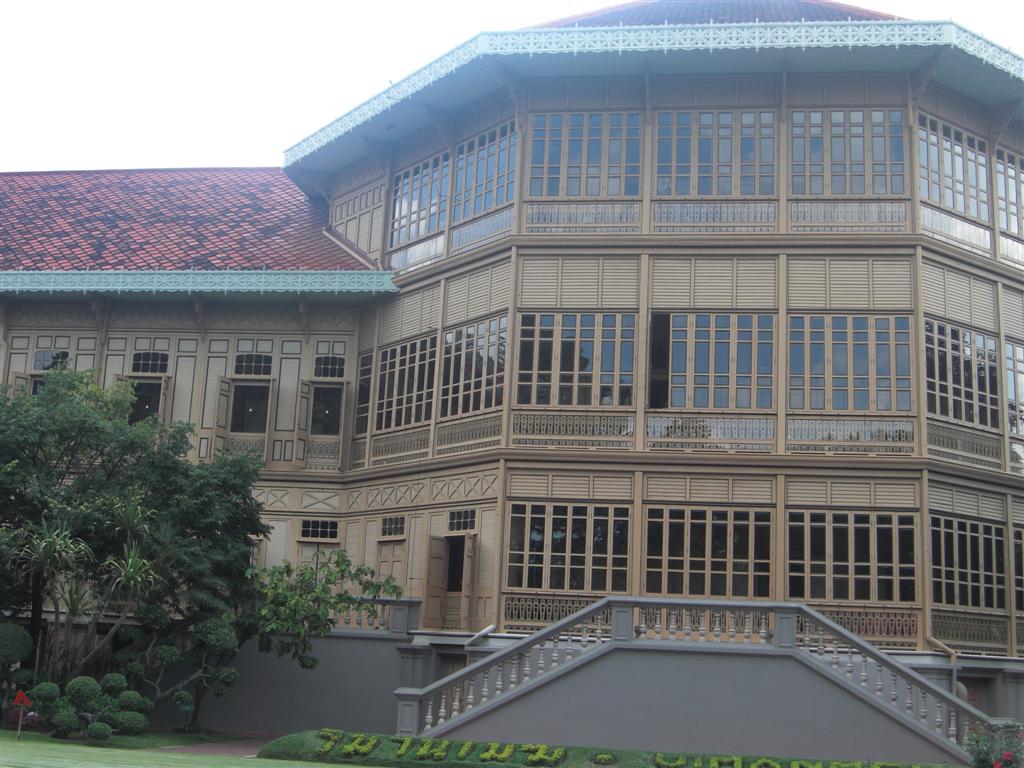
Teak Palace, built ca 1906
We paid 20 baht (65 cents) to dock at the "Wat Arun”, or Temple
of The Dawn. We climbed up high for great panoramic views of
the river and Bangkok.
At the end of the second day of touring, we went to the
Suan Pakkad Palace Museum where we saw artifacts from ancient
Thailand which consisted of painted pottery, the cord-marked
pottery, bronze axe, bronze spearhead, bronze necklace, precious
stone bracelet and glass beads. It is also well known for the
traditional Thai houses that were dismantled and rebuilt on this
spot (a cabbage field "Suan Pakkad").

Nearby was the Jim Thompson house and museum. Thompson was
an American architect who moved to Thailand after World War II
(serving in the OSS). He helped revive the silk industry and
preserved some classic Thai wood homes, by moving 6 of them together
and jointing them together to make his home. He also collected
many fine Asian antiques. He disappeared mysteriously in
Malaysia in 1967 at the age of 61.
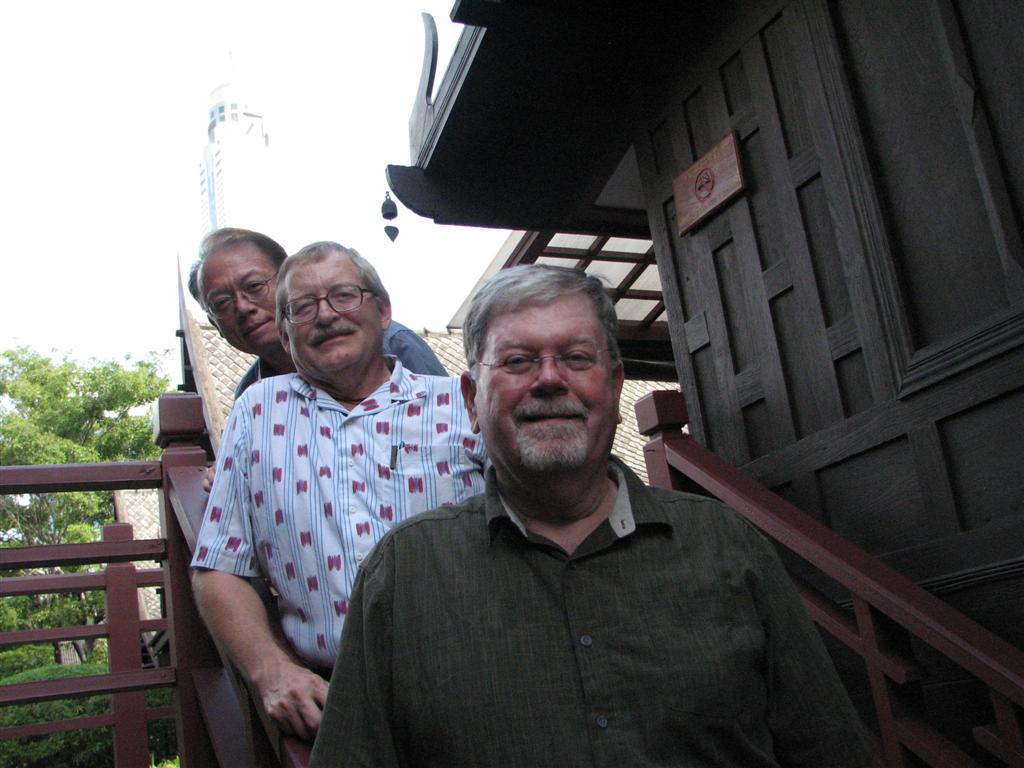
J
im Thompson House
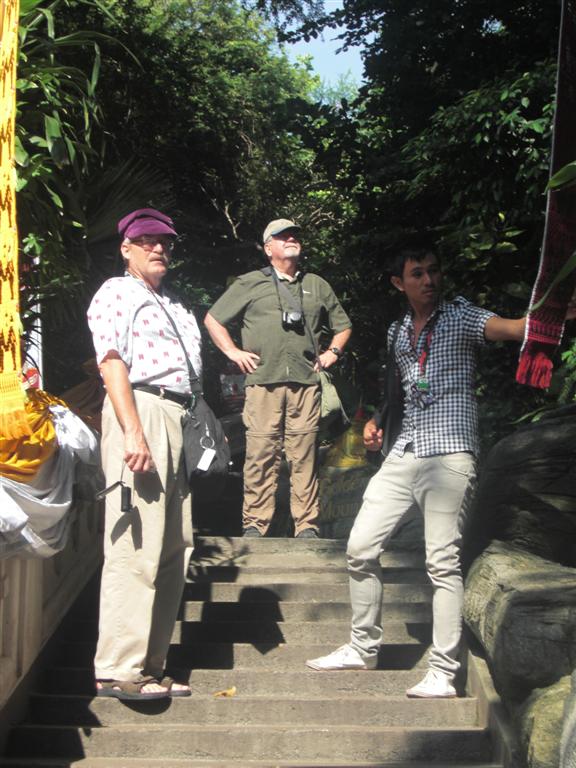
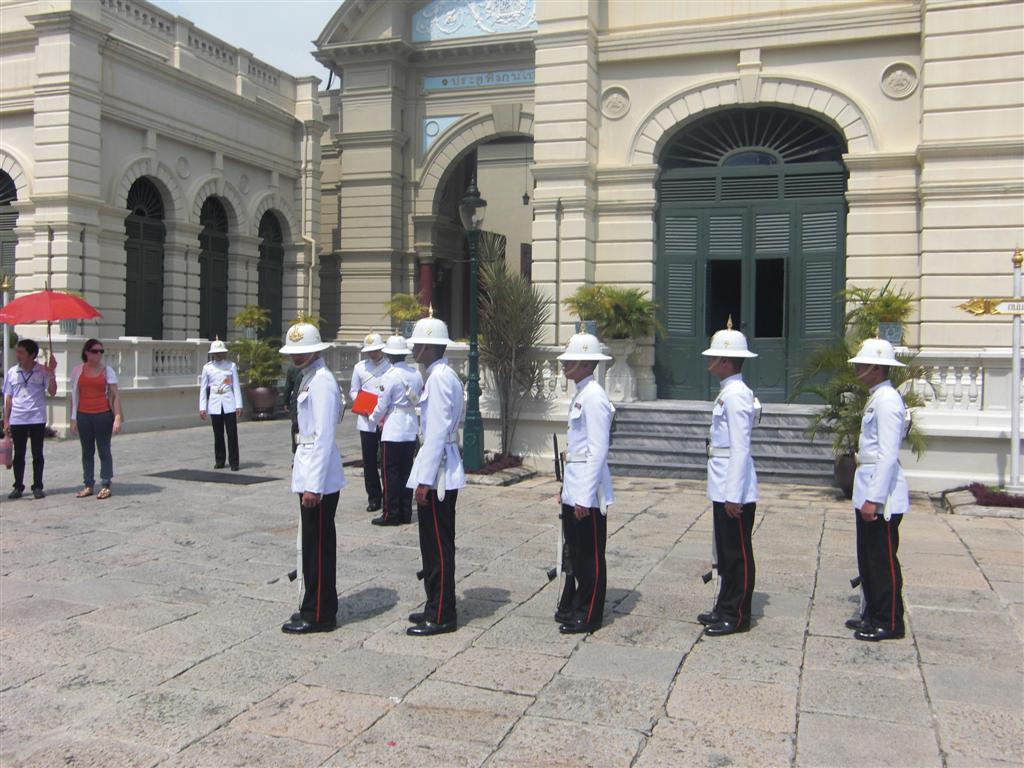
Palace guard
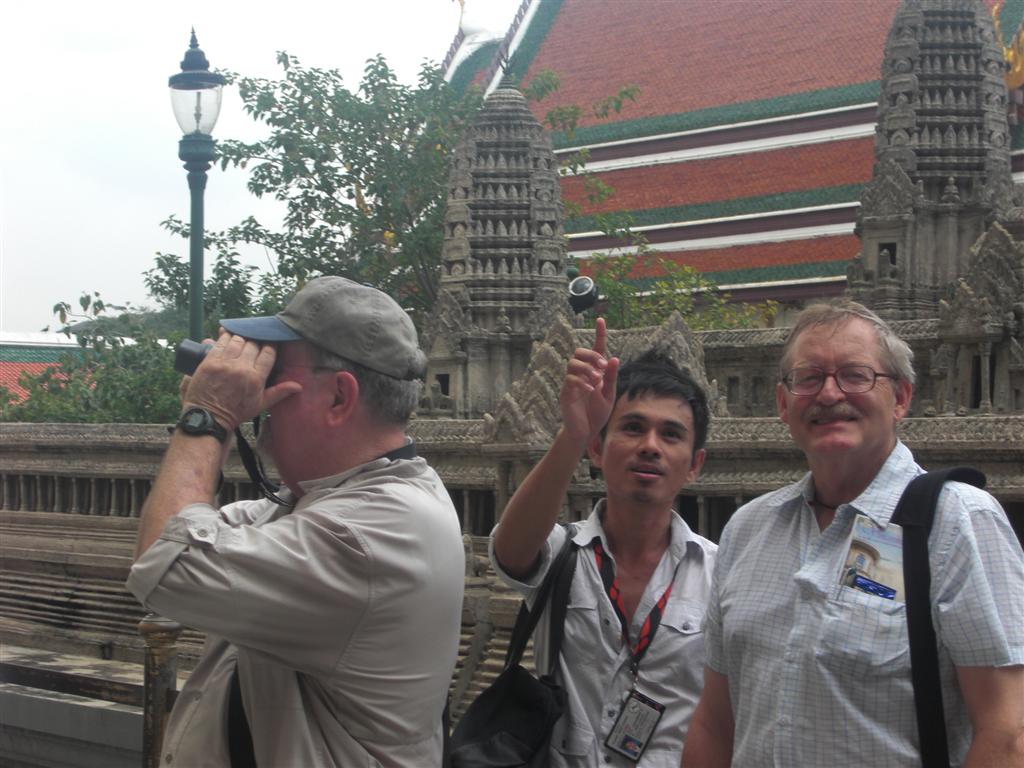 Suan Pakkad Palace
Suan Pakkad Palace
Our Bangkok guide was Charlie. We liked him very much and would
recommend him to Thailand travellers. You can reach him:
CHALERMCHAI DUANGSUWAN (Charlie)
E-Mail: chalie_ybkk@hotmail.com
Mobile phone: +66 (0)83
7016569
Independent Licensed
Tourist Guide THAILAND
www.philguidebkk.com
Click here to see the rest of the trip! |
This site was last updated
08/18/10
|
